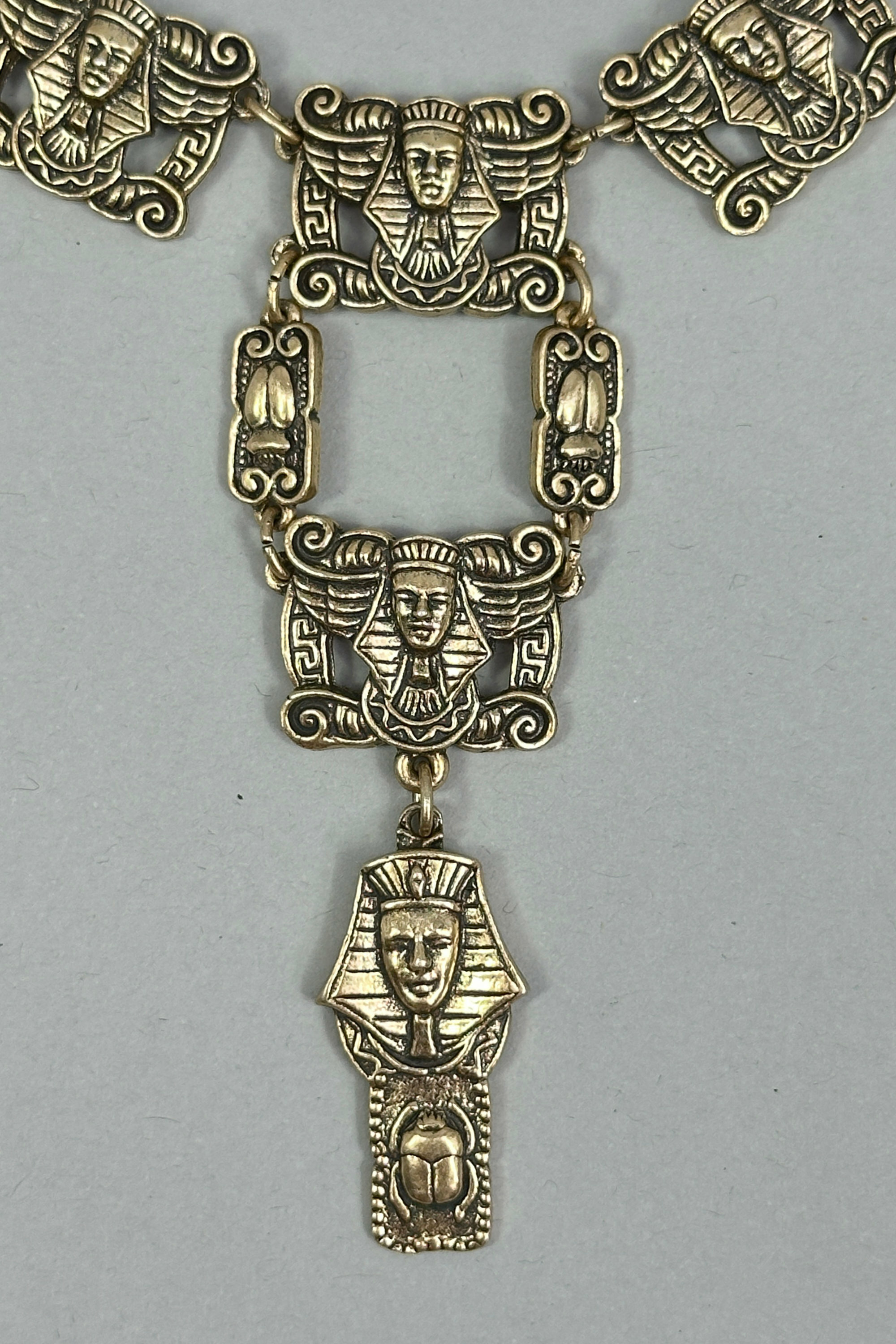
Edwardian Transitional necklace c1920
Price: £75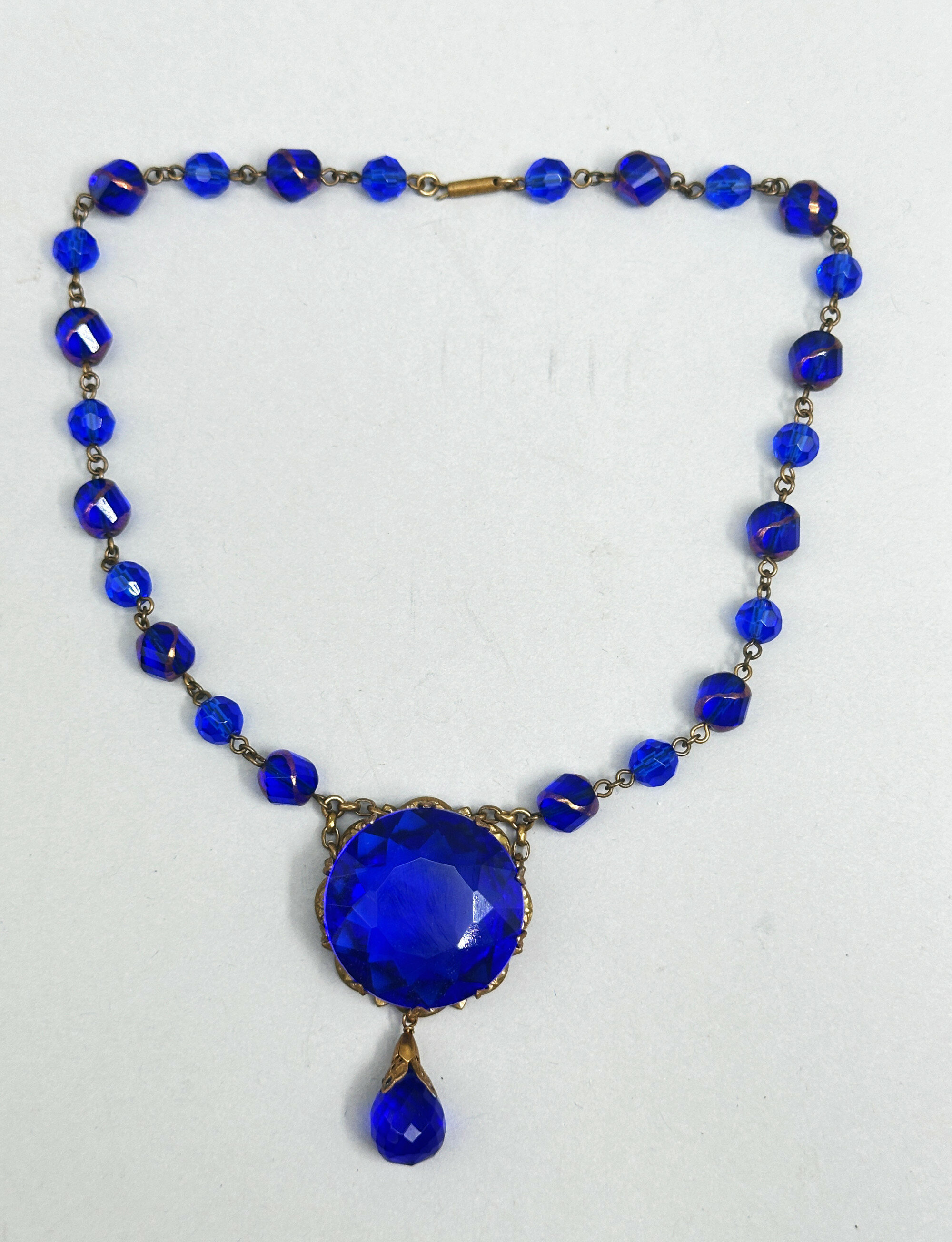
Art Deco necklace with blue paste stones 1930s
Price: £45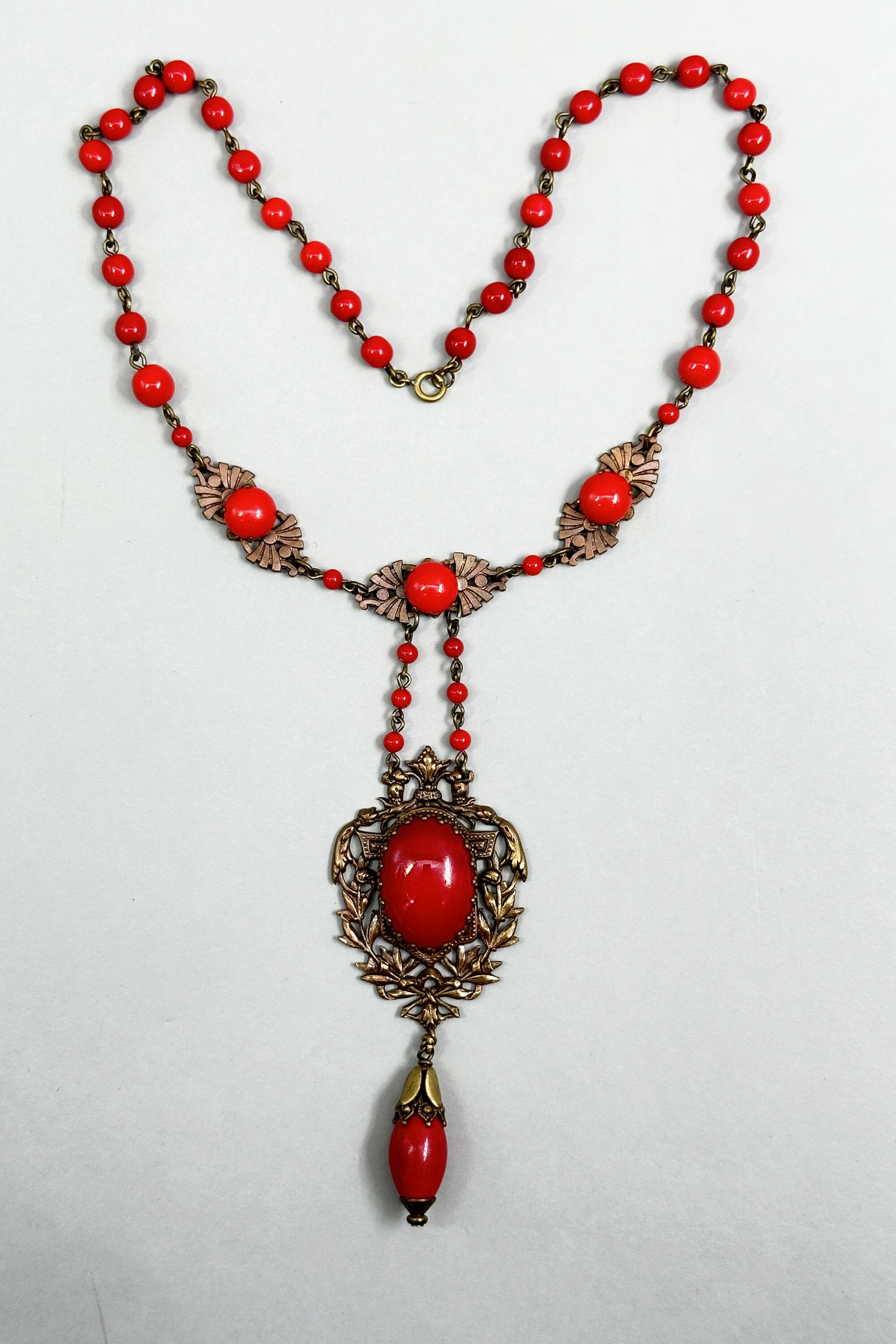
Victorian style Czech glass statement necklace c1930
Price: £40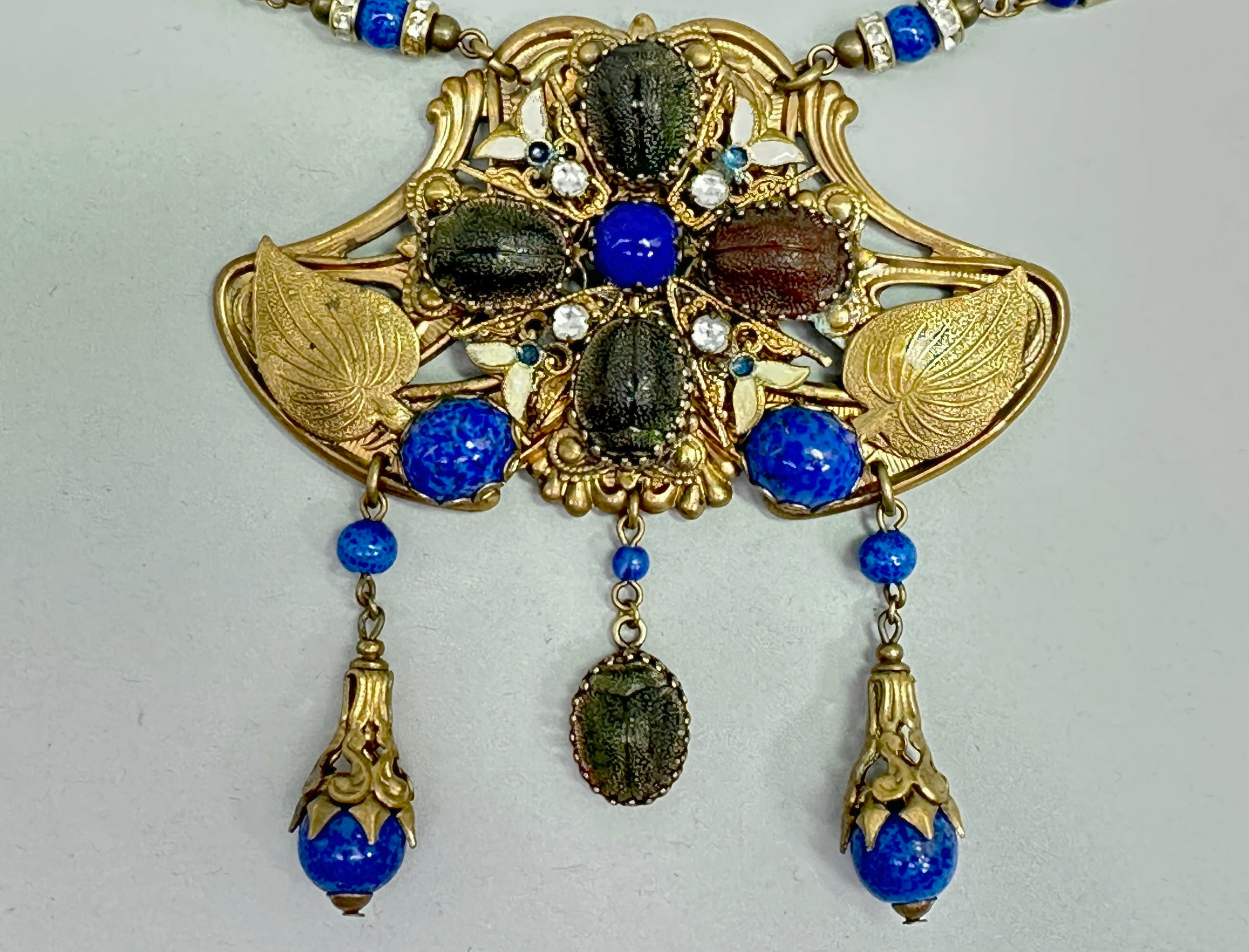
Egyptian Revival Czech statement necklace set with real beetles c1920
Price: £150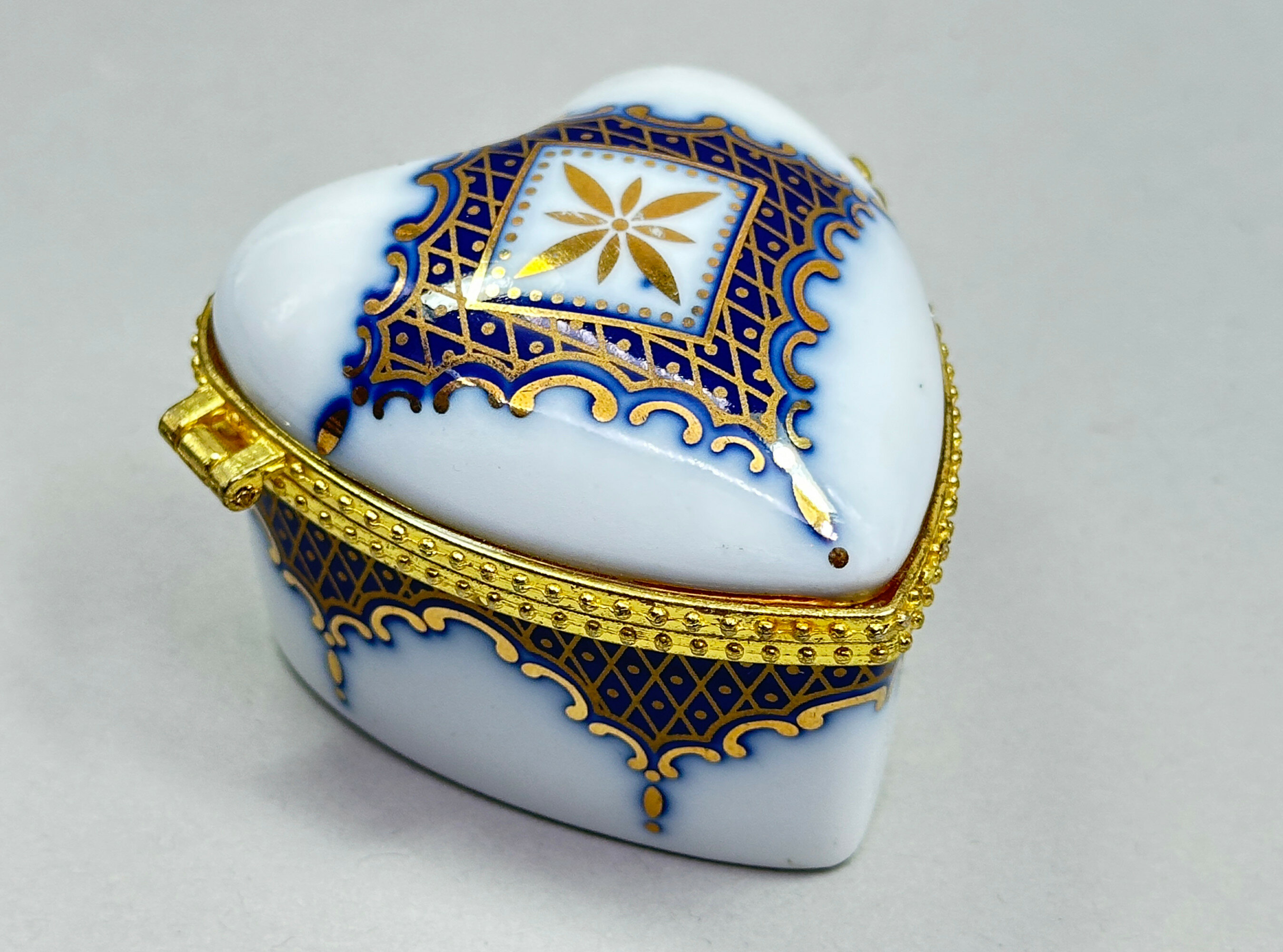
Oriental porcelain European Style Heart Shape Box and Cover, OC & CO, late C20th
Price: £15
Chinese carving of a Beggar, possibly Shoushan stone, Soapstone stand, C20th
Price: £55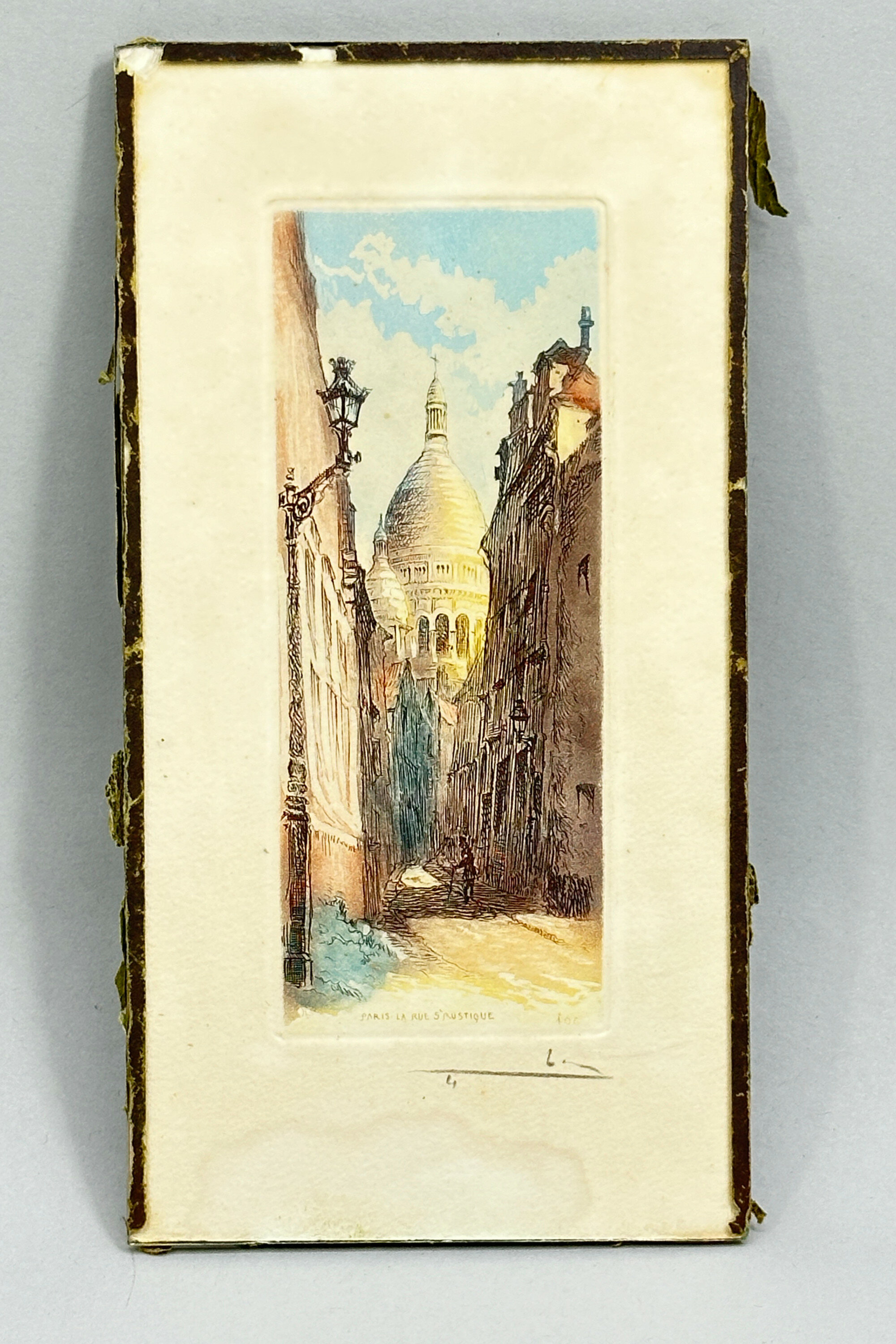
French Orientalist etching aquatint - Paris La Rue Saint Rustique
Price: £35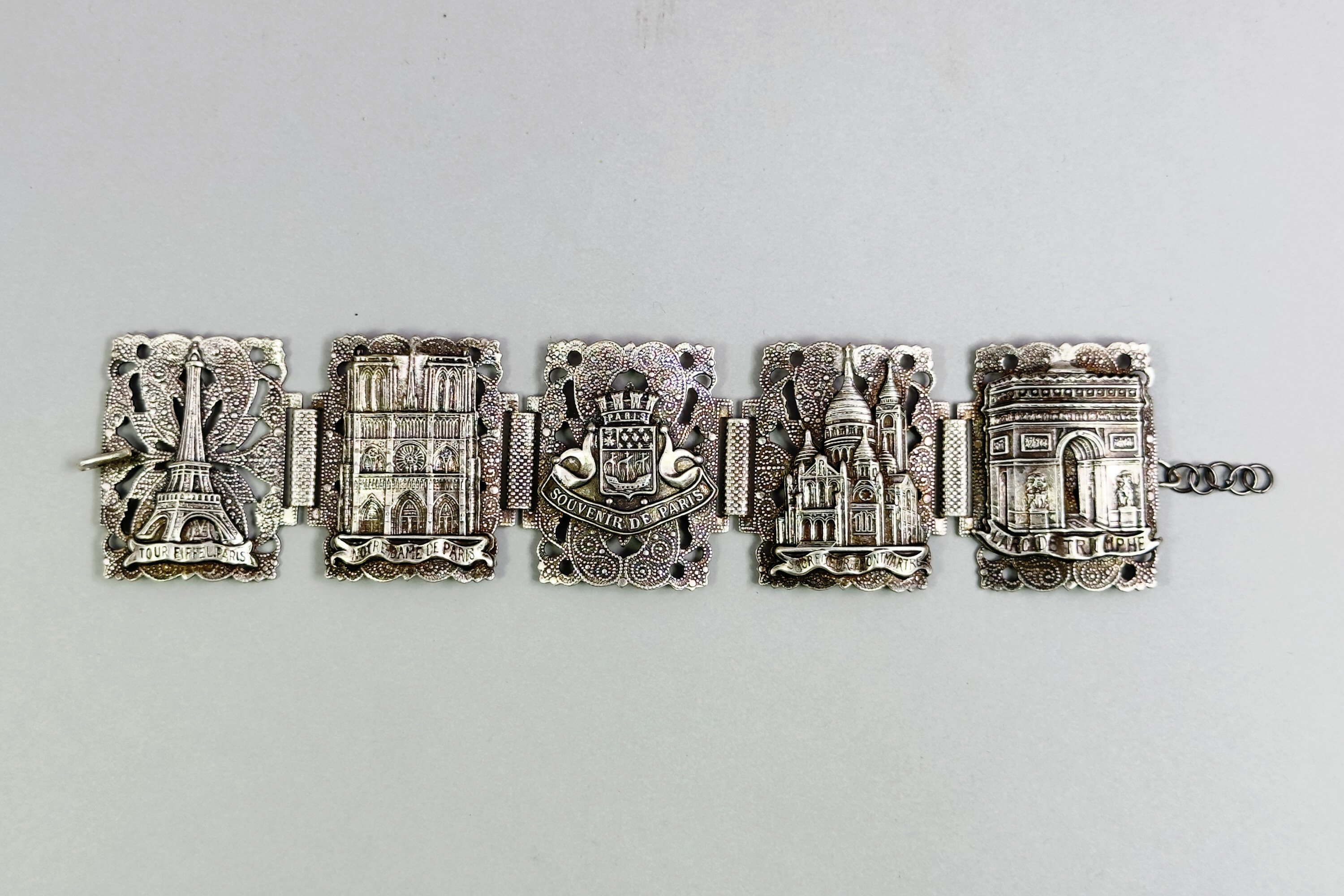
Paris tourist novelty bracelet c1950
Price: £35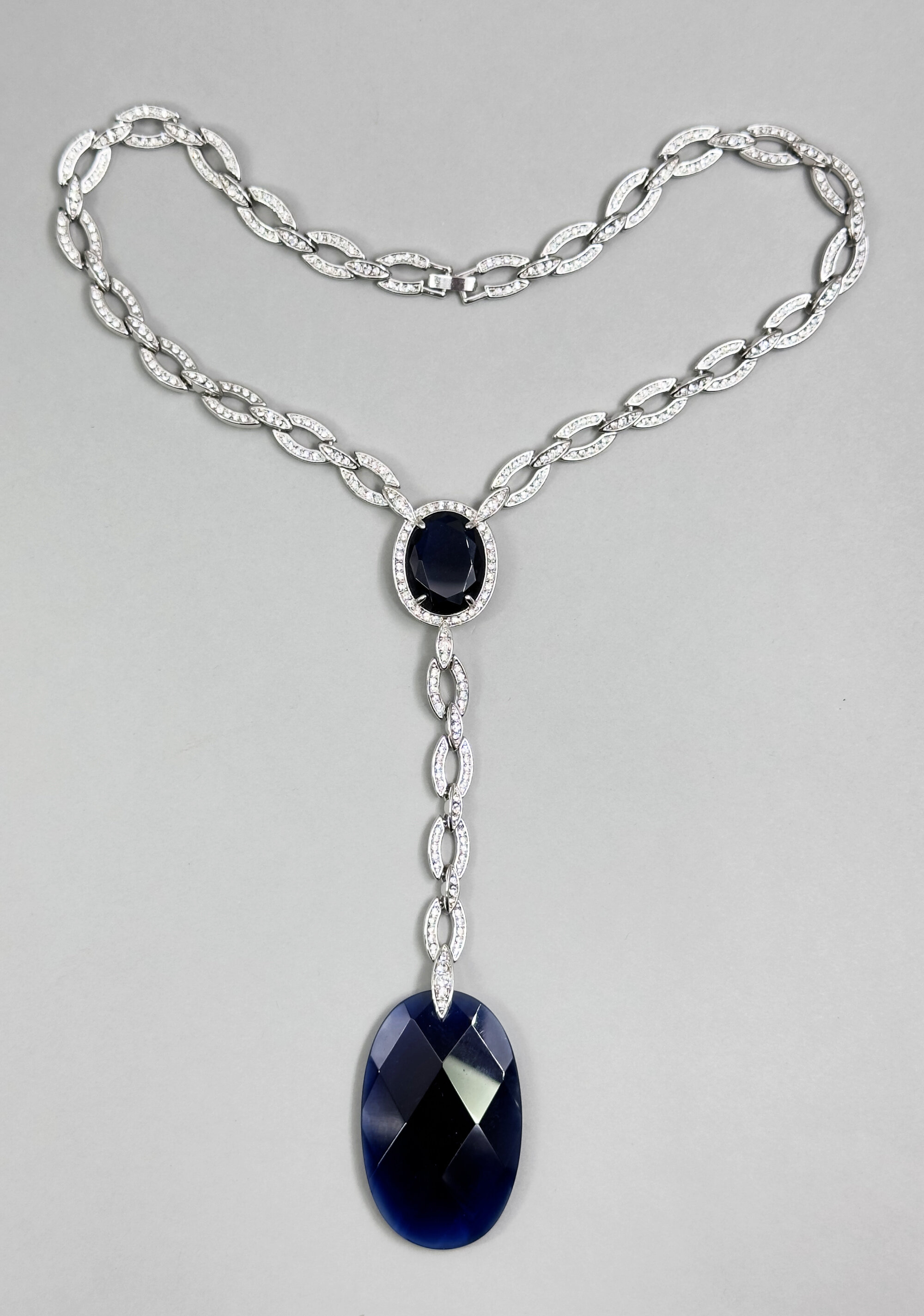
Art deco style necklace with large blue stone c1970
Price: £35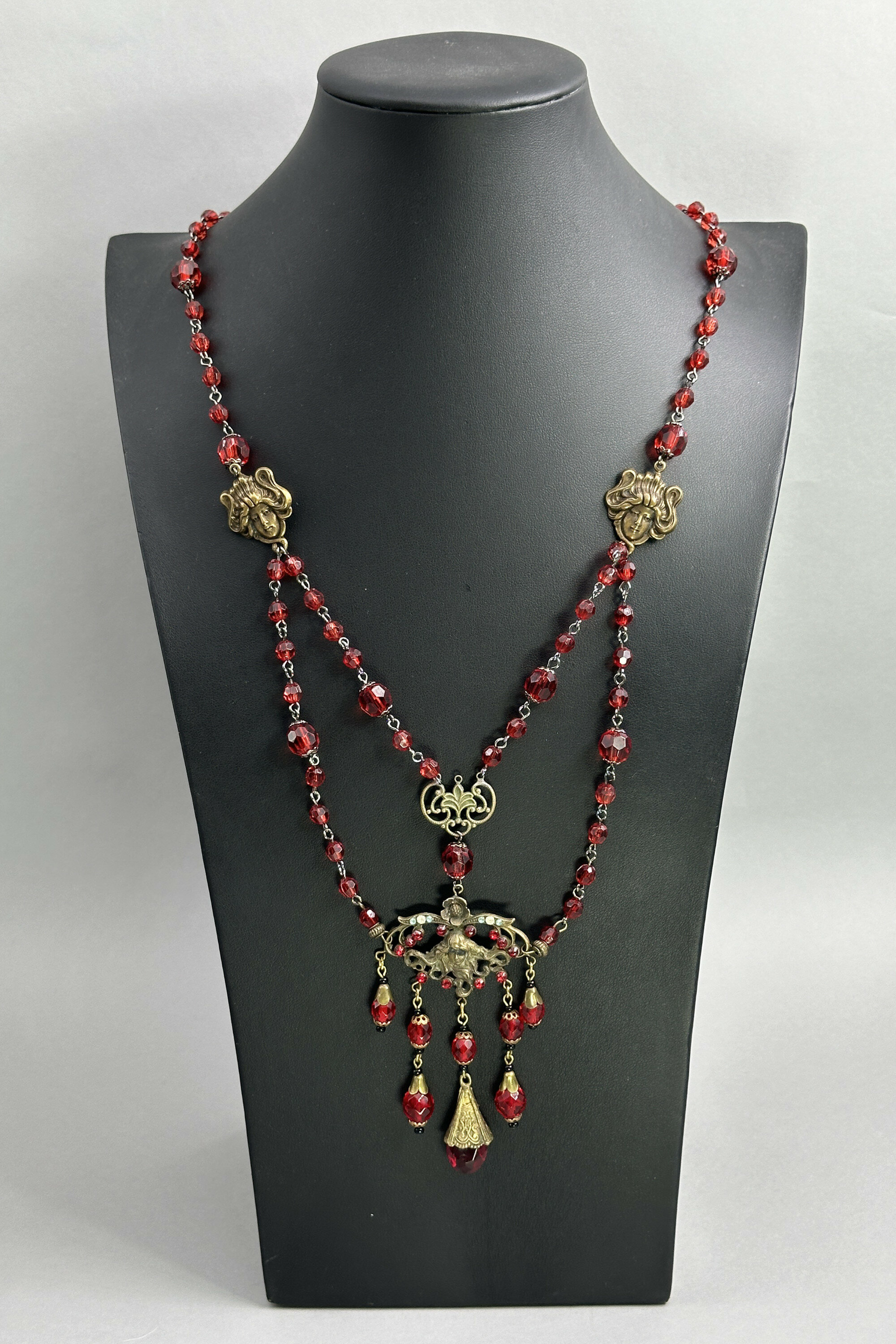
Long Art Nouveau necklace with multiple drops c1930
Price: £75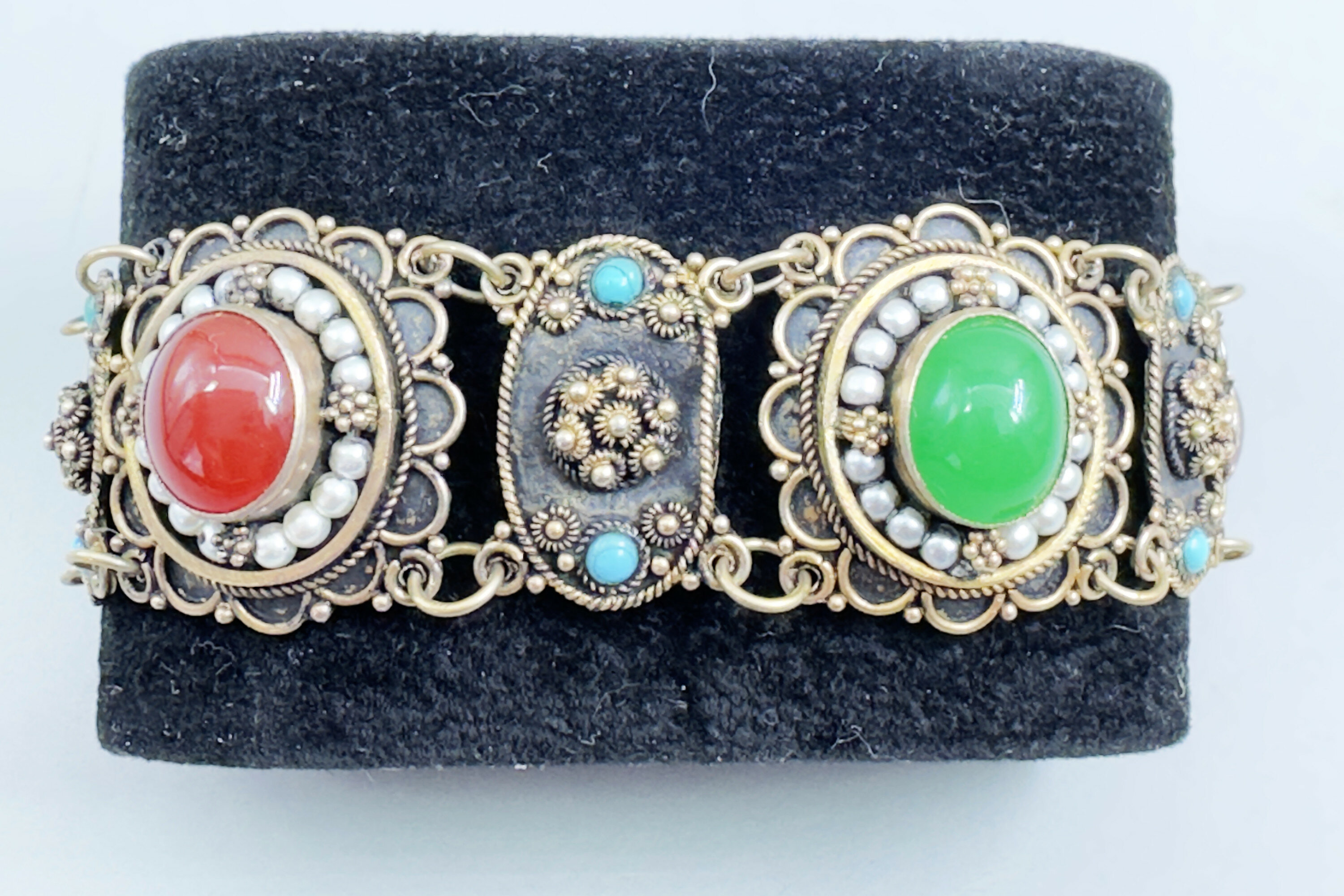
Victorian silver gilt filigree bracelet, Morocco
Price: £95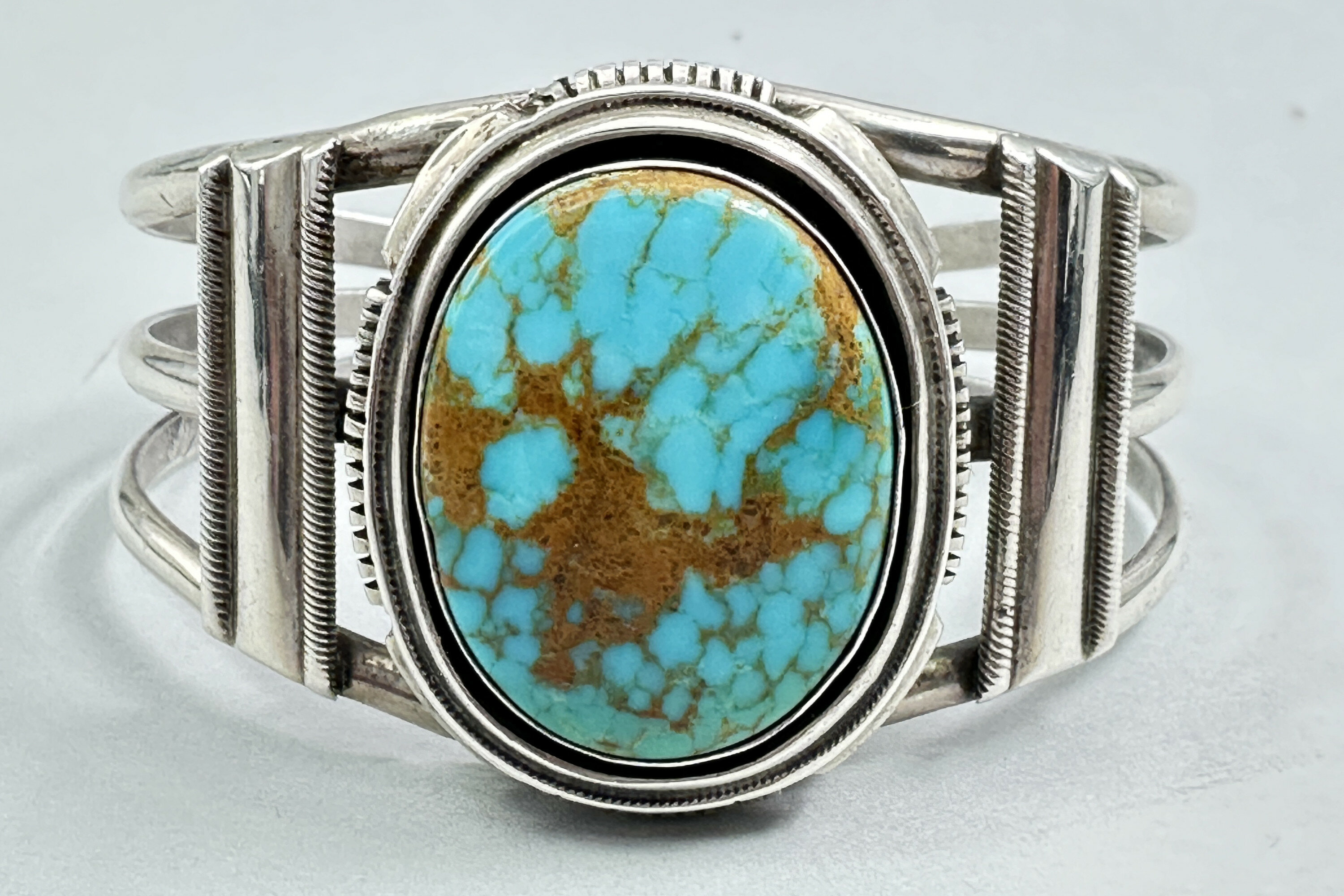
Zuni Cuff Bracelet set with Kingman Turquoise, marked, New Mexico 1970s
Price: £550
Chinese Straw Thread Picture on Silk, framed in original box, late C20th
Price: £45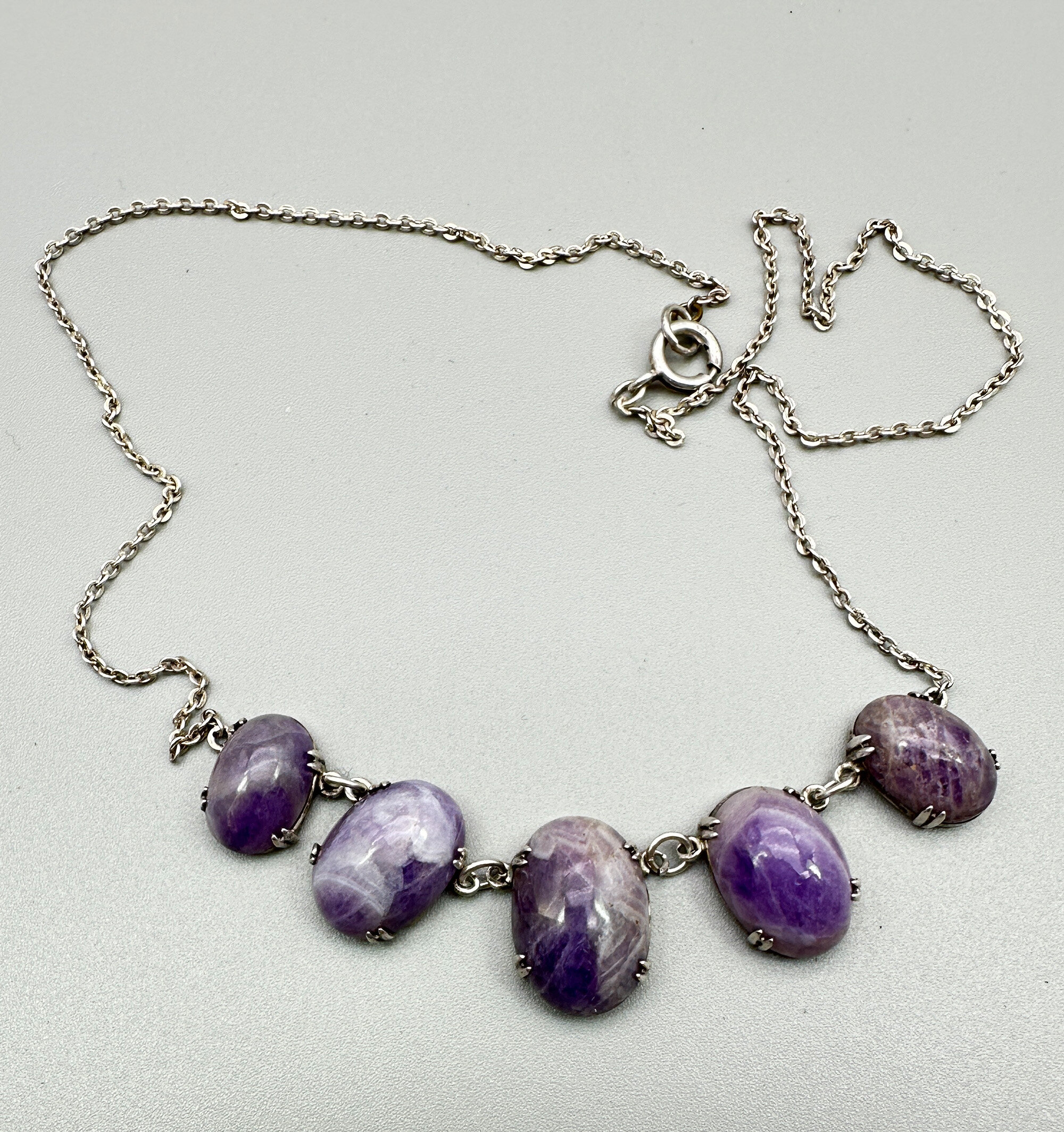
Scottish amethyst specimen necklace c1950
Price: £35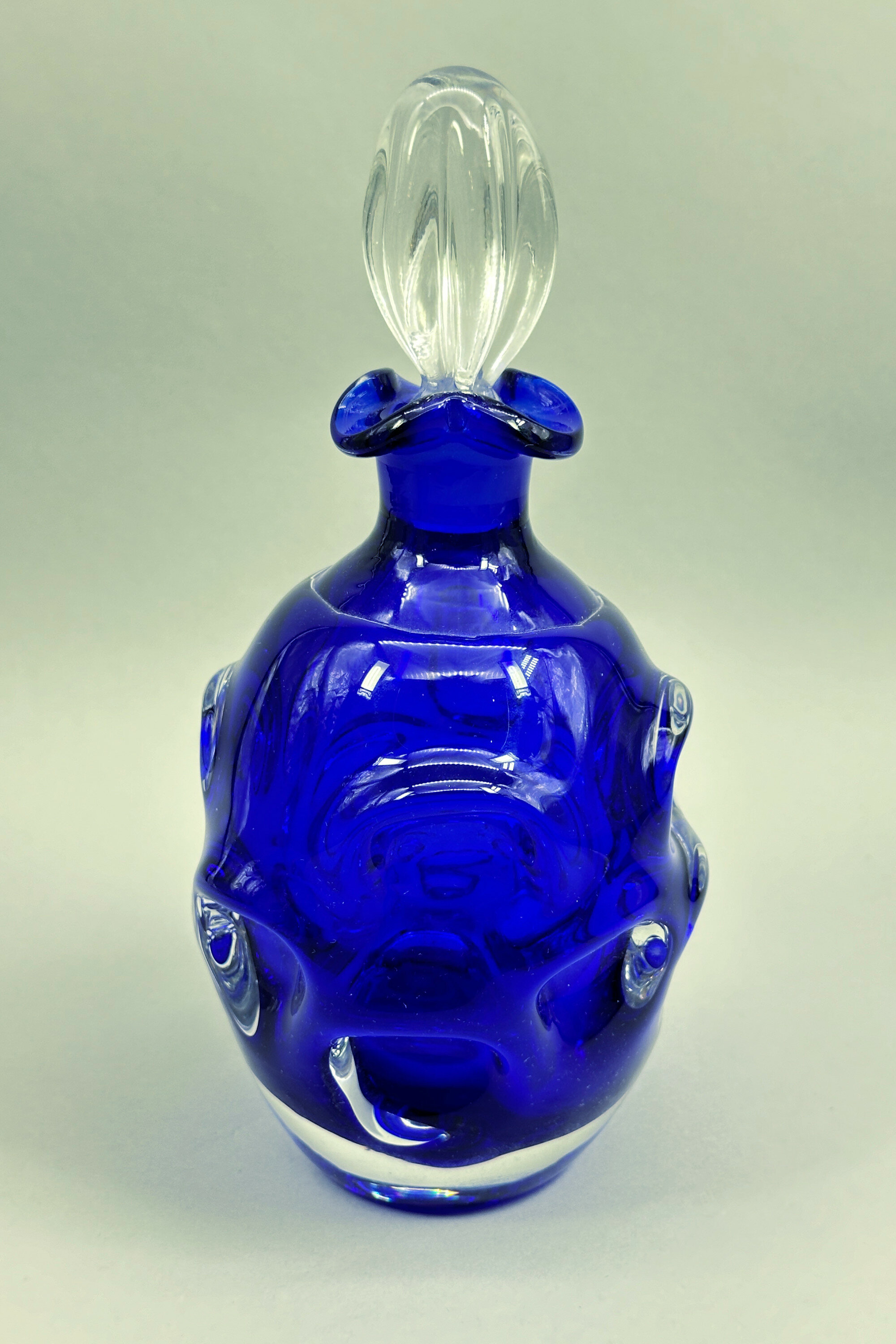
Aseda Glasbruk Blue Glass Bottle and Stopper by Bo Borgstrom, 1960s
Price: £55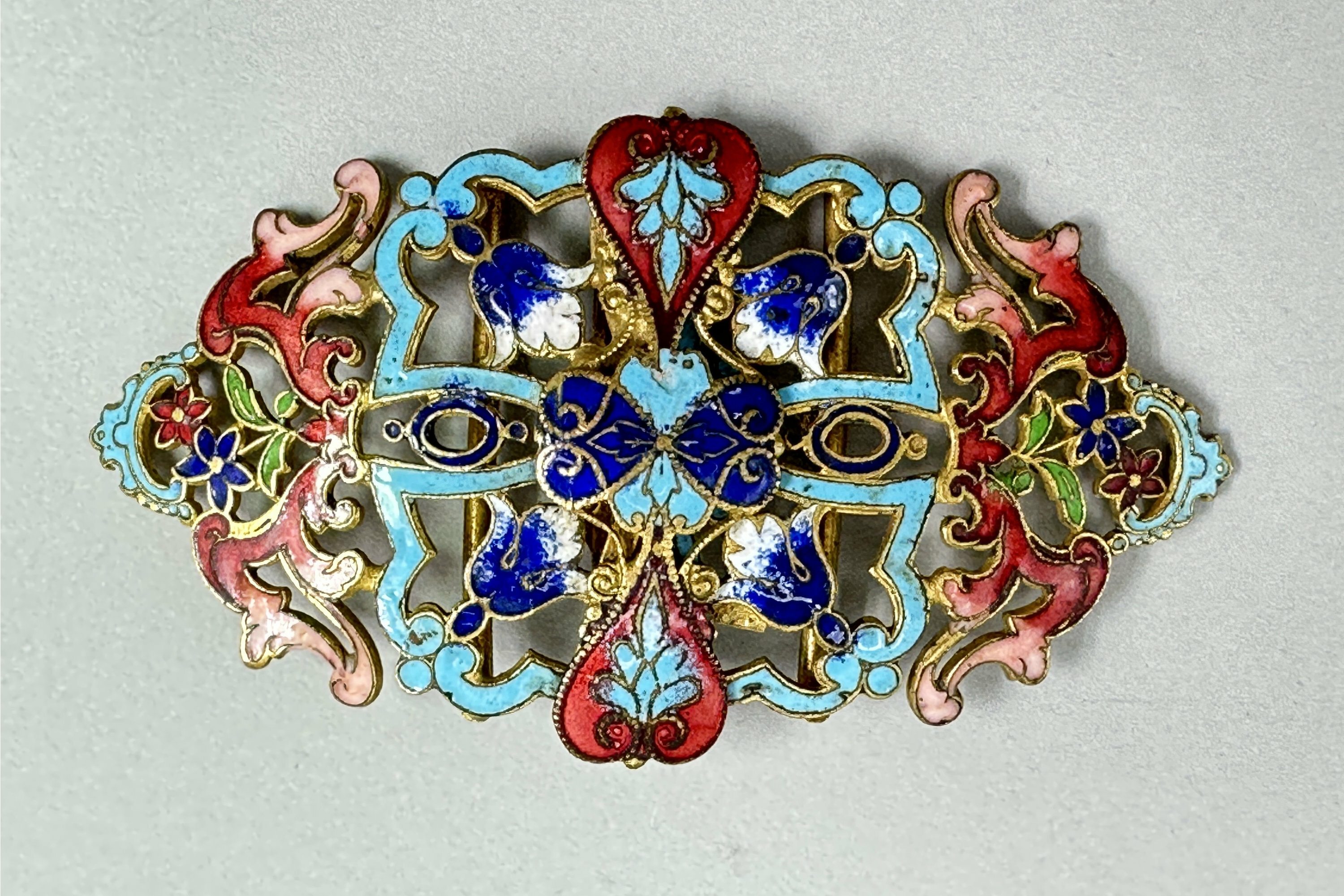
Victorian enamel buckle c1900
Price: £40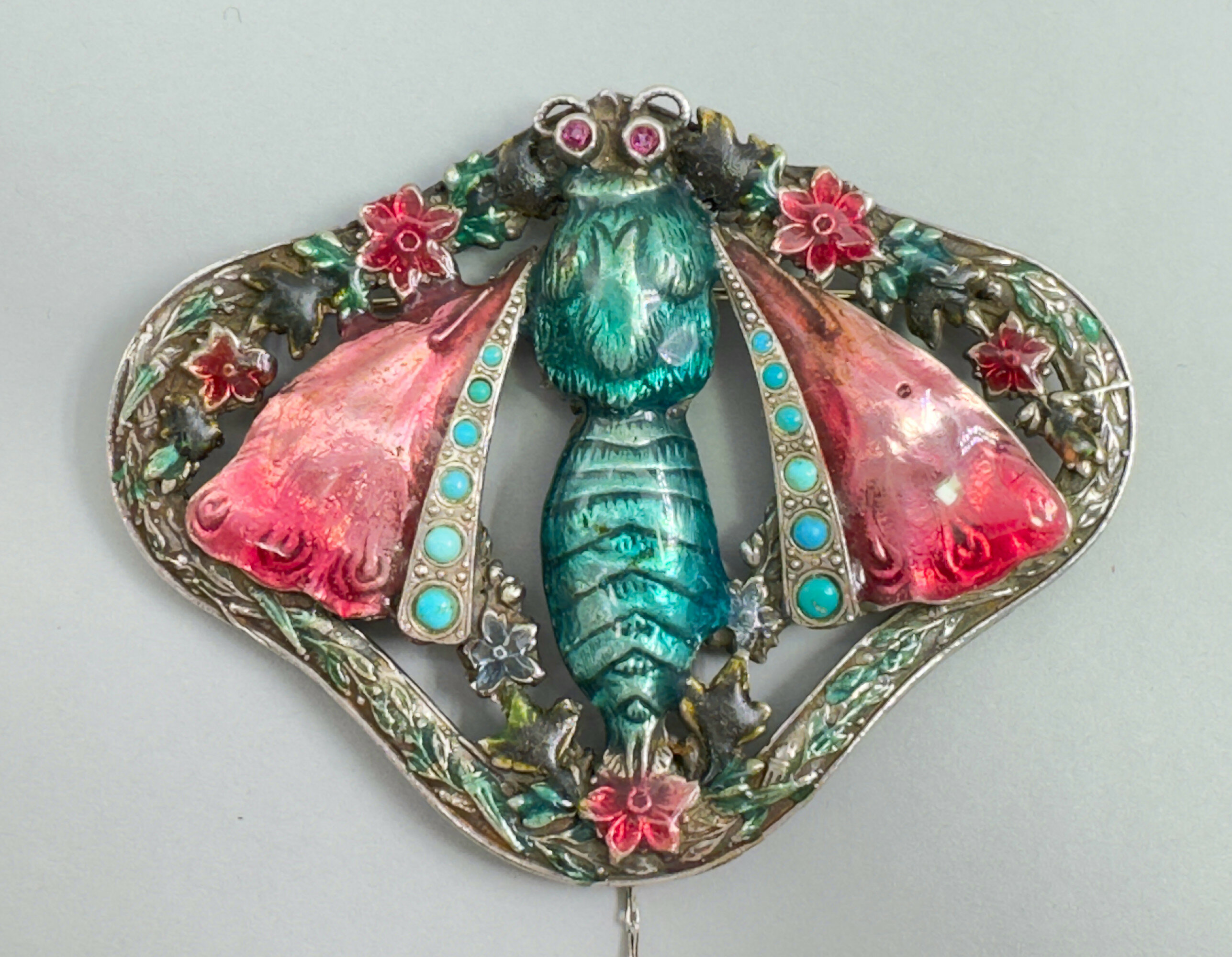
Large Art Nouveau enamel and silver brooch c1910
Price: £150
Early Egyptian Revival necklace with ruby glass stones c1900
Price: £175
Early Egyptian Revival necklace c1900
Price: £35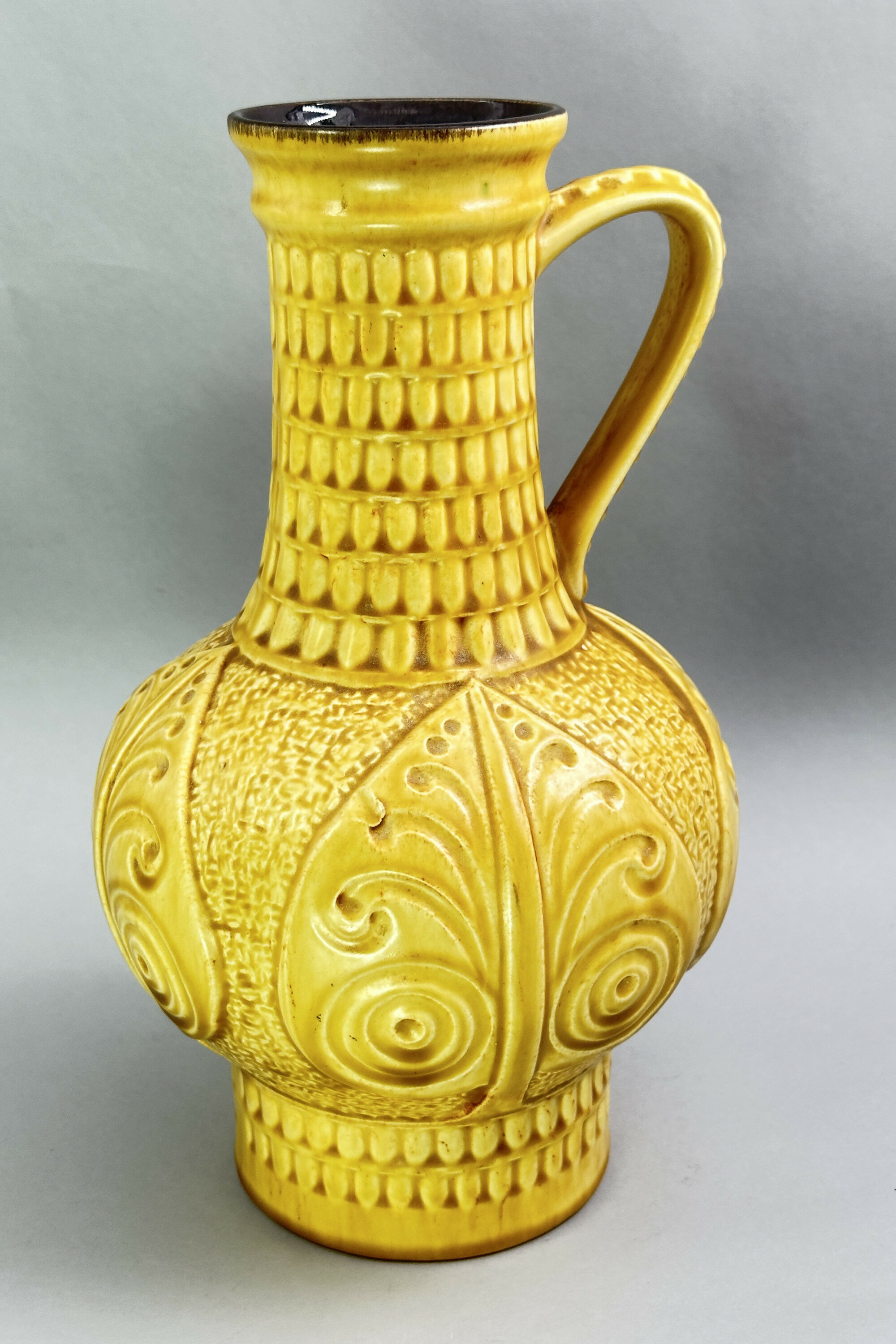
Bay Ceramic Ewer No 268-30, West Germany, 1960s
Price: £55Bay Ceramics was founded by Eduard Bay in the 1930s and based in Ransbach Baumbach, the heart of the main West German pottery producing region. Their productions included vases in a wide variety of shapes and designs which continued in production until the 1980s. Bodo Mans was amongst their most famous designers working in the 1950s and 1960s. He seems to have concentrated on organic semi abstract designs and ewers in this form, with the same pattern number but in a variety of different glazes, are attributed to him. This monochrome mustard glaze seems particularly attractive and complements the design very successfully producing a striking and decorative item which might enhance a wide variety of interior settings.
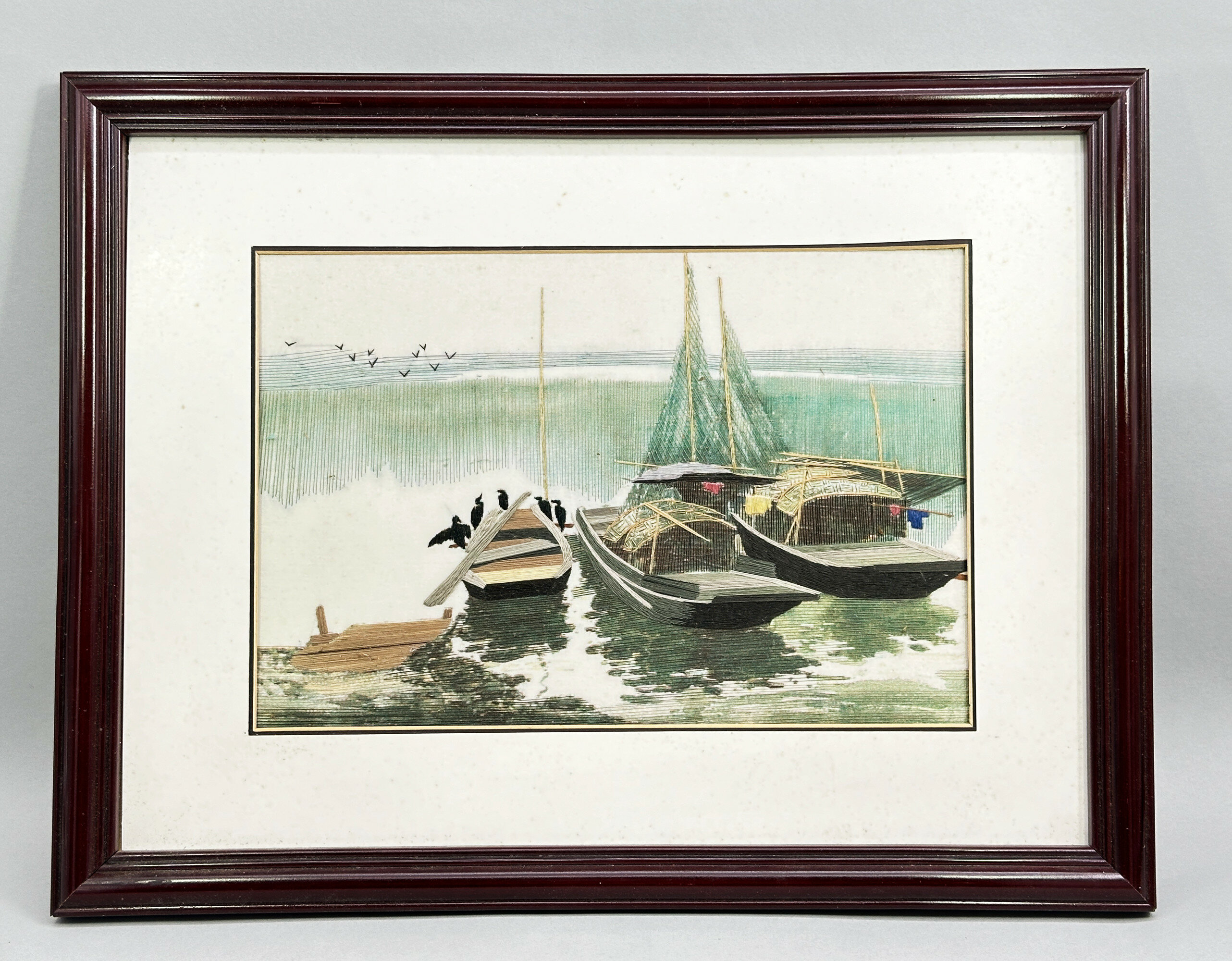
Chinese Straw Thread Picture on Silk, framed in original box, late C20th
Price: £45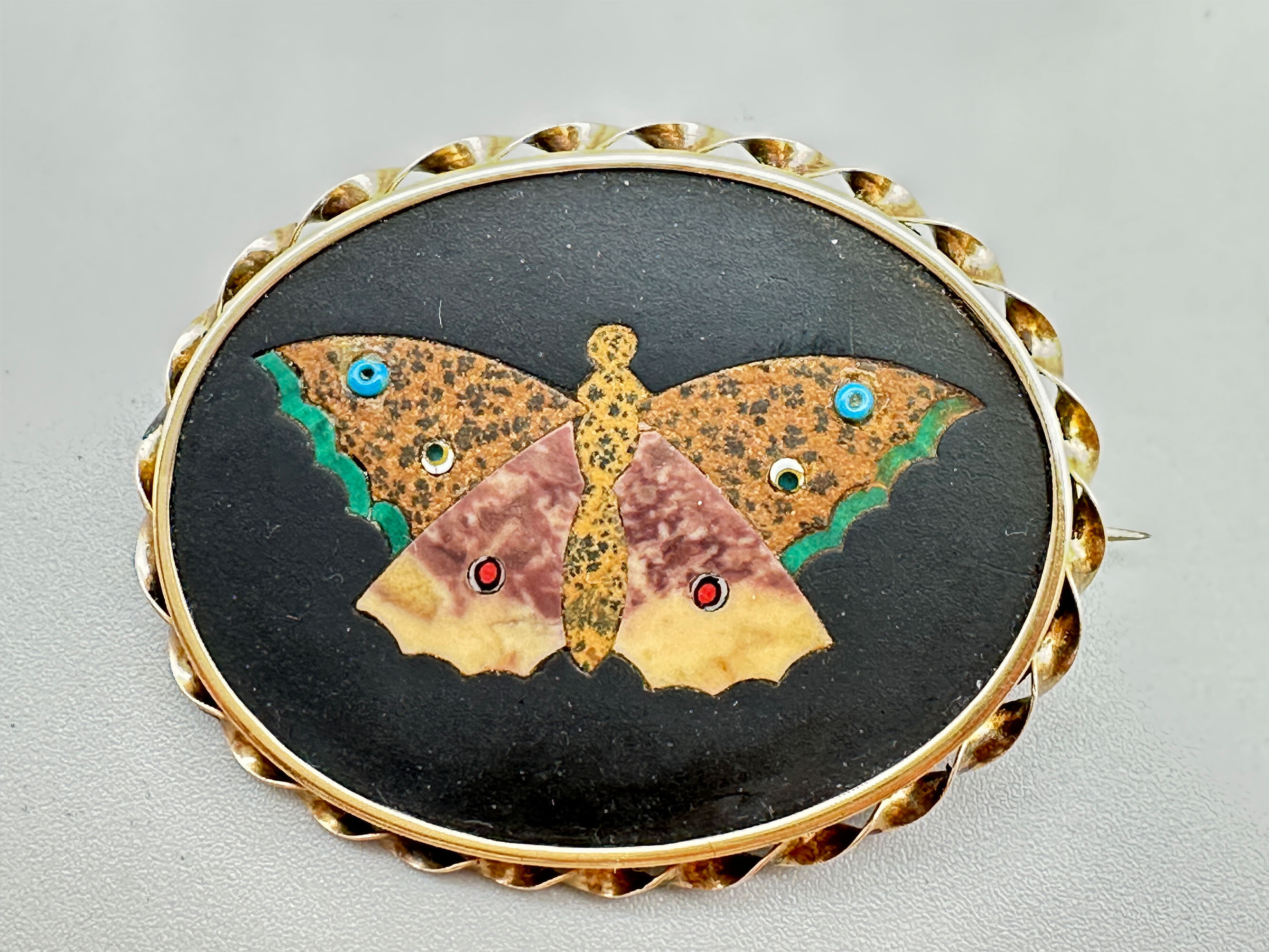
Pietra Dura jasper moth brooch c1920
Price: £175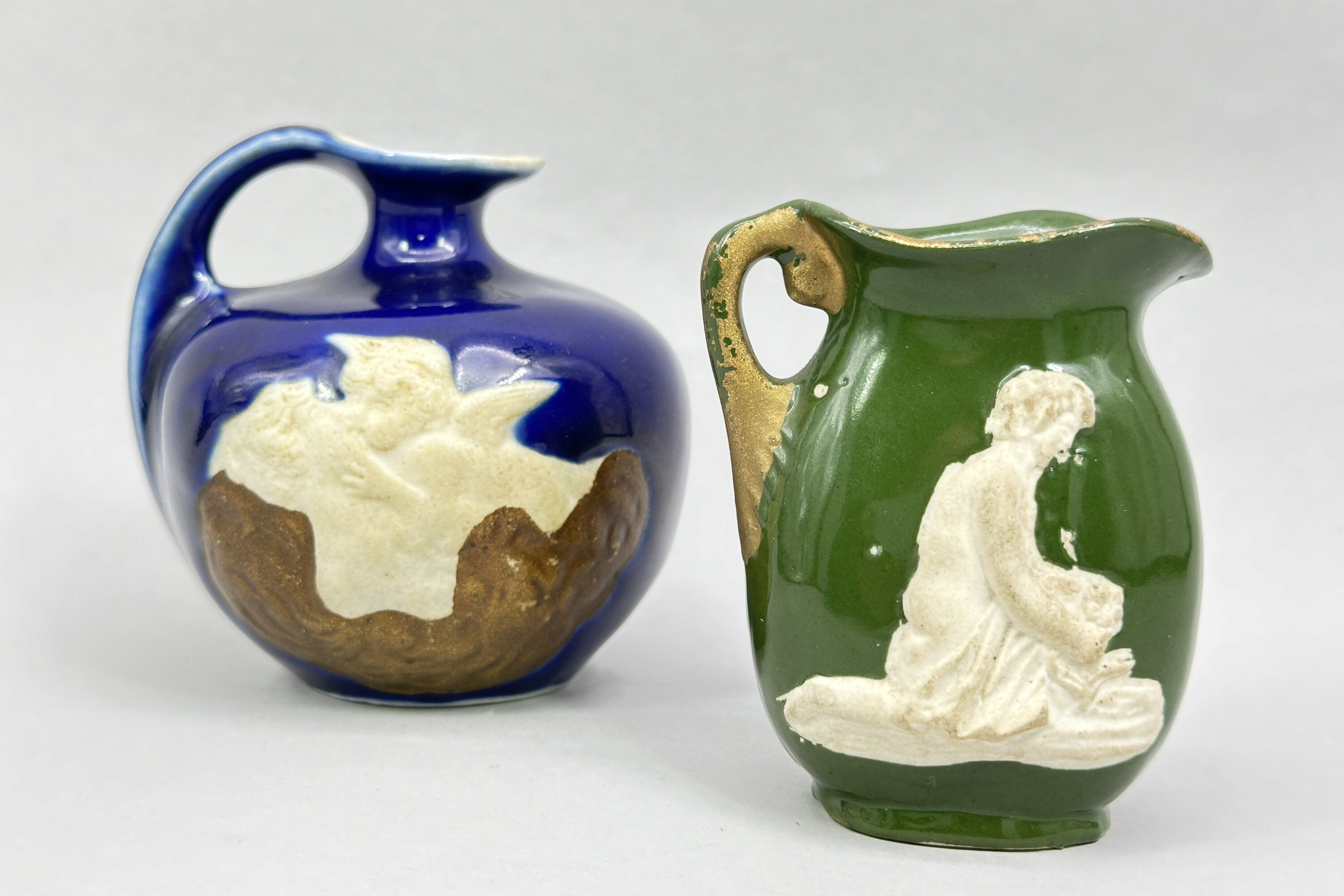
Two Ceramic Jugs with Erotic Decoration, continental perhaps German, circa 1900
Price: £25These pieces represent something of a puzzle. Seen the right way round (with the handle on the right) they are plain and the decoration only reveals itself on the reverse. This suggests a playful intent to conceal which, when combined with the subject matter, suggests something a bit ‘naughty’ which could confirm the second interpretation of what the seated man is holding! The paste, and general style of the pieces, looks continental and a German origin might be a good guess, but no more than that. The blue glazed jug has an impressed mark to the base ‘186 [plus an unidentifiable number]’ which might be the date but is more likely the pattern number; a dating of around 1900 for both seems reasonable - certainly there is an ‘old’ look to the pieces. There are one or two similar examples but little in the way of firm information. One for a collector to puzzle out!
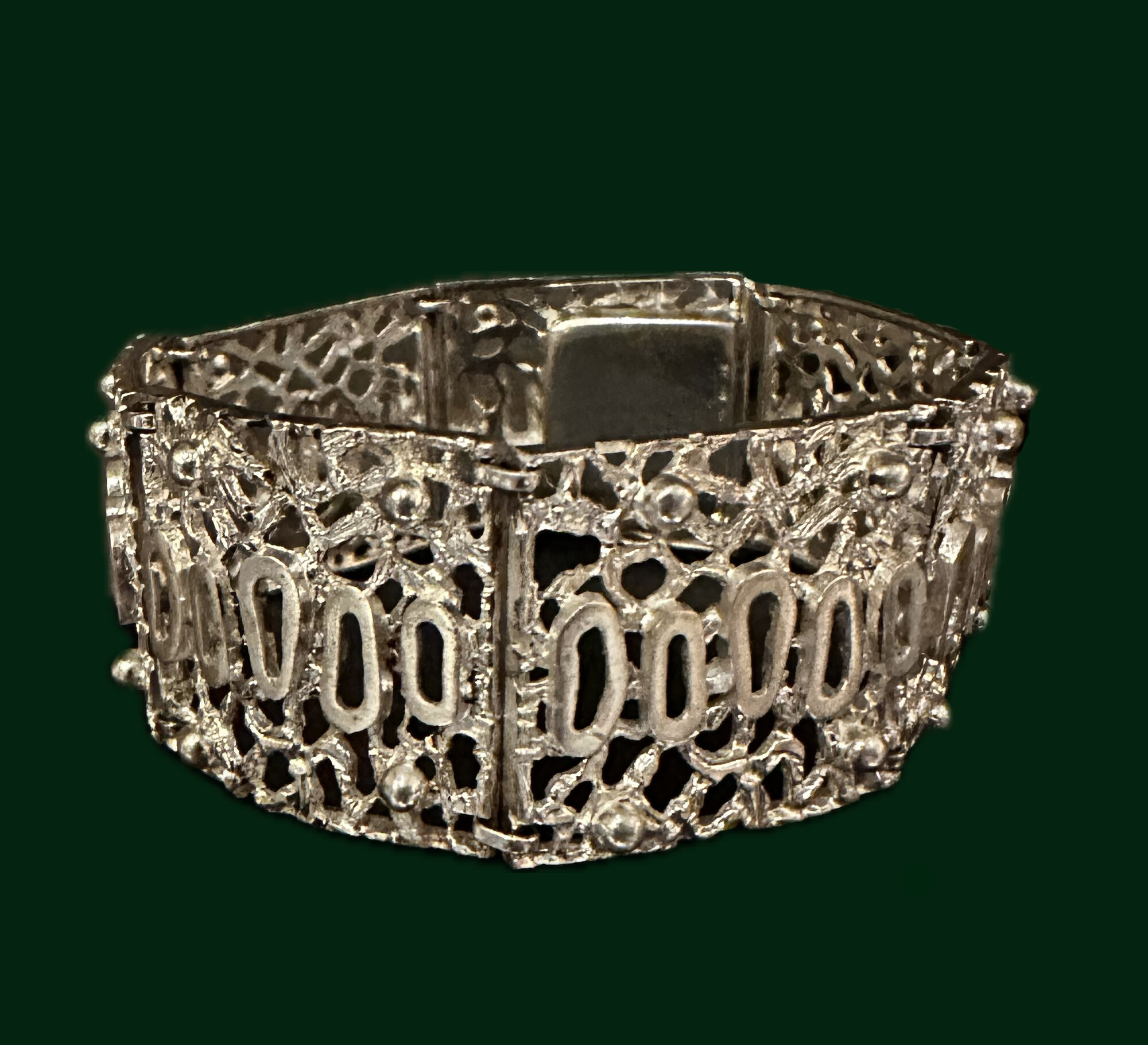
Striking continental silver modernist bracelet c1960
Price: £35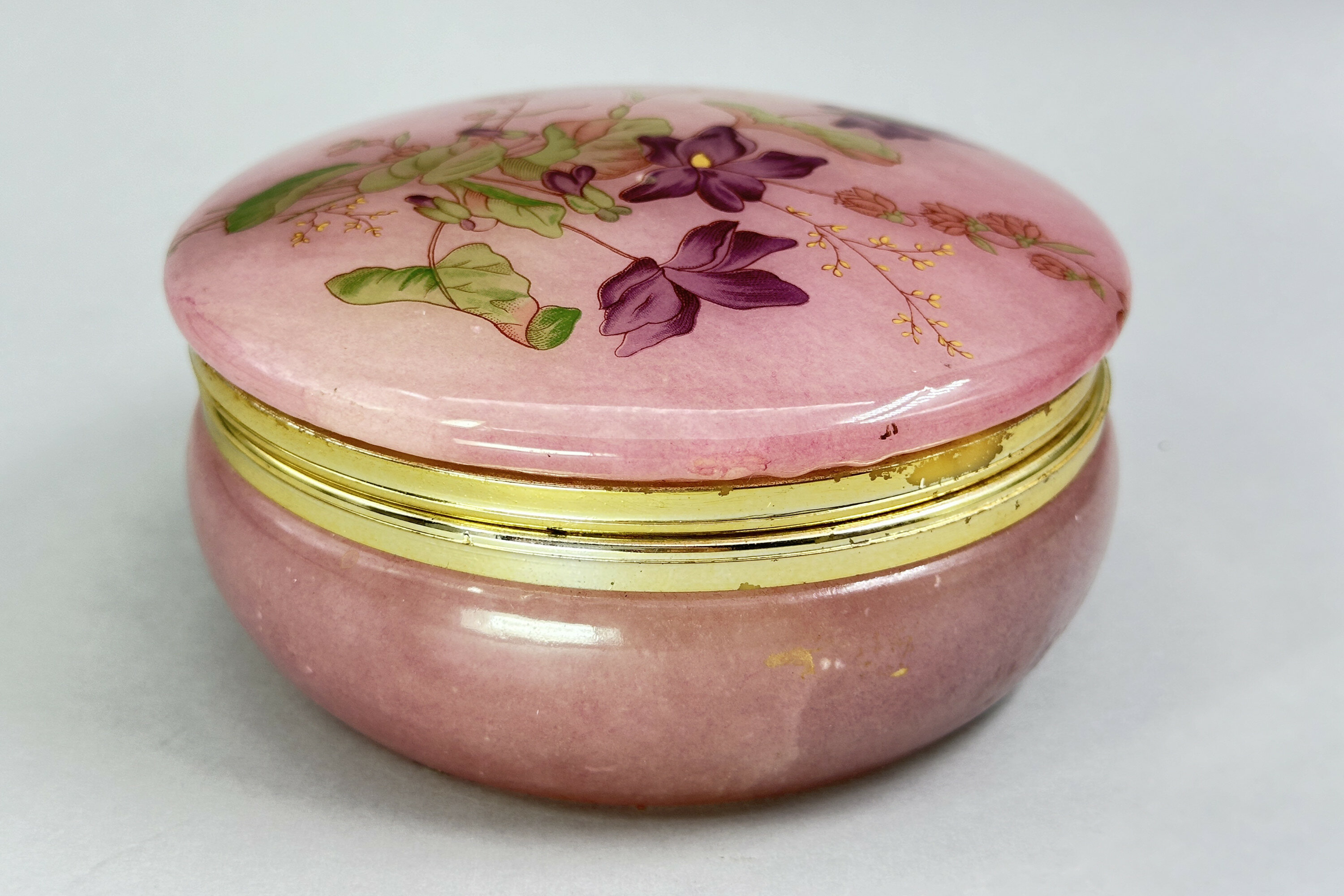
Pink Alabaster Box and Cover, Italy late c20th
Price: £25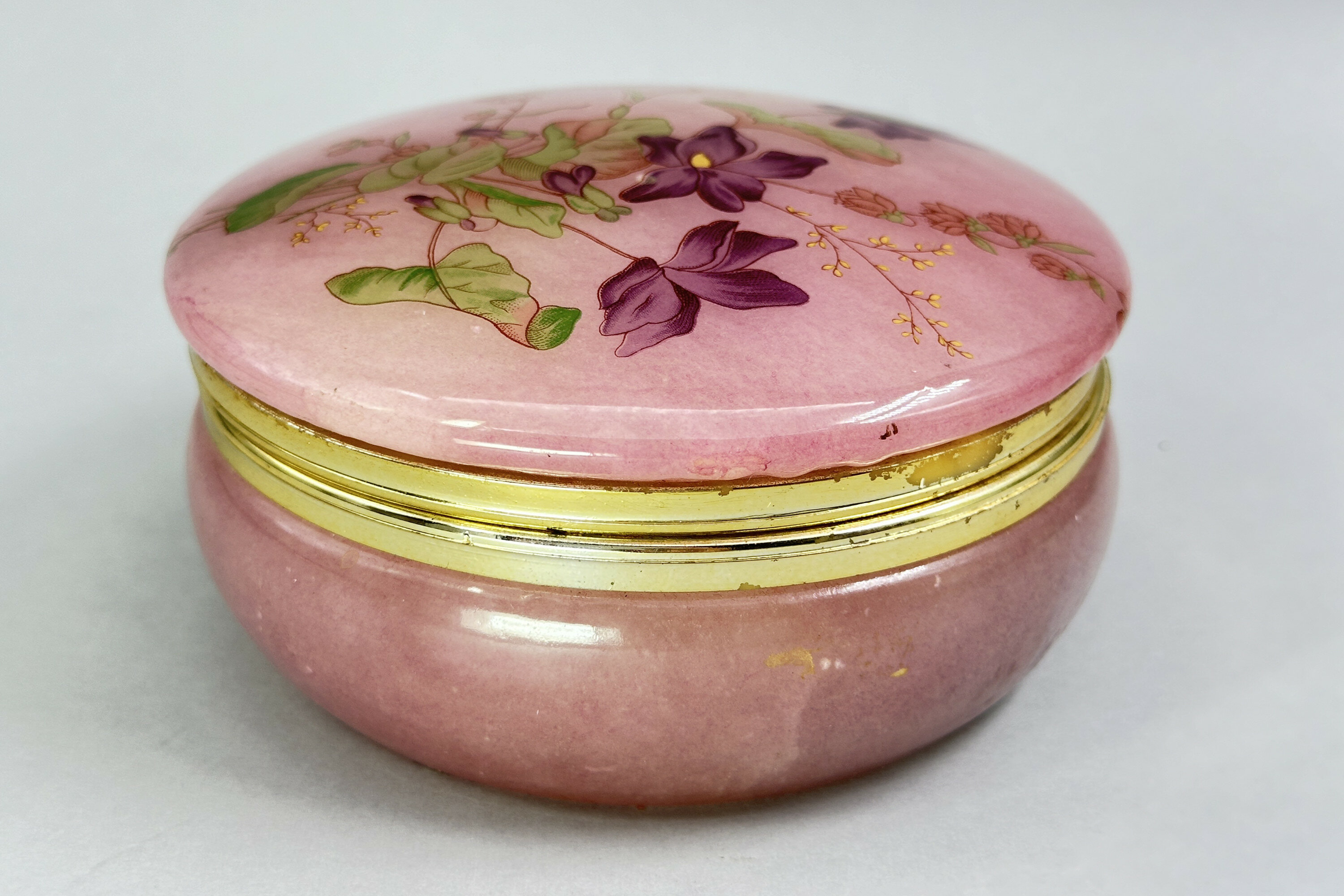
Pink Alabaster Box and Cover, Italy late c20th
Price: £25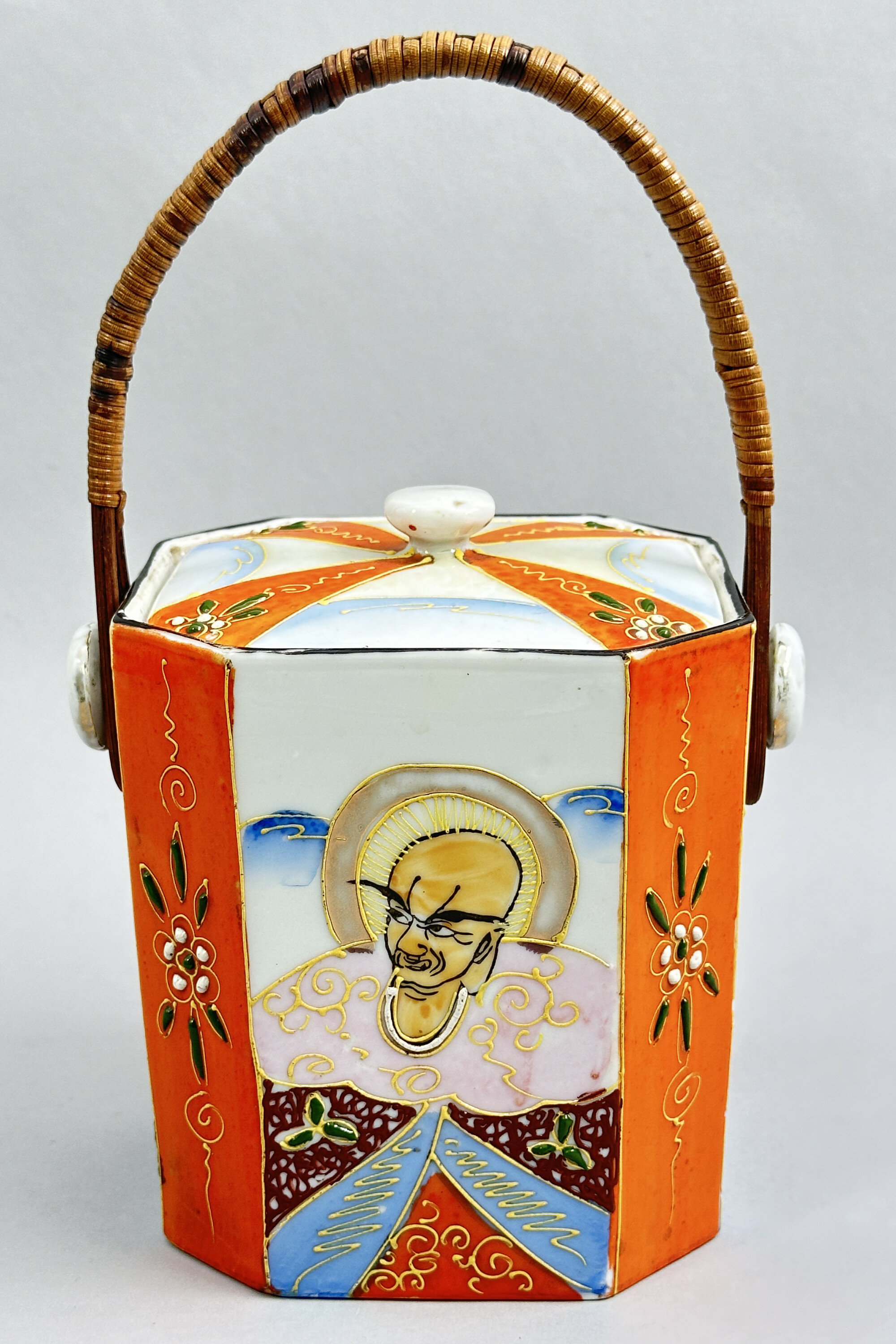
Japanese Samurai China Biscuit Box and Cover, C20th
Price: £25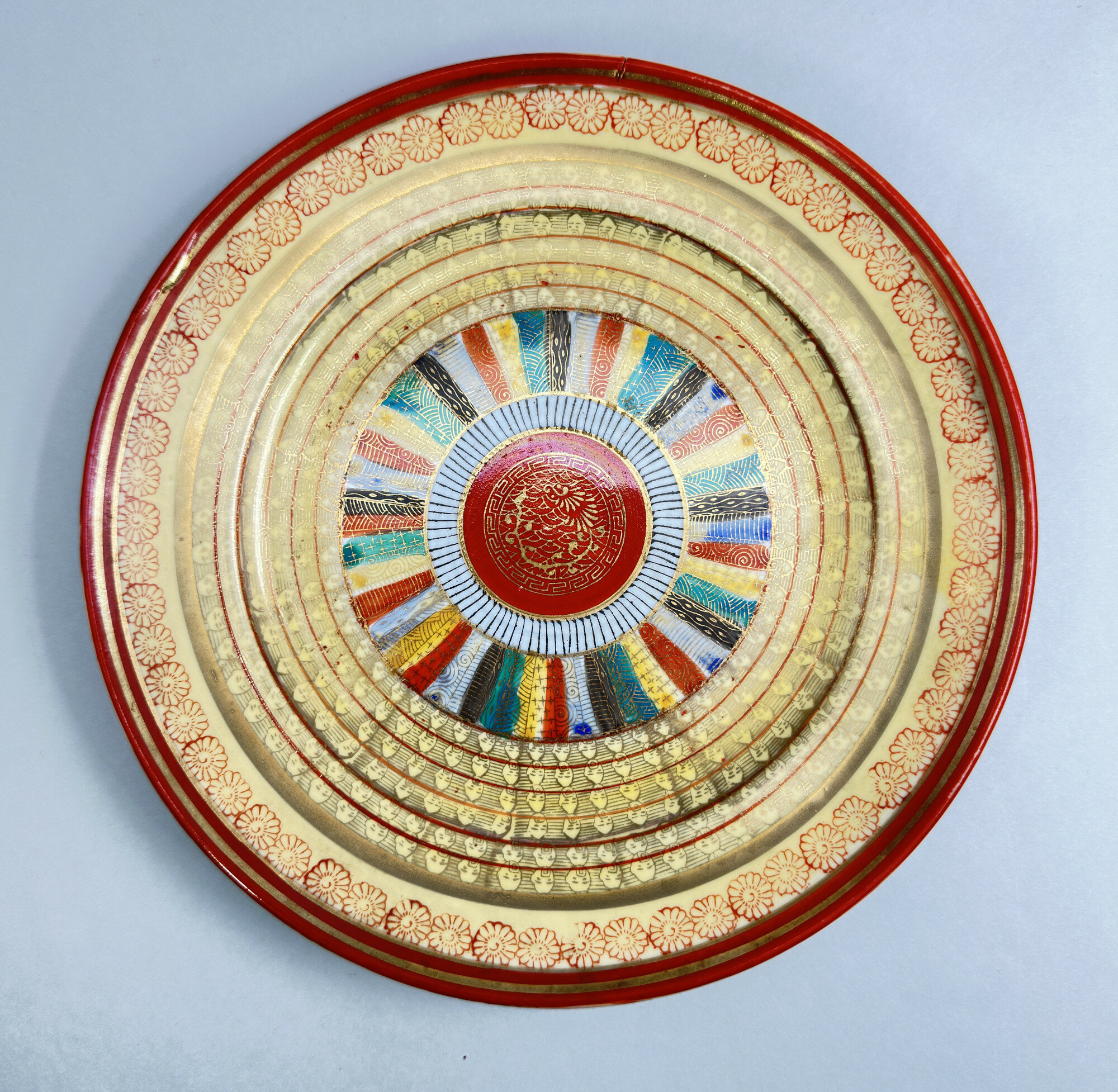
Japanese Kutani Dish decorated with the Thousand Faces pattern, first half C20th
Price: £45The colourings and style of work here clearly indicate the workshops of Kutani (the word means 'nine valleys') in the former Kaga province of Japan. By the nineteenth century the majority of their pieces were decorated in iron red and gold but sometimes with other colours in addition, as here. The ‘thousand faces’ pattern (an apocryphal term and this cataloguer has not attempted to count the number of faces appearing here) seems to have been evolved around the end of the nineteenth century and then continued in production until the mid twentieth. Both plates in various sizes and even tea sets are found in the design. The mark ‘Made in Japan’ was usually employed after 1941 (in the previous twenty years ‘Japan’ was the norm) but there are exceptions and the paste of the foot rim here does suggest a slightly earlier date, perhaps around 1930. In perfect condition, with very little wear to the decoration, this piece is a fine example of a rather eccentric decorative patttern.
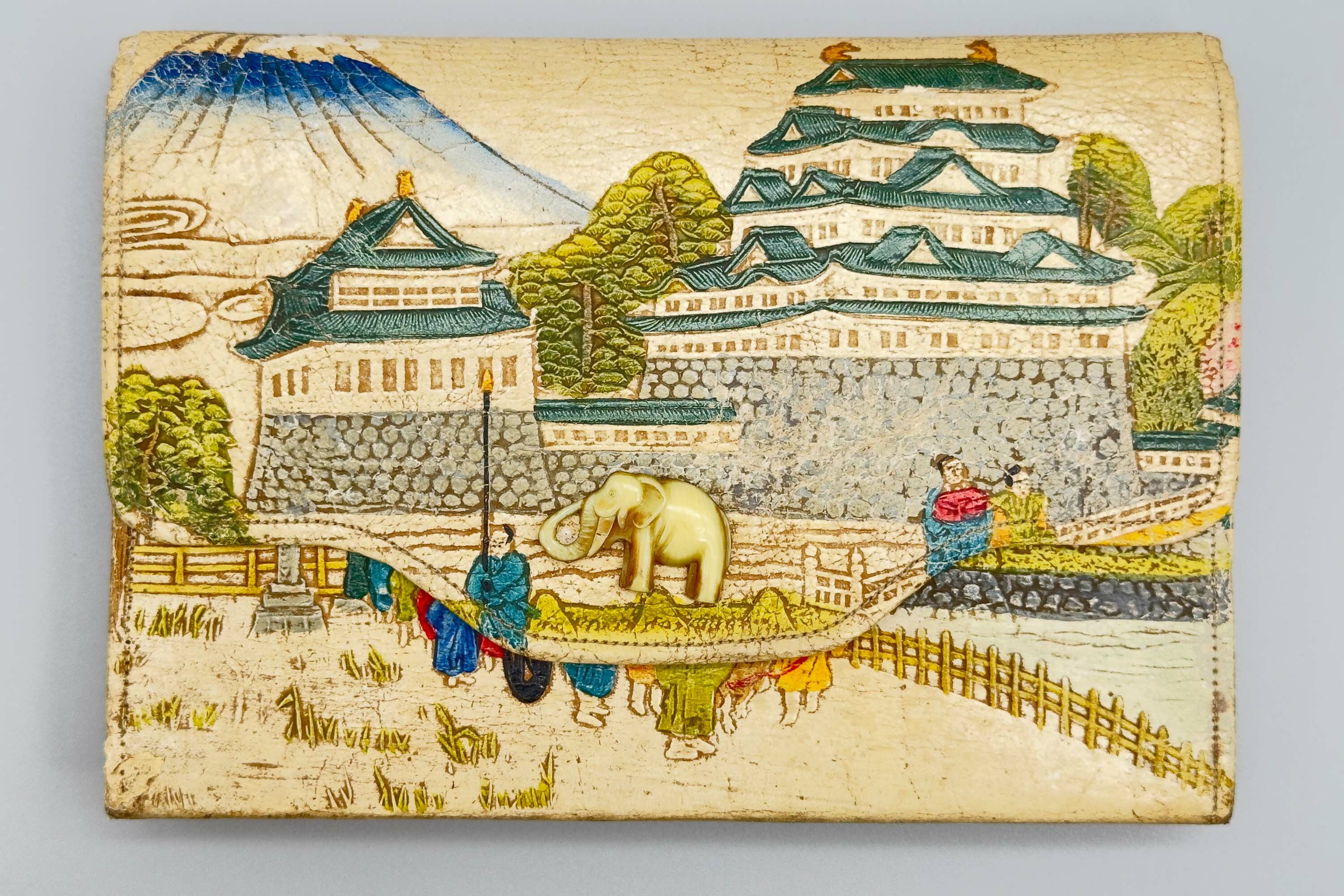
Japanese tooled and painted leather Clutch Bag, 1930s
Price: £45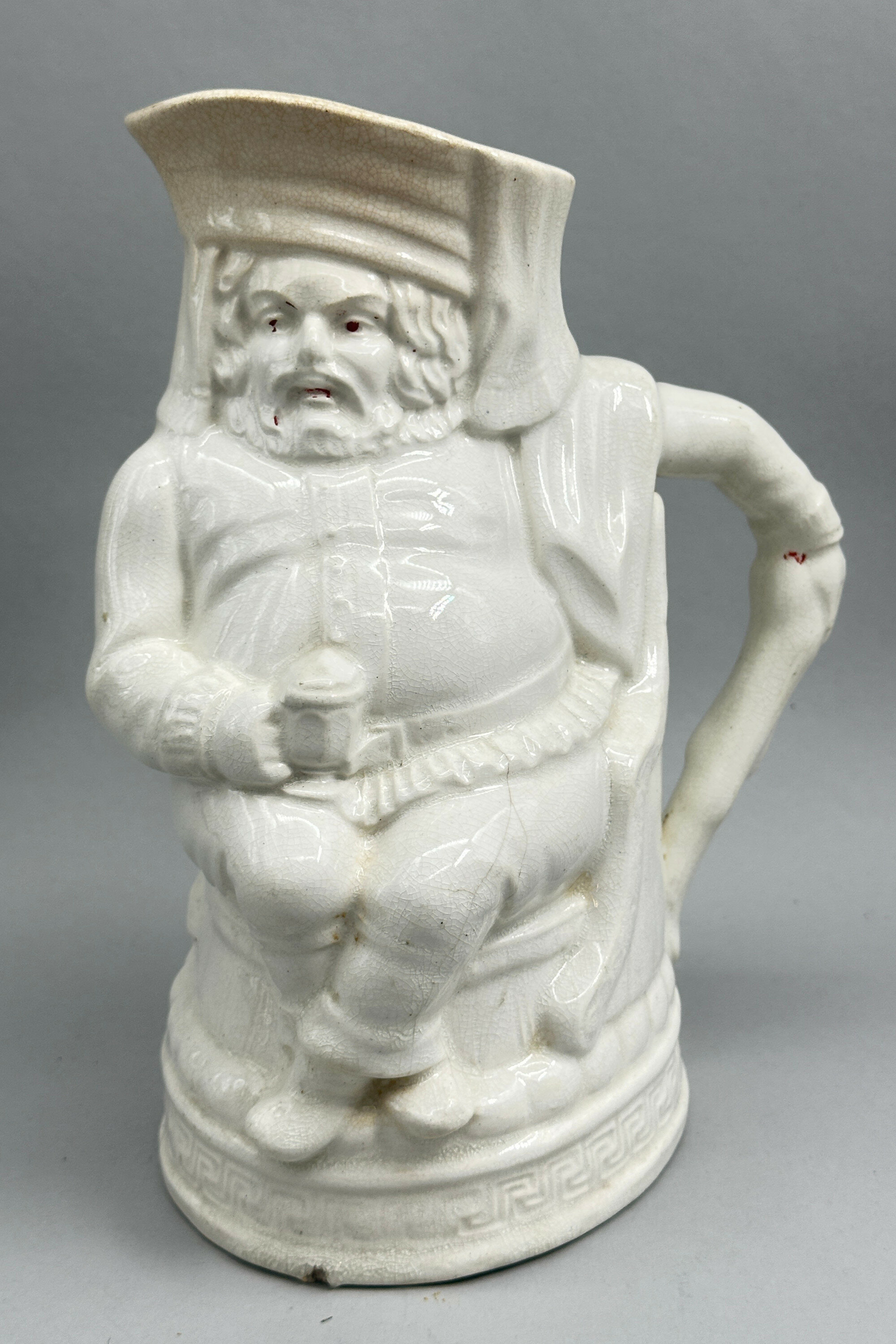
Earthenware Jug, Falstaff or Old King Cole, Furnival and Clark, mid C19th
Price: £75The design for this jug, usually termed ‘Falstaff’ but sometimes ‘Old King Cole’ is known to have been registered (Rd.No. 32601)by the firm Furnival and Clark on December 30th 1845. This was a very short lived partnership between Thomas Furnival and Richard Clark, based at the Stafford Street Pottery Works, Hanley, Staffordshire and which traded from 1844 to 1846 apparently producing just this one model, albeit in a variety of colours. Thomas Furnival had been involved in other firms before this brief venture and was to be involved in others afterwards. The dating of these mugs is usually attributed to the short period when Furnival and Clark traded but it is quite possible that more pieces were produced afterwards by Furnival himself. The paste and finish of this piece, though, which is not marked, certainly suggest a mid nineteenth century dating. In general, the model is quite rare. Some examples were fitted with a Britannia metal or pewter lid but this was never integral to the piece. This striking composition, then, is a rare and desirable item collectors with an interest in British Staffordshire wares.
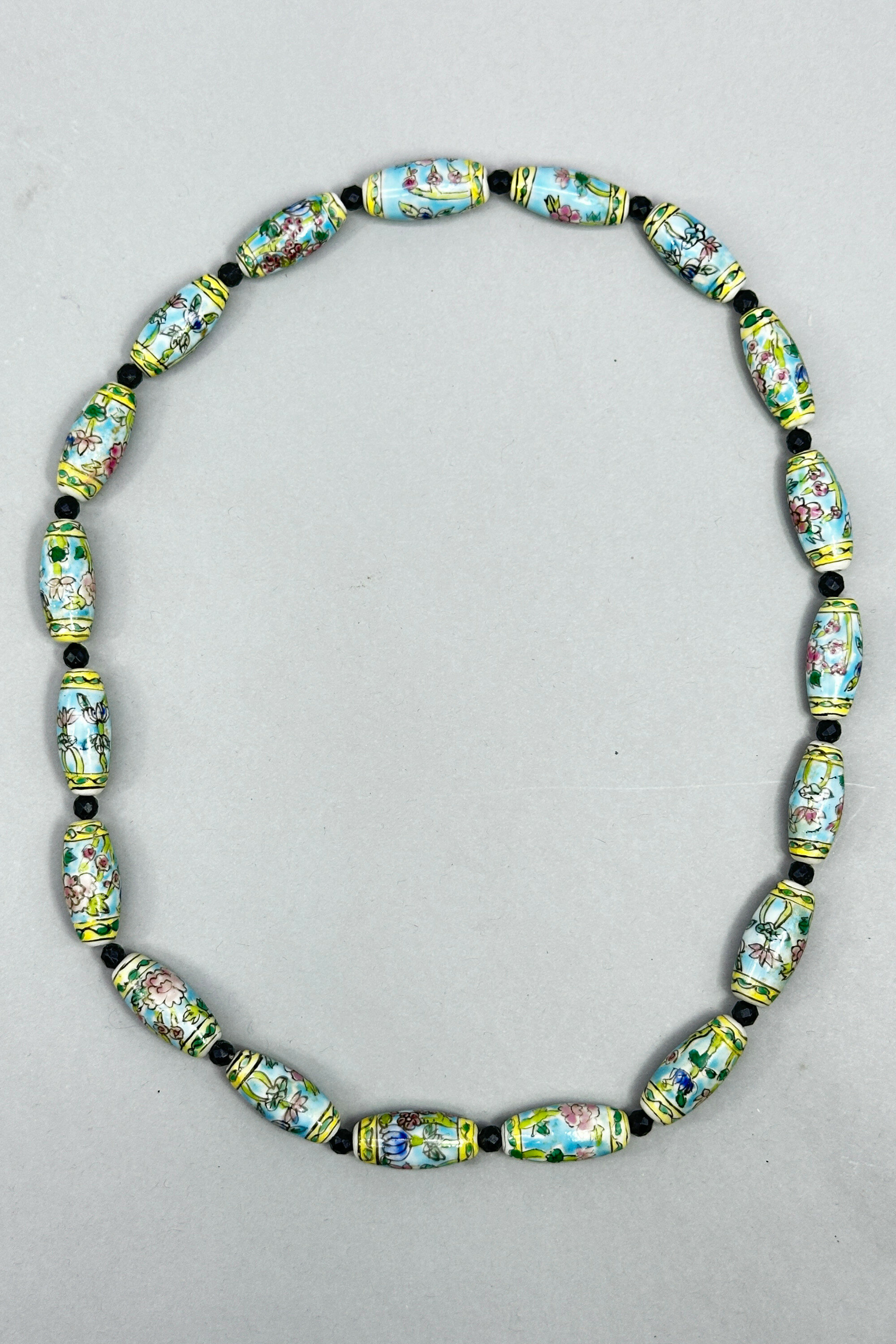
Strand of Chinese ceramic beads c1950
Price: £25
Butterfly brooch by Marius Hammer (1847-1927), Bergen, Norway
Estimate: £350 – 450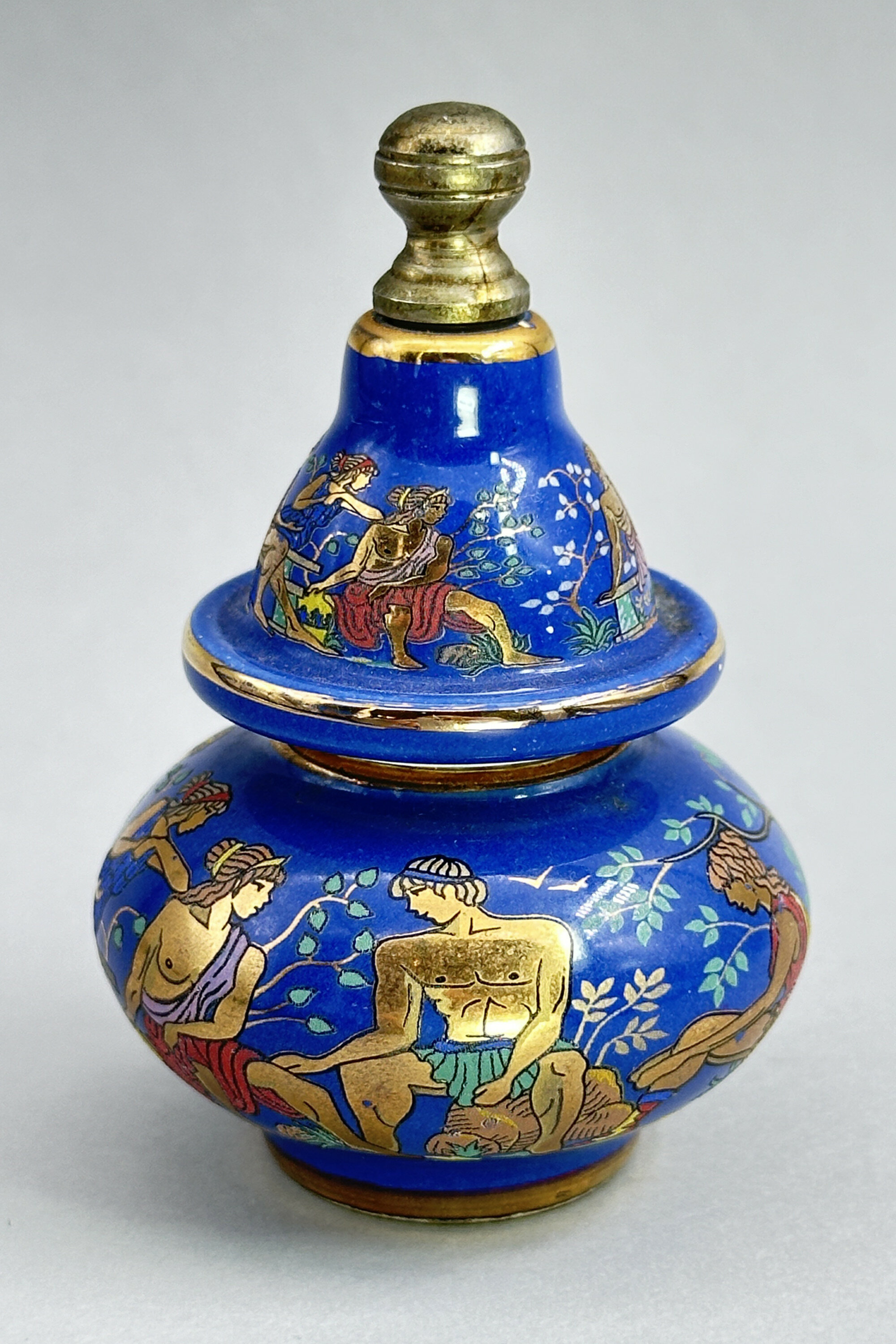
Novelty Perfume Bottle with Grecian Scenes, late C20th
Price: £15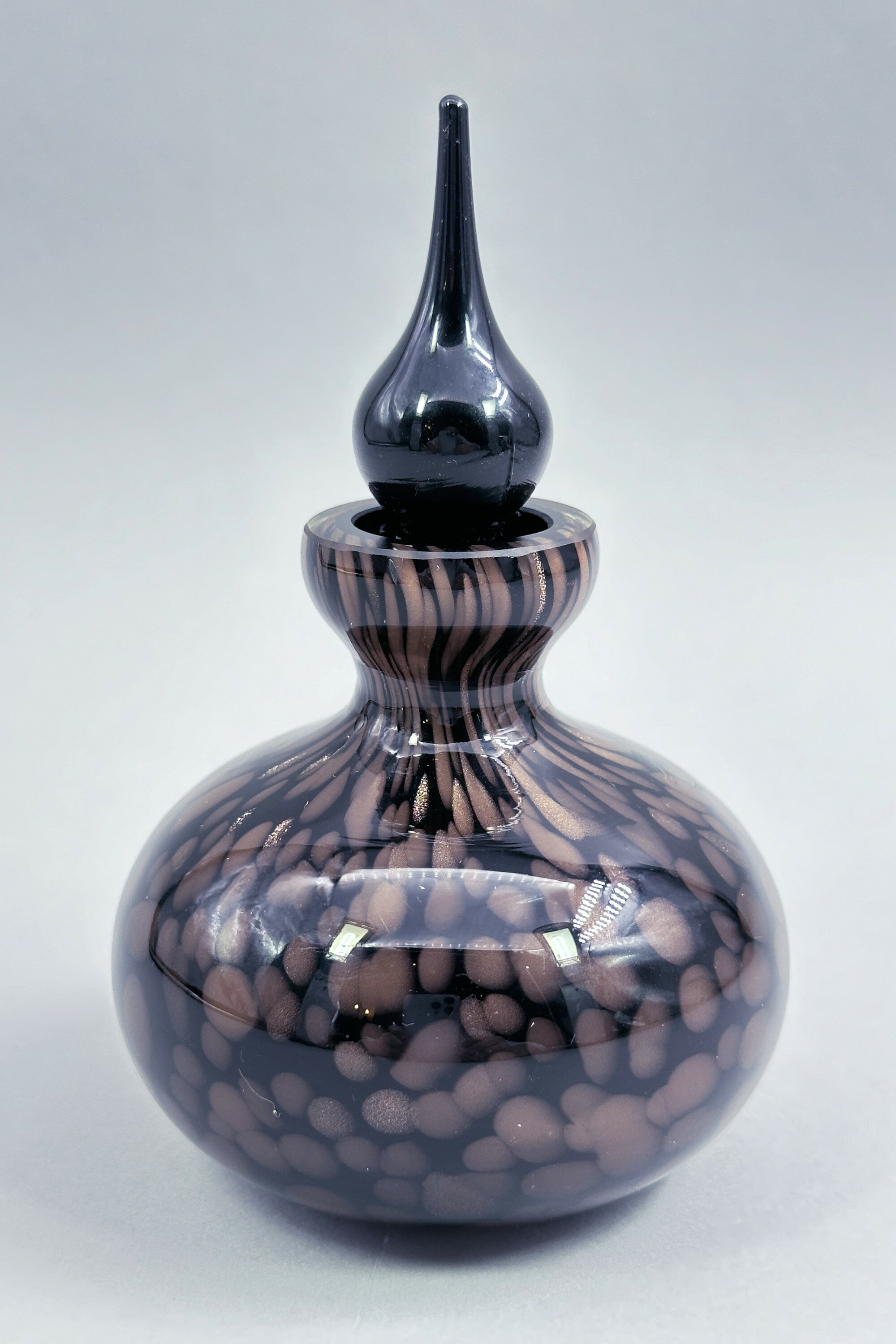
Black and Gold Copper Glitter Art Glass Scent Bottle, probably Murano late C20th
Price: £55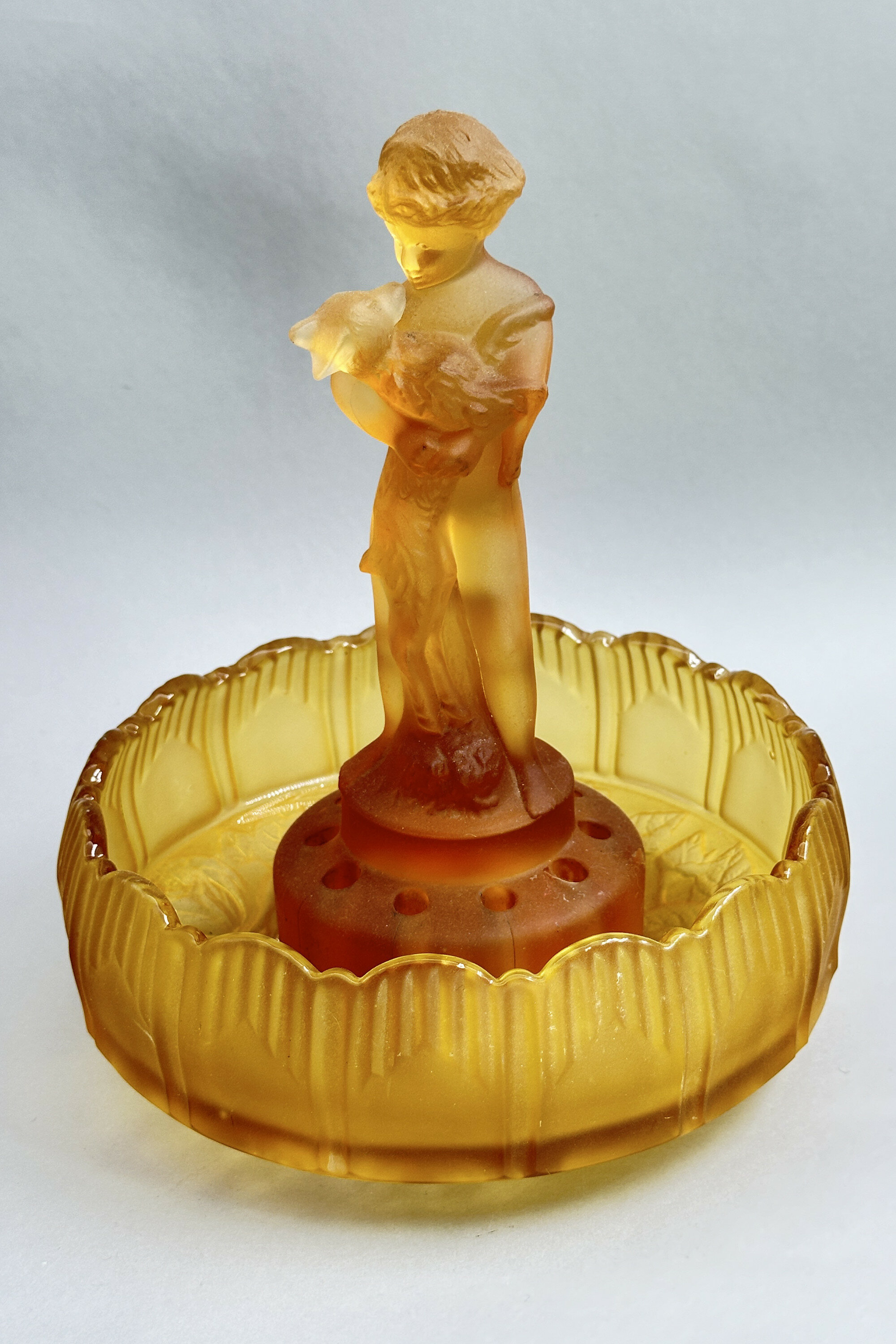
Sowerby Amber Glass Centrepiece circa 1930
Price: £75The Sowerby family came from the North West of England near Carlisle and settled in Gateshead in the late eighteenth century. The firm Sowerby Glassworks is known from 1807 onwards and continued production until 1972, concentrating on pressed glass. Catalogues of their wares still exist and they produced pieces in a wide variety of styles and shapes which retain their popularity today.
The centrpiece figurine, which was intended as a flower holder or ‘frog’, is rather unusual; normally the figures are female but the style of the modelling is identical. Similar designs to the bowl can be found in a 1936 catalogue but versions of it even appear in another catalogue from 1882. Many centrepiece/bowl combinations are found and some of them are not always original. This may possibly be the case here but if so the ‘match’ is extremely pleasing to the eye and the two elements set one another off perfectly to produce a striking example of Art Deco decorative design.
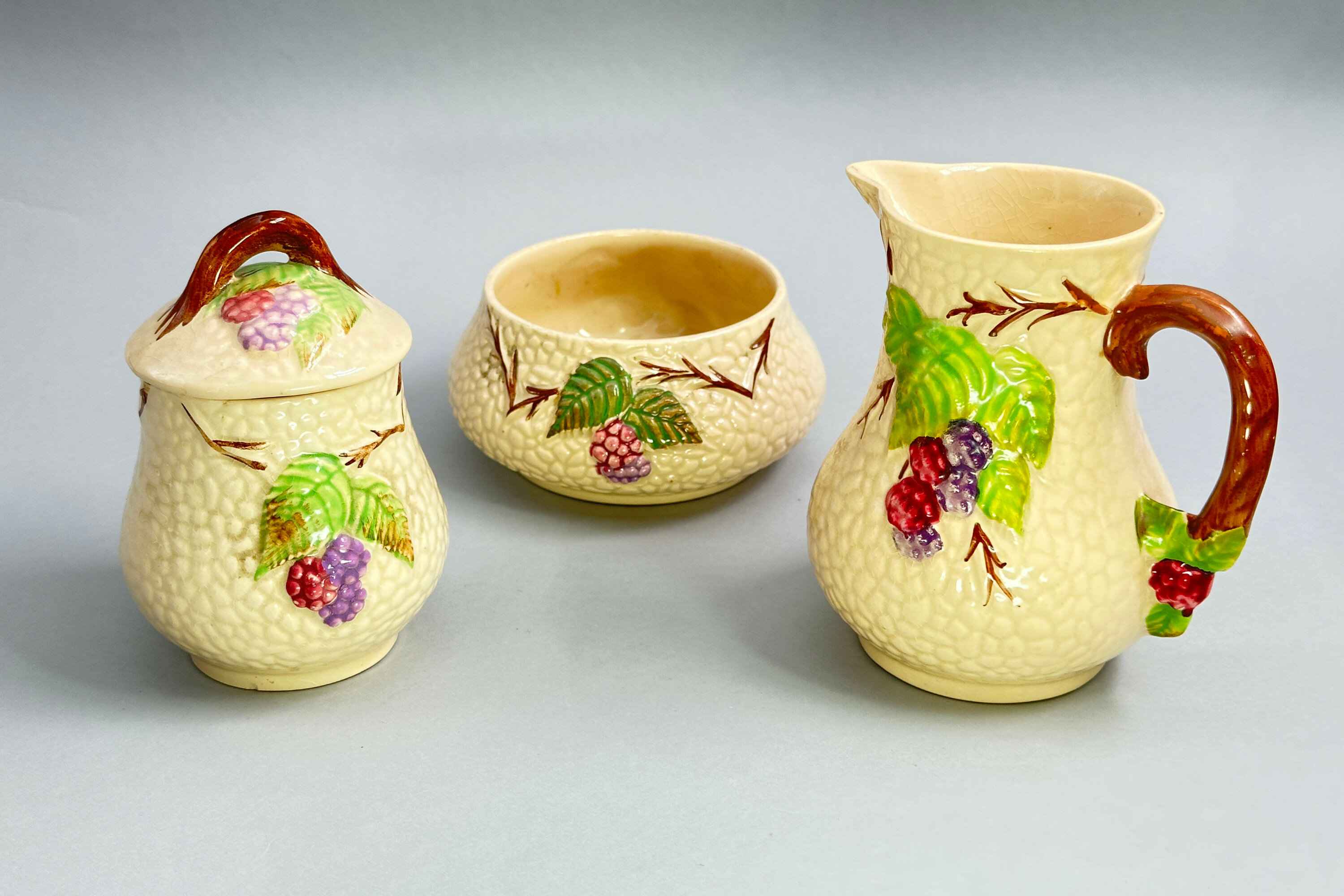
Set of three Wade Bramble Pattern teaware items, 1950s
Price: £25Wade Ceramics Ltd was a manufacturer of porcelain and earthenware, headquartered in Stoke-on-Trent, England. Founded in 1867, it was run by various members of the Wade family until the death of George Anthony Wade in 1987 after which there was a succession of management buyouts. Despite substantial investment in 2009, the firm eventually went into administration in 2022. Wade produced a wide variety of ceramics, including the well known Wade Whimsies animal figurines. A pair of Art Deco green glazed ‘salts’ are also included in this sale. The ‘Bramble’ design was created in the 1950s and a wide variety of tea service shapes were produced in the pattern. Collectors today can attempt to assemble examples from the whole of the range, towards which these three pieces might provide some assistance.
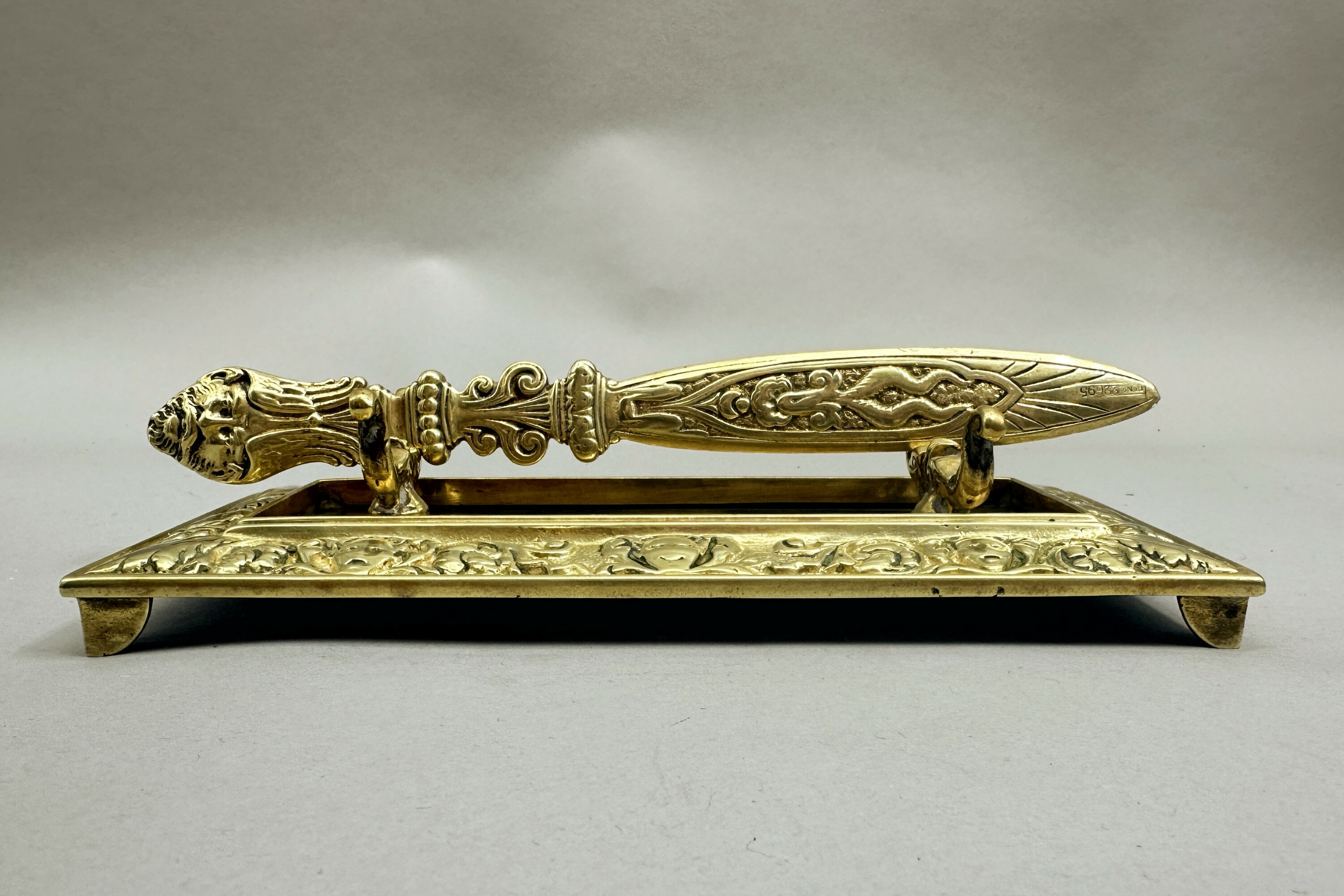
Renaissance Revival Letter Opener and Stand, English, c1900
Price: £25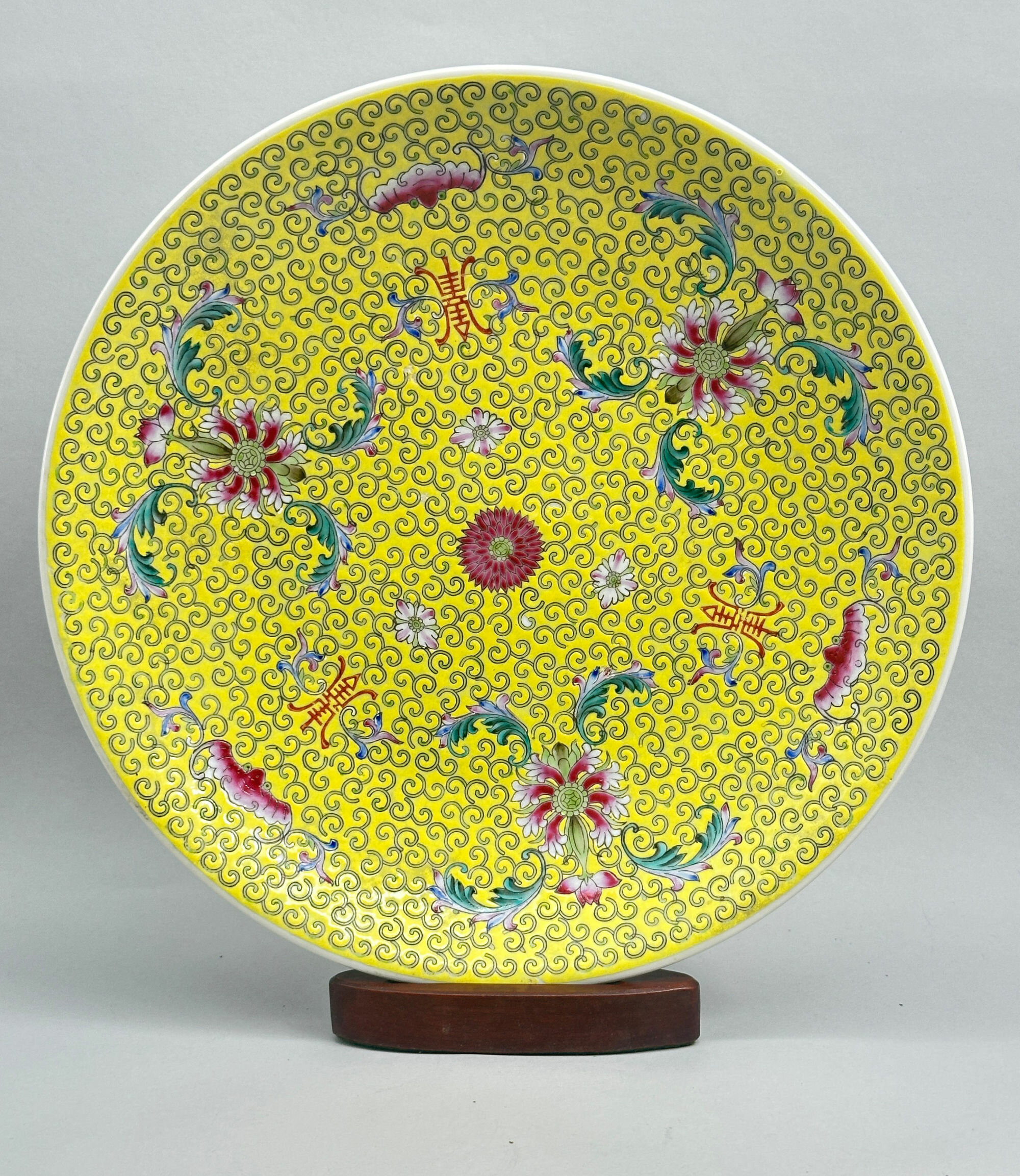
Chinese Yellow Ground Famille Rose Charger, 1950s/early 1960s
Price: £55This is a fine example of the porcelains made at Jingdezhen, for centuries the chief centre of ceramic production in China, in the early years of the People’s Republic of China (1949-). Soon after the communists took control, the kilns at Jingdezhen were organised into co-operatives, each with a number. Many of their pieces were marked and the form of the mark determines the date of production. The circular marks, as here, were the earliest allowing a dating of this charger to the 1950s or possibly the early 1960s. Some of these conglomerates, for the quality can vary, retained the skills of their predecessors and produced works of high quality. This is clearly seen here in the careful and precise enamelling and the general artistry of the design employing ‘imperial’ yellow with the symbolism of happiness (bats), longevity (shou symbols), friendship and a life of ease (chrysanthemum) and fruitfulness and offspring (lotus), all combining to produce a piece well worthy of its many predecessors.
Please note that the wood stand is for display purposes only and is not incuded with this lot.
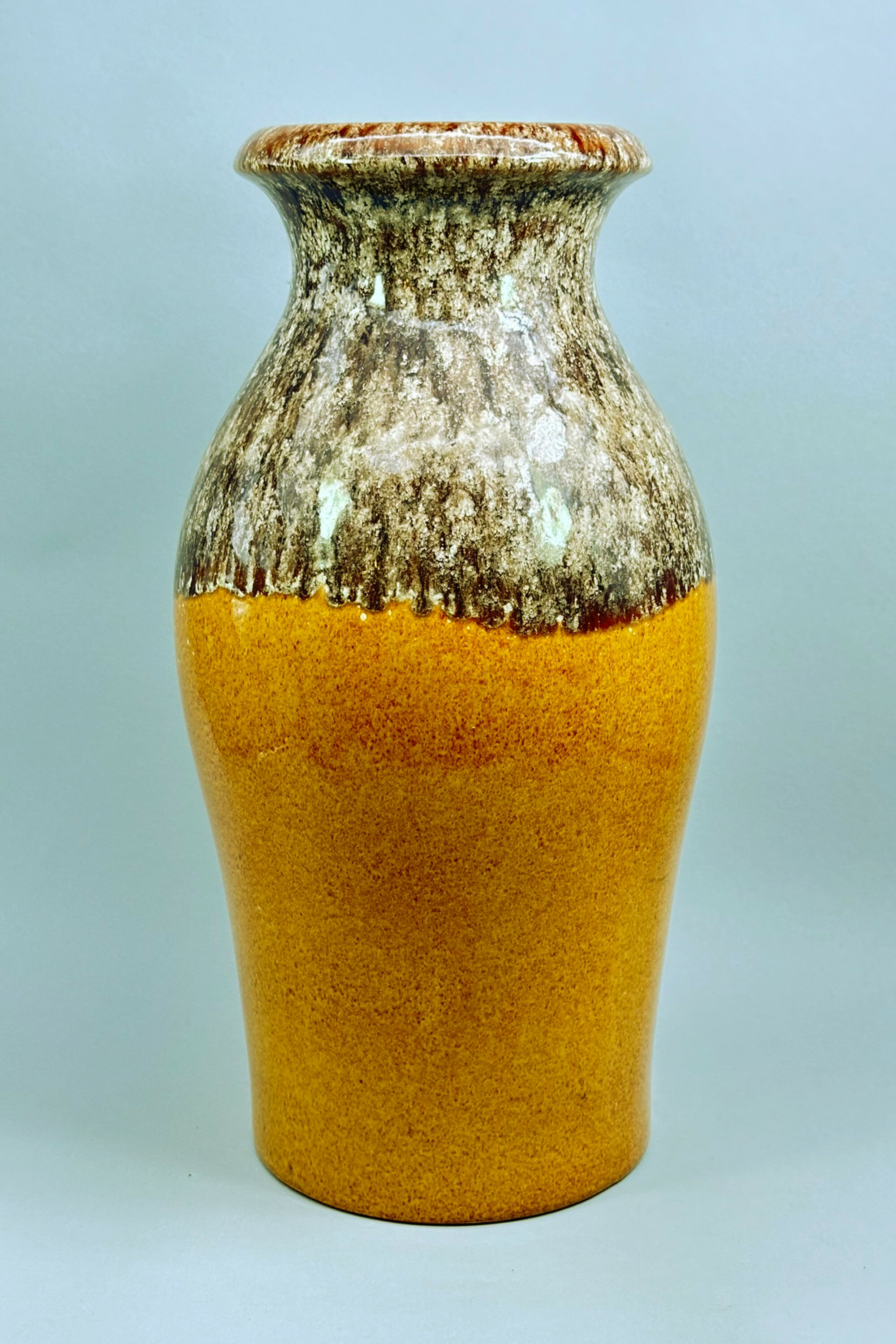
West German ceramic Vase, Scheurich, No 290-40, 1960s
Price: £55Although not marked as such, this vase has all the hallmarks of the firm Scheurich Keramik which started production in 1954, rather later than most of its competitors, but soon became the largest producer of commercial art pottery in Germany. Their pieces rarely carried the factory name but usually the model number followed by the height in centimetres with ‘W.Germany’ below, as here. Scheurich were well known for producing a wide variety of pieces with variegated, almost experimental glazes and this vase is yet another successful example of their work, the simple lines of form combining with a more austere selection of glaze effects than found in some of their other pieces. Dating is to the 1960s.

Vintage Needlepoint Picture of a lady dressed in a crinoline, framed, probably 1930s
Price: £25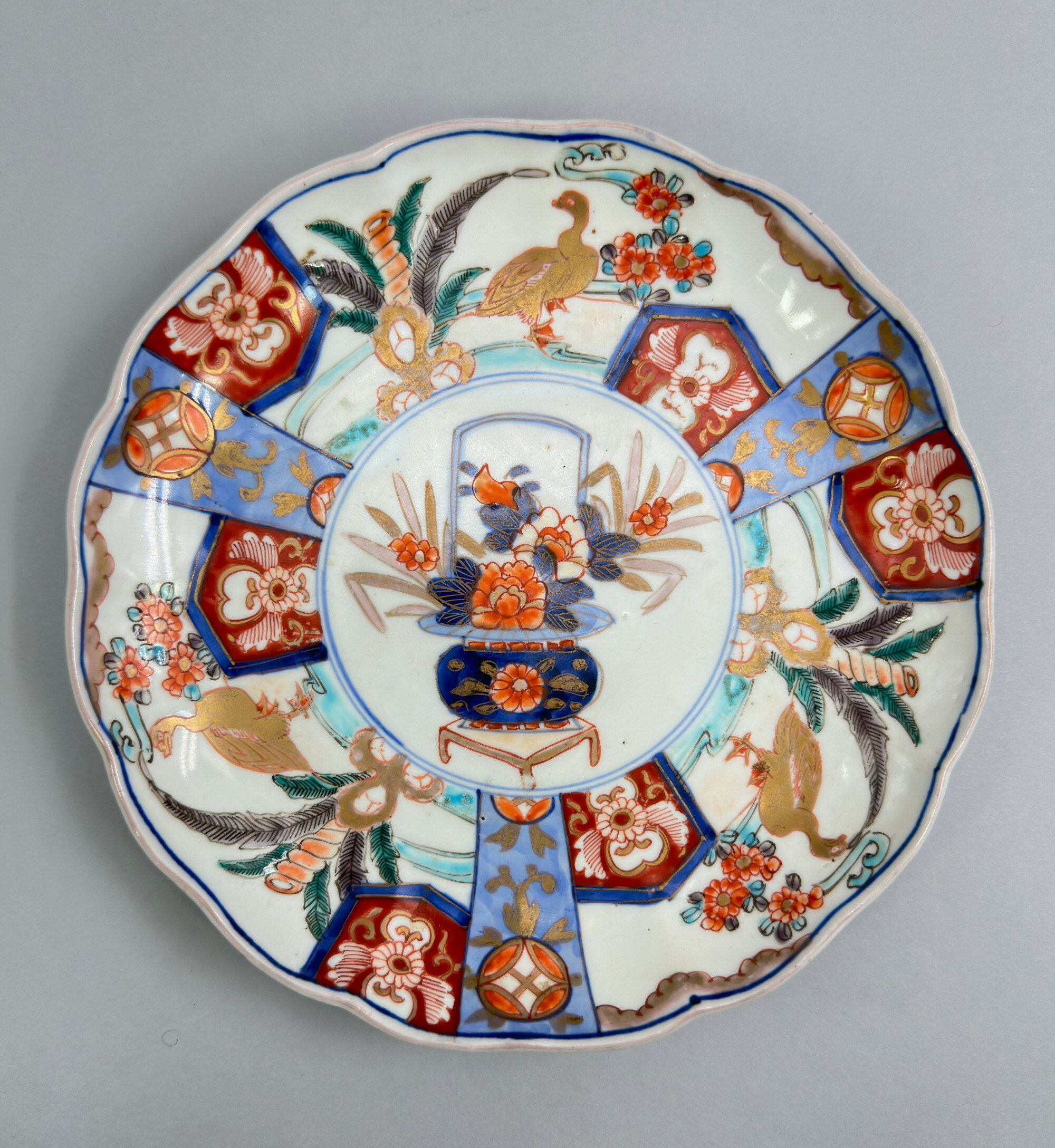
Japanese Arita Dish circa 1880
Price: £45The town of Arita in the former Hizen Province, northwestern Kyūshū island was a major cente for the production of porcelains in Japan. Best known for blue and white pieces it also produced polychrome wares as well, including the familiar imari colourings. While similar to Imari, the wider palette of colours used here is usually termed ‘Arita’ and the decorative appeal of the style is clear. This plate probably comes from an original set of five and its quality is much above average. Dating is to the Meiji era (1868 - 1912) probably around 1880.
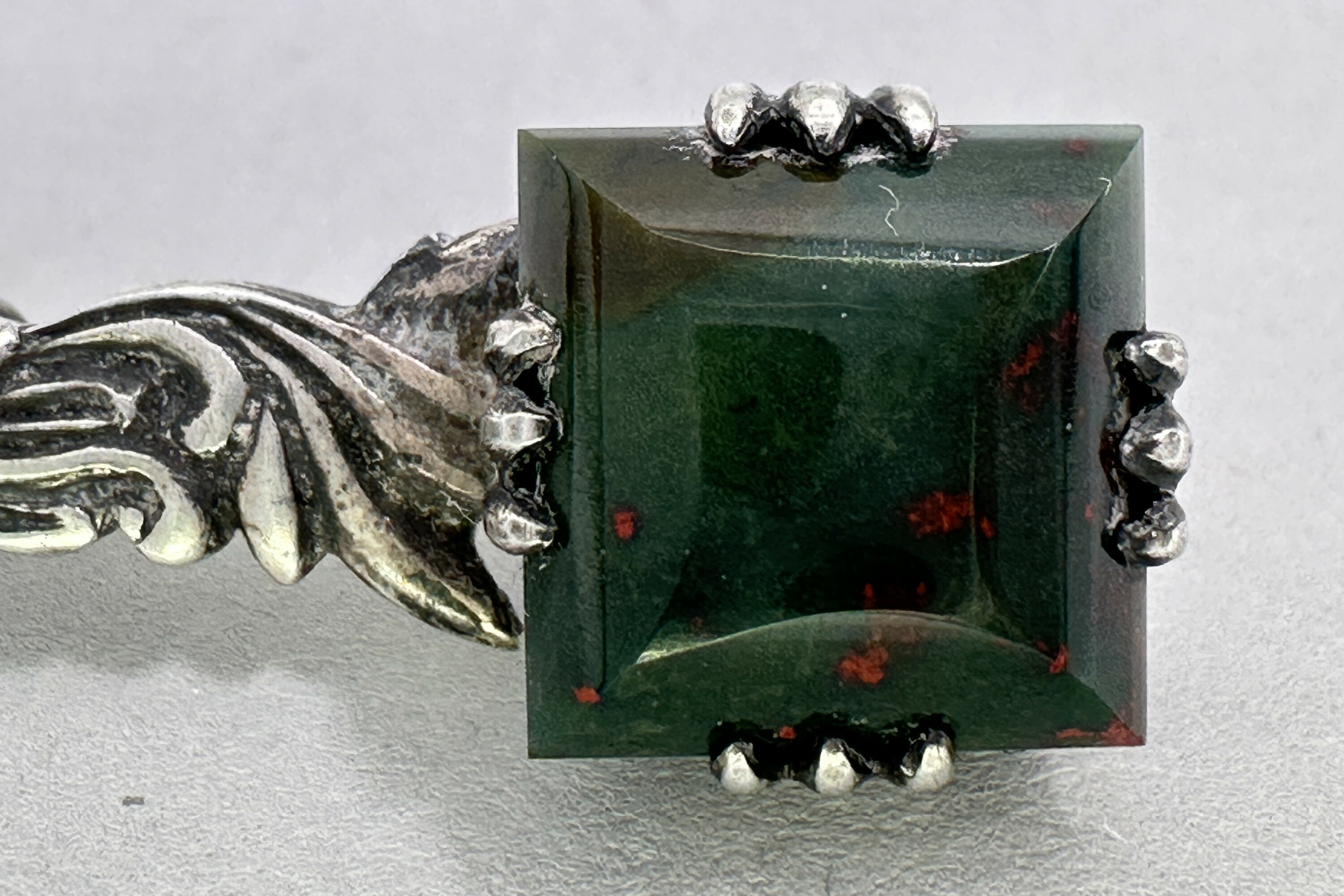
Edwardian Scottish bloodstone bar brooch c1910
Price: £20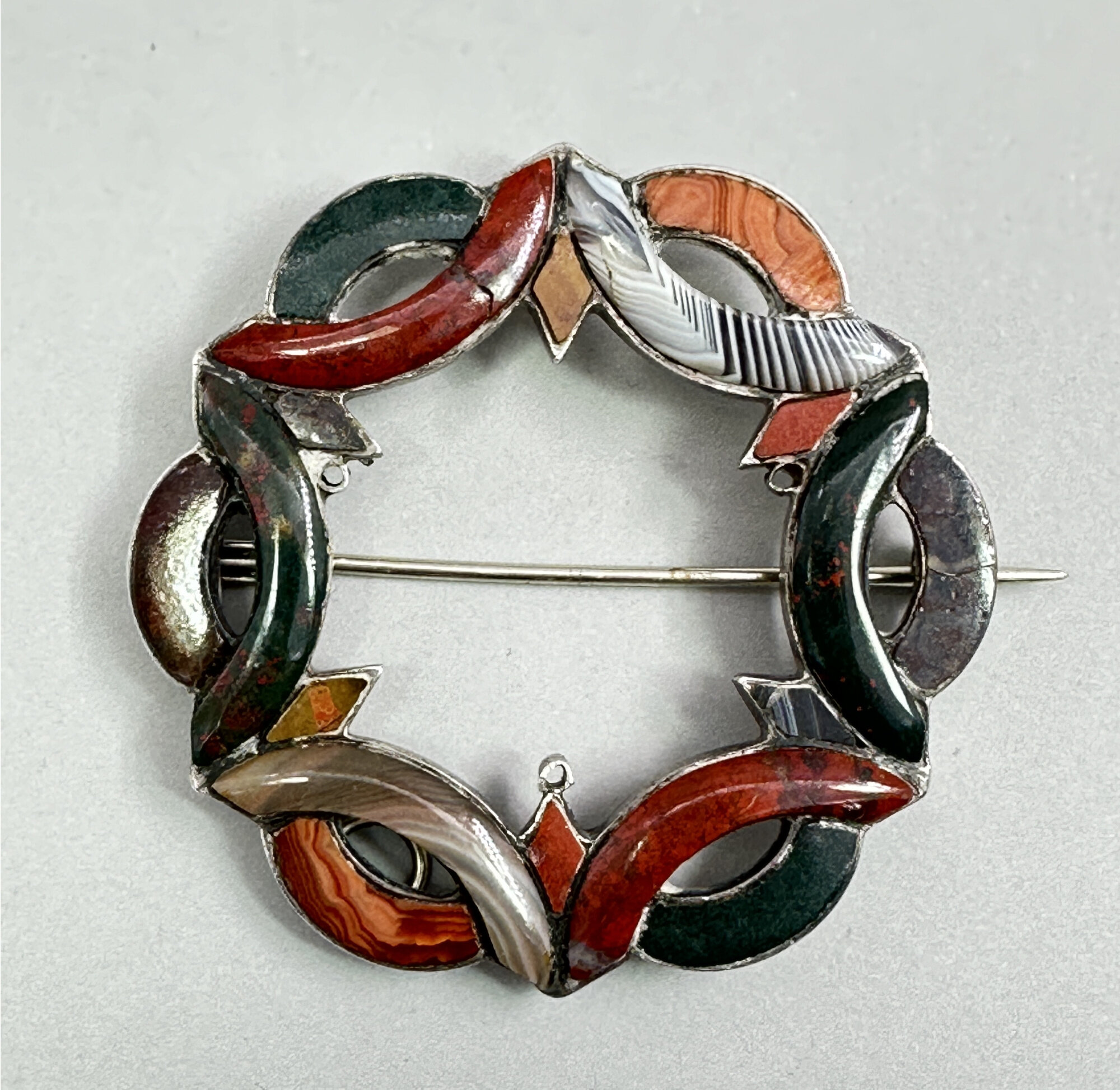
Large round Scottish agate cloak pin c 1900
Price: £125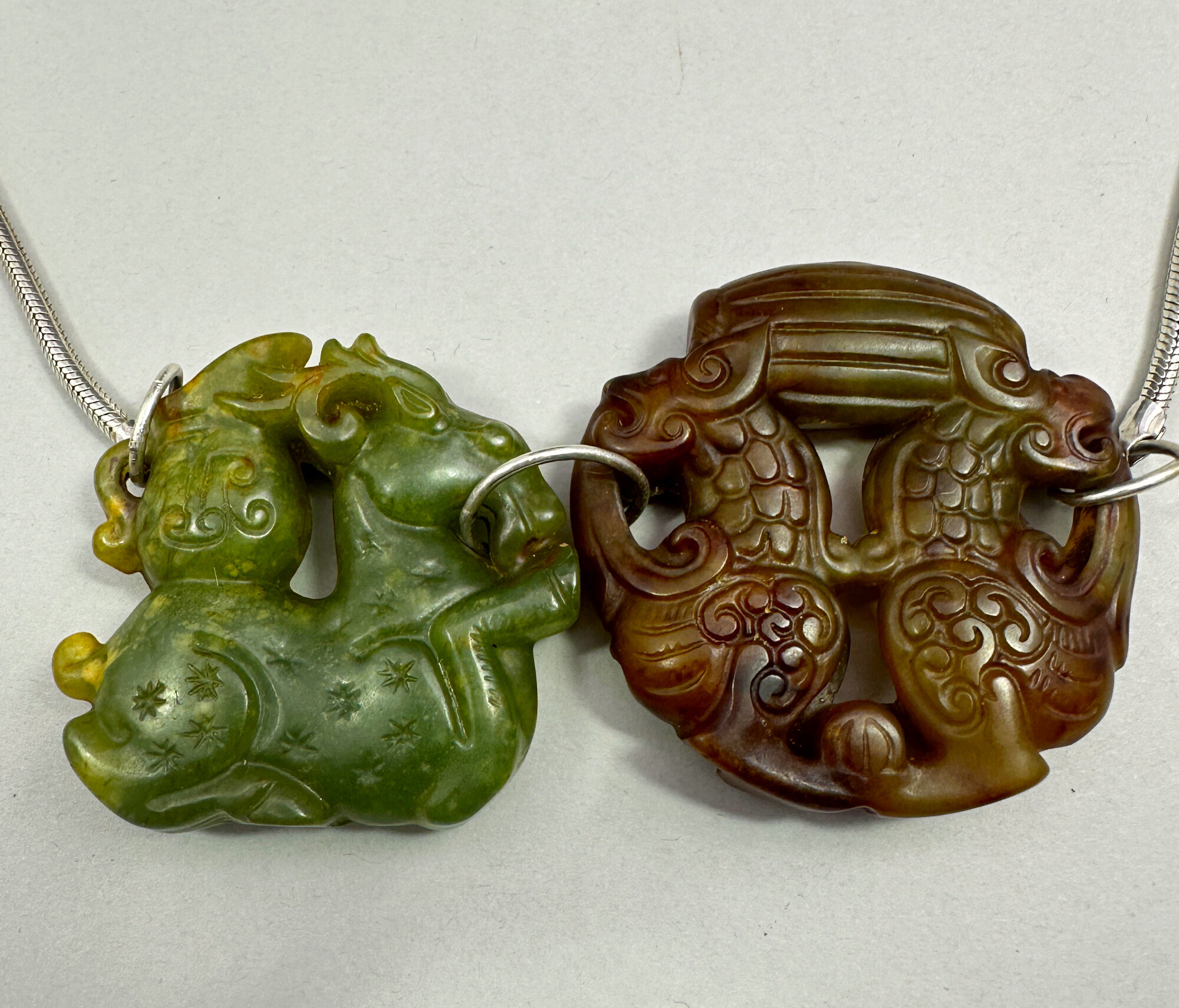
Two jade carvings mounted as a necklace
Price: £125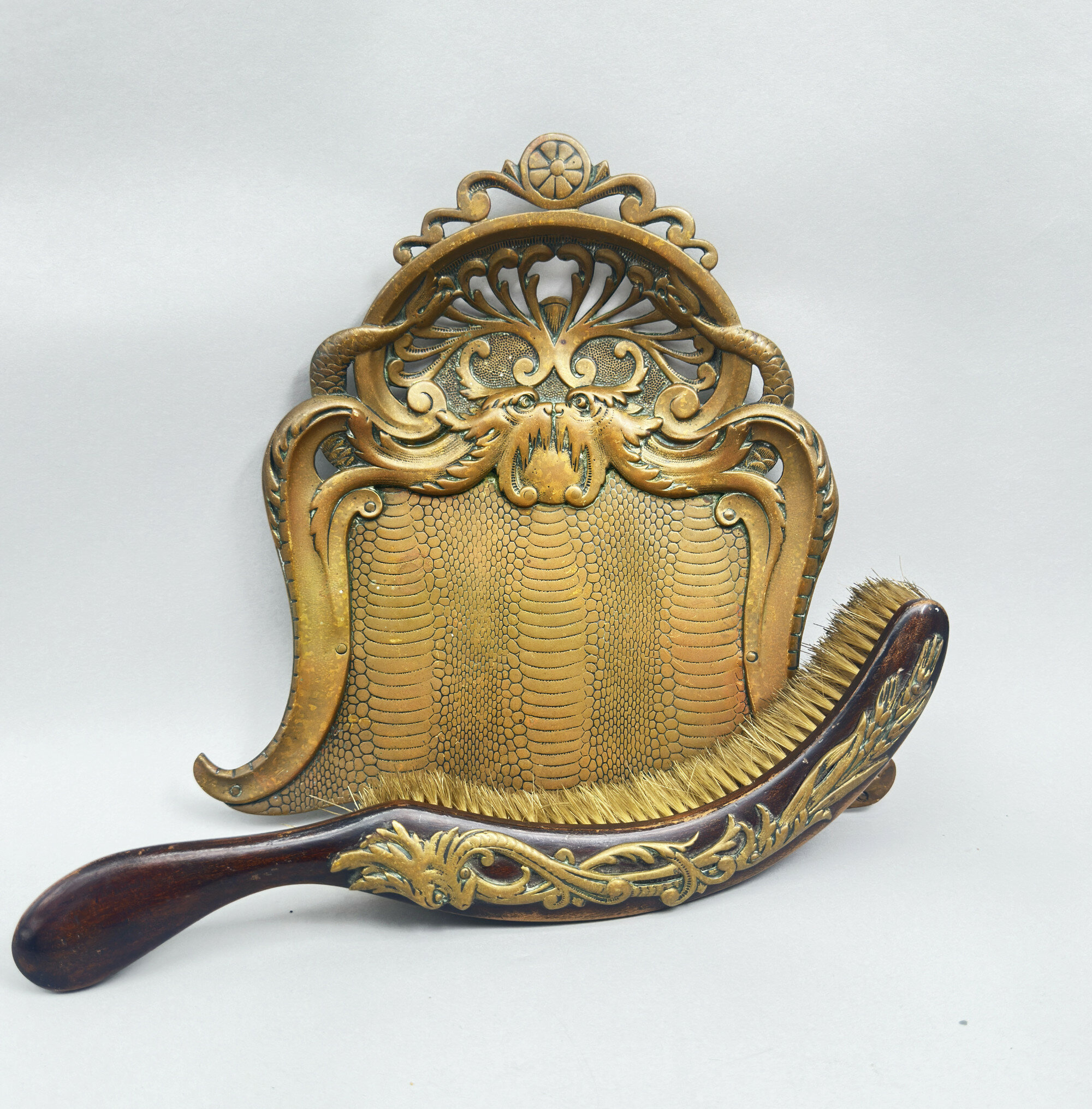
Townshend & Co : Butler’s Crumb Tray and Matching Brush, Birmingham c1900
Price: £75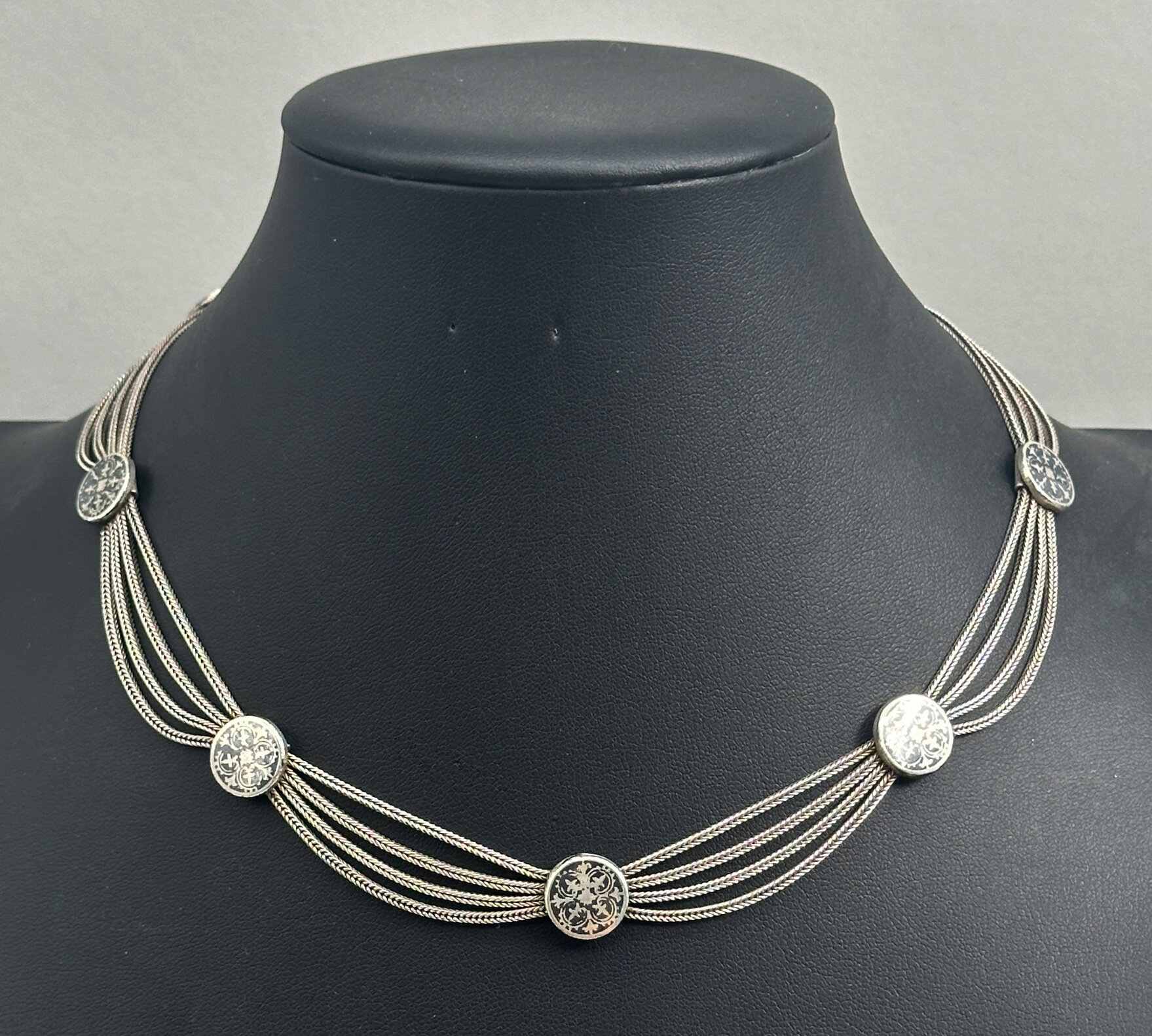
Islamic Silver Necklace with Niello work plaques, c1930
Price: £75The technique used is that of ‘niello’ work. (The word derives either from the classical Latin word ‘nigellum’ or the later mediaeval words ‘nigello’ or ‘neelo’.) Niello is a black mixture, usually of sulphur, copper, silver, and lead and used as an inlay on engraved or etched metal, especially silver. Added as a paste, it hardens to a black colour after firing and is then polished. Here it is the ground that formed from niello while the design shows though in silver, a less common version.
There is much skill in the craftsmanship here and the result is a piece of classic and timeless simplicity.
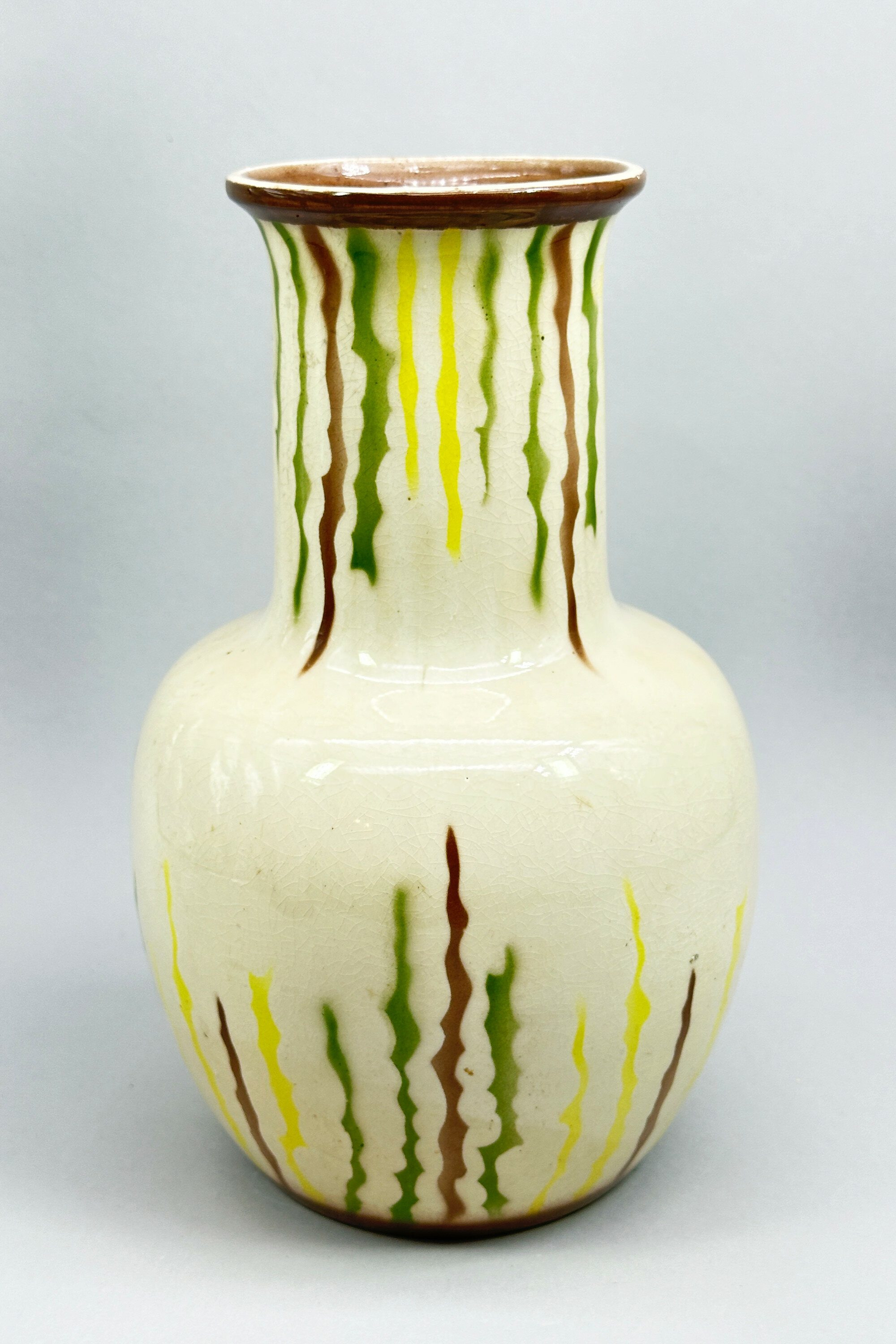
Art Deco style Vase signed E.Radford, mid C20th
Price: £75There were, in fact, two craftsmen working in the C20th British pottery industry with the name Edward Radford, father and son. Radford senior worked for Pilkington’s Royal Lancastrian Pottery in Manchester from 1903 until his retirement in 1936, acting as their main thrower. Radford junior joined his Father in 1905, but the First World War intervened, in which he won a Military Cross for his actions at Passchendaele in 1917 and afterwards he settled in Stoke on Trent, the heart of Britain’s pottery industry. An association developed with H.J.Wood’s Alexandra Pottery in Burslem who produced a range of wares bearing his name in the 1930s, although Radford himself may have acted as more a salesman than the designer. Production continued after the war and even after Radford’s retirement in 1948. The form of mark used here implies the later dating but may have been used earlier. The impressed figures indicate model number. Even if this vase is post war, the style is emphatically that of pre war Art Deco period with the simple lines of the form accompanied by semi abstract decoration vaguely reminiscent of Clarice Cliff combining to produce a piece of timeless attraction.
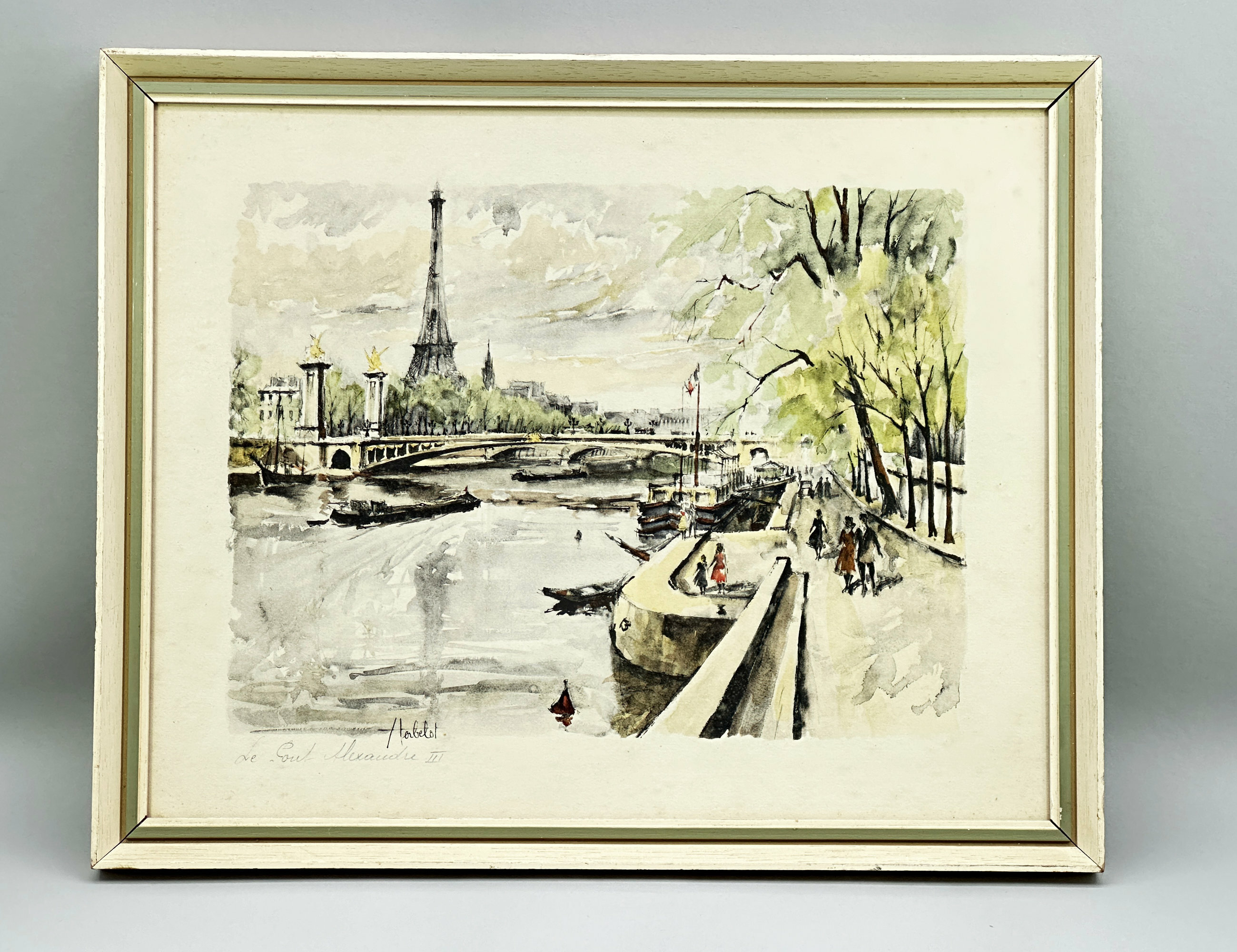
Lithograph Print, Le Pont Alexandre III in Paris, signed Herbelot, 1950s/1960s
Price: £45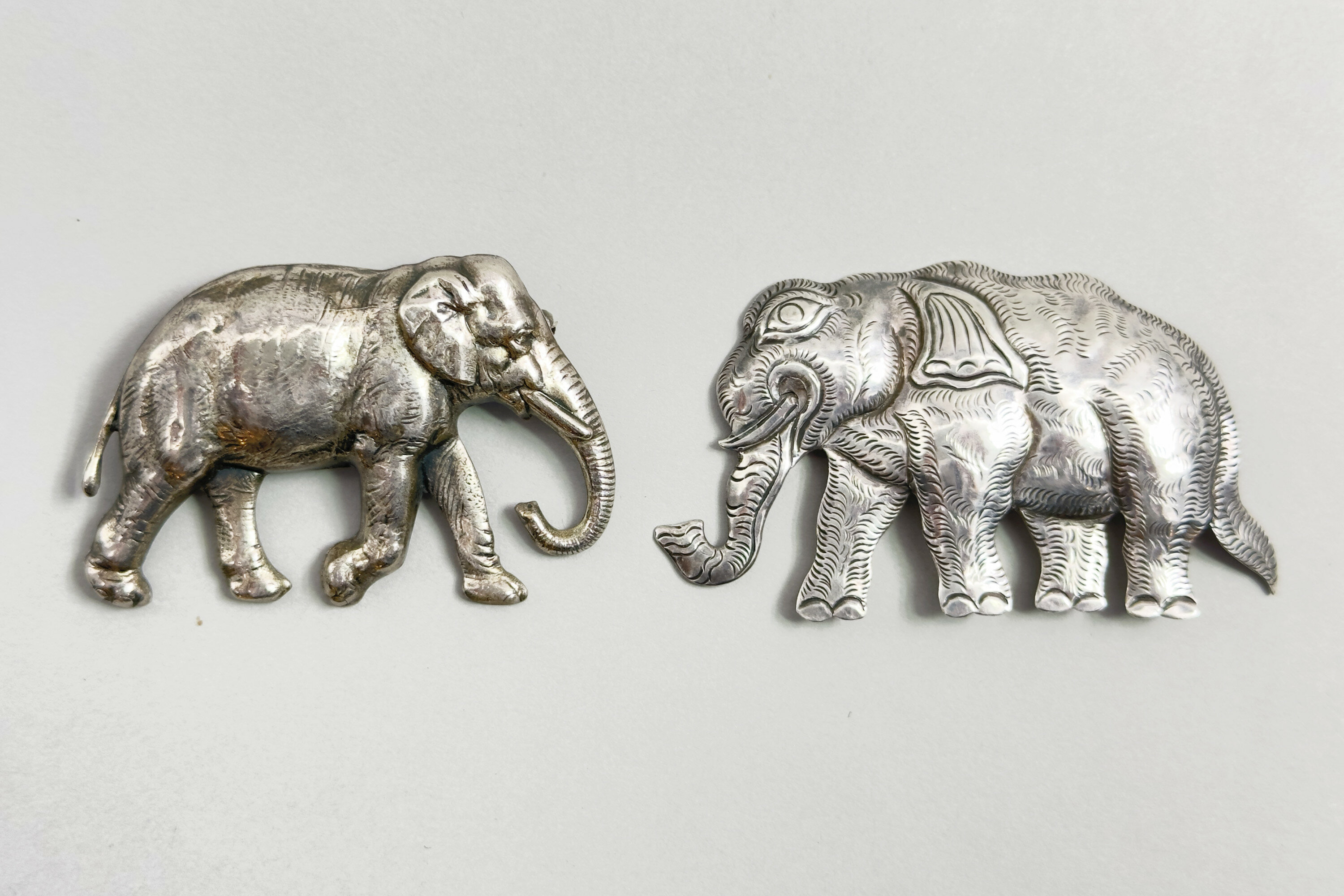
Fun lot of two Indian silver elephant brooches c1930
Price: £45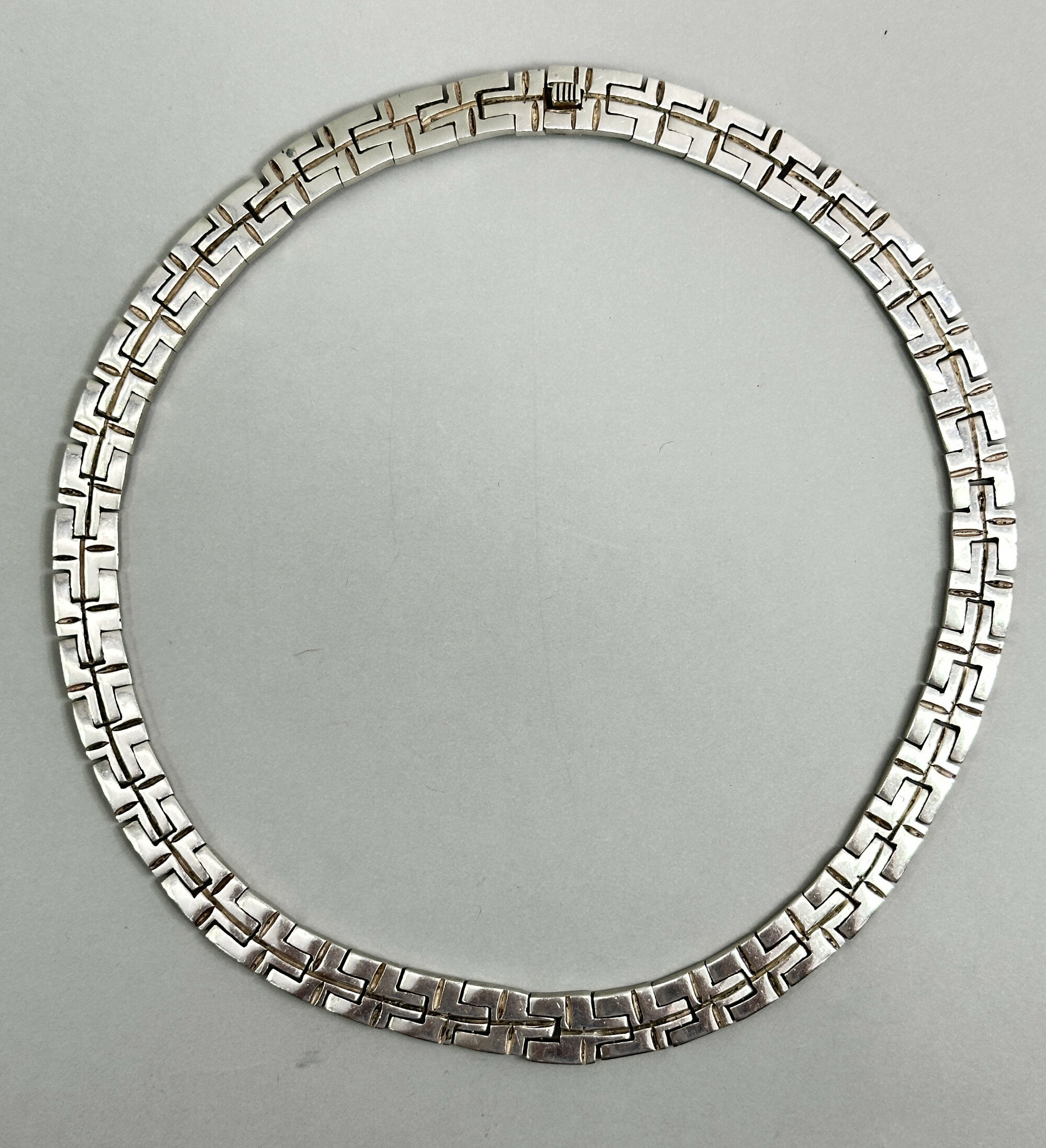
Taxco collar necklace by Rubi Ramirez c1950
Price: £350
Very fine Berber North African necklace c1950
Price: £50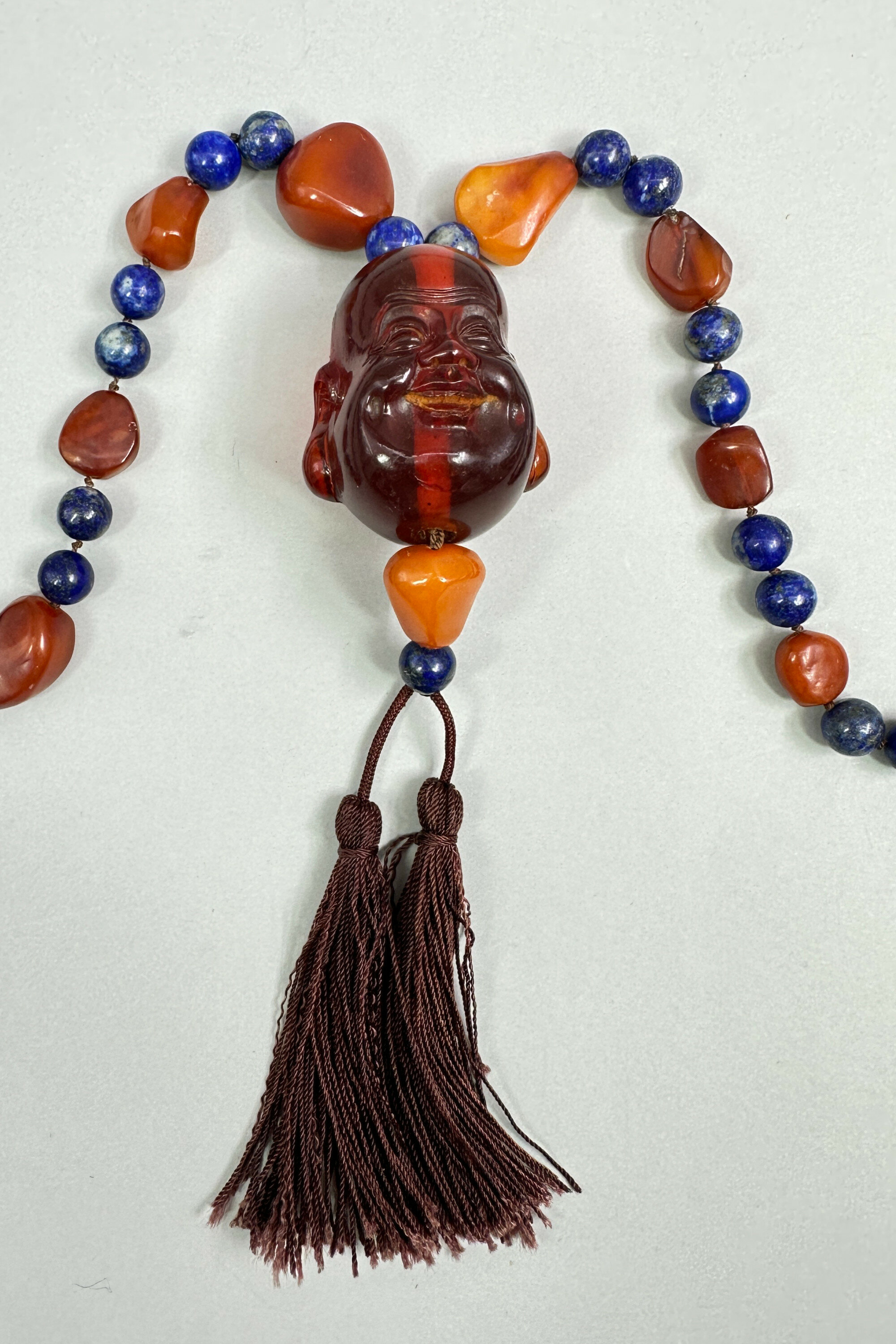
Amber buddha carving on egg yolk amber and lapis necklace
Price: £175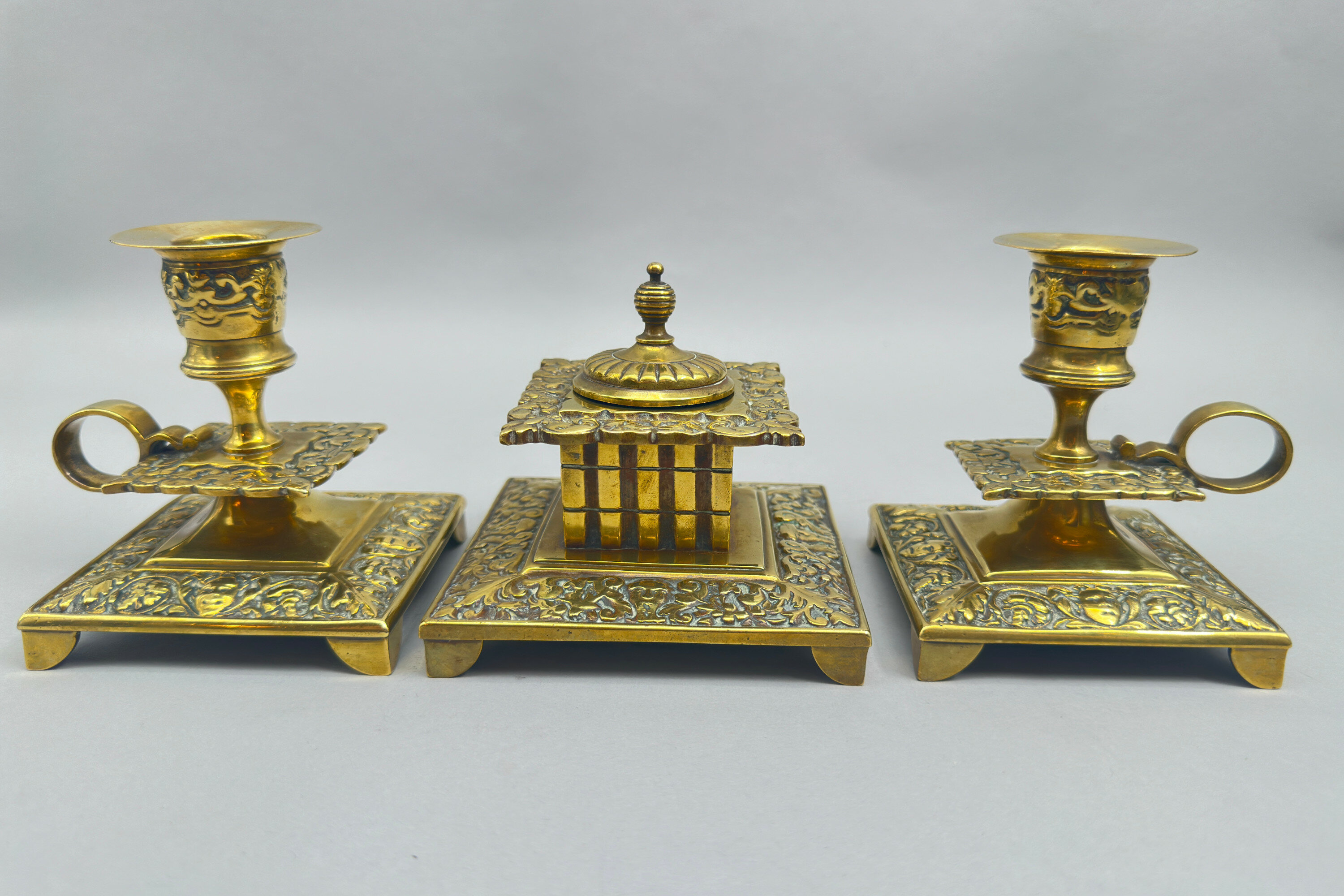
Renaissance Revival Brass Desk Set, English c 1900
Price: £55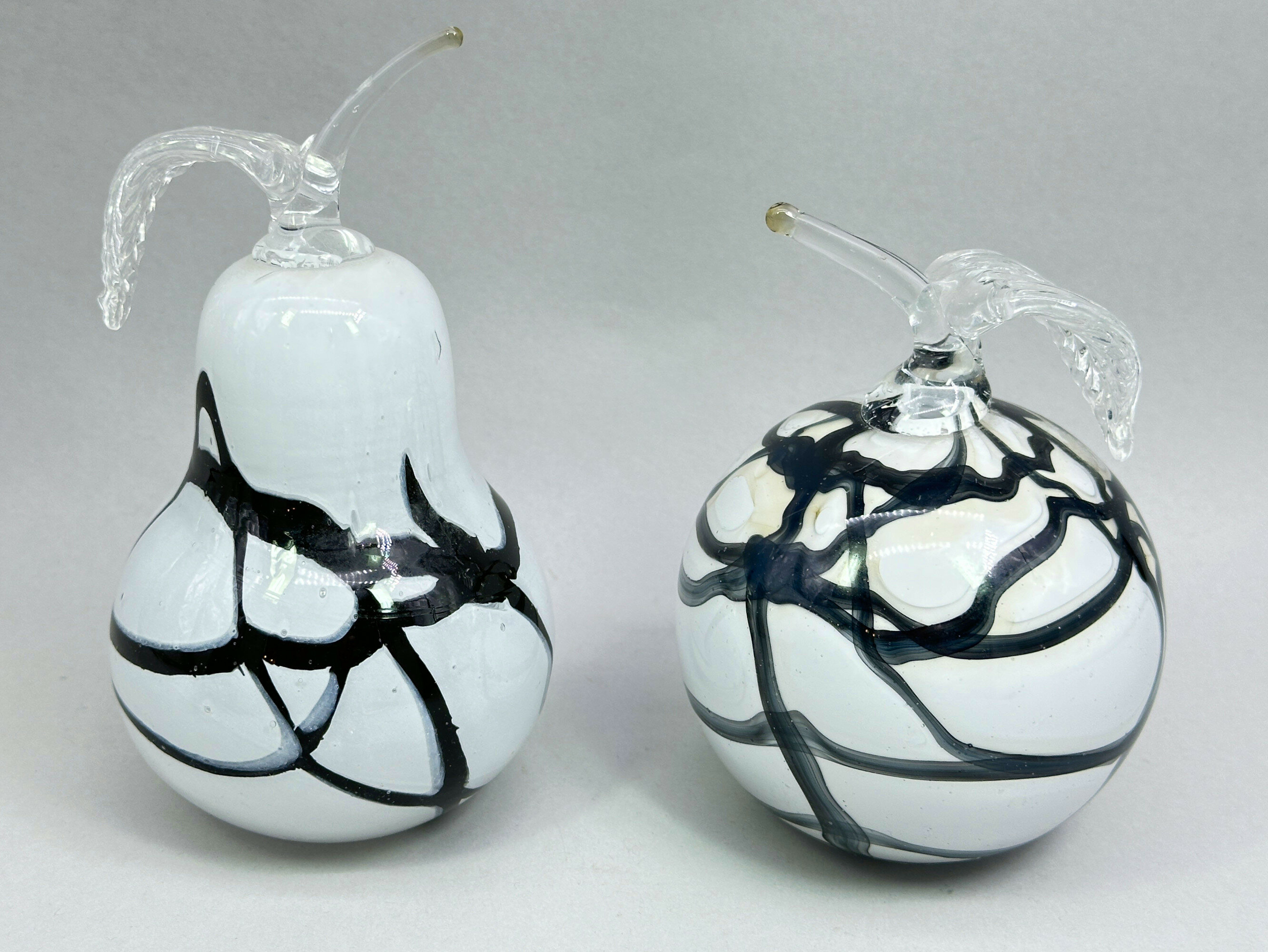
Two Amelia Art Glass Vases, Apple and Pear
Price: £30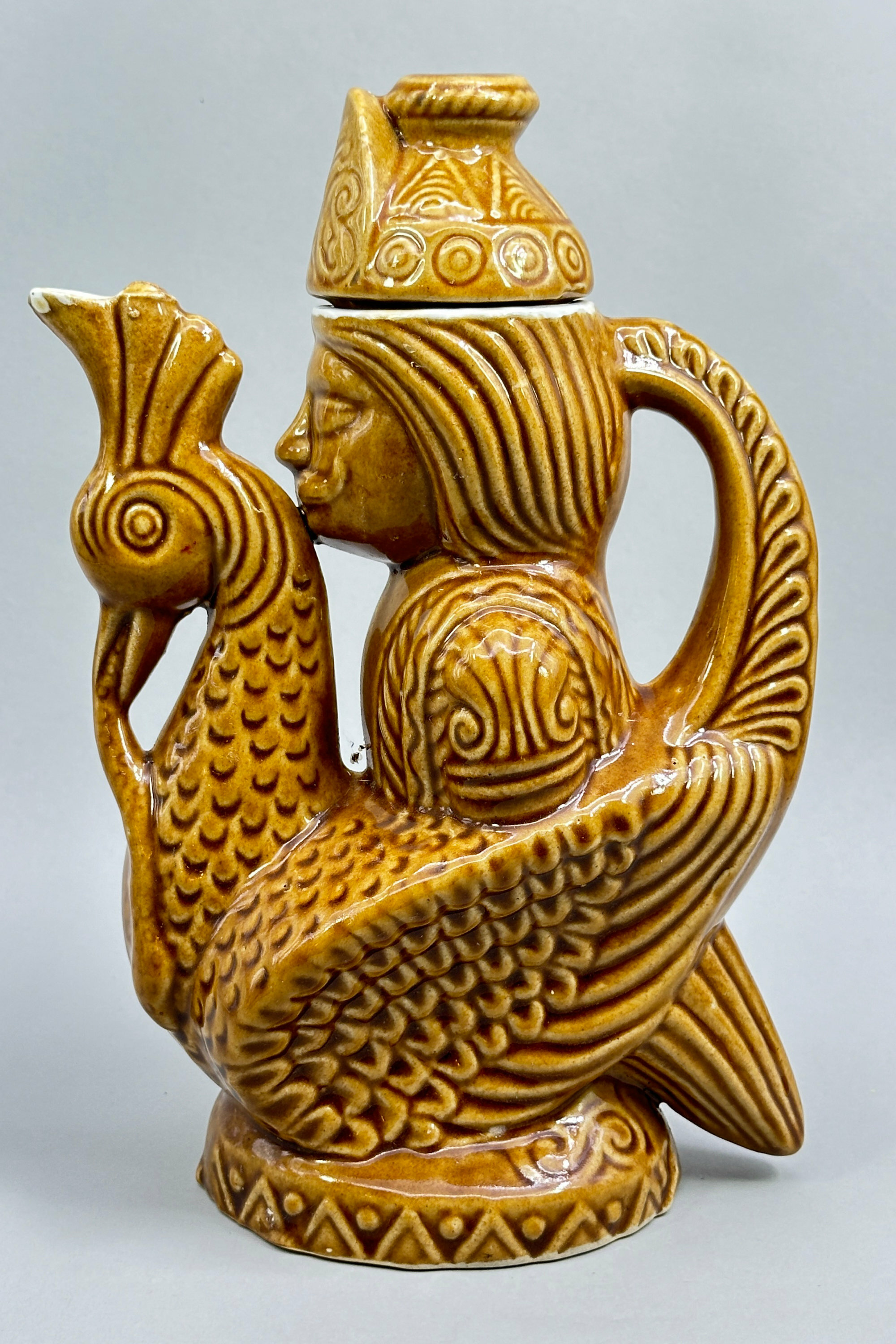
Bird form ewer with cover, possibly Russian c1960
Price: £45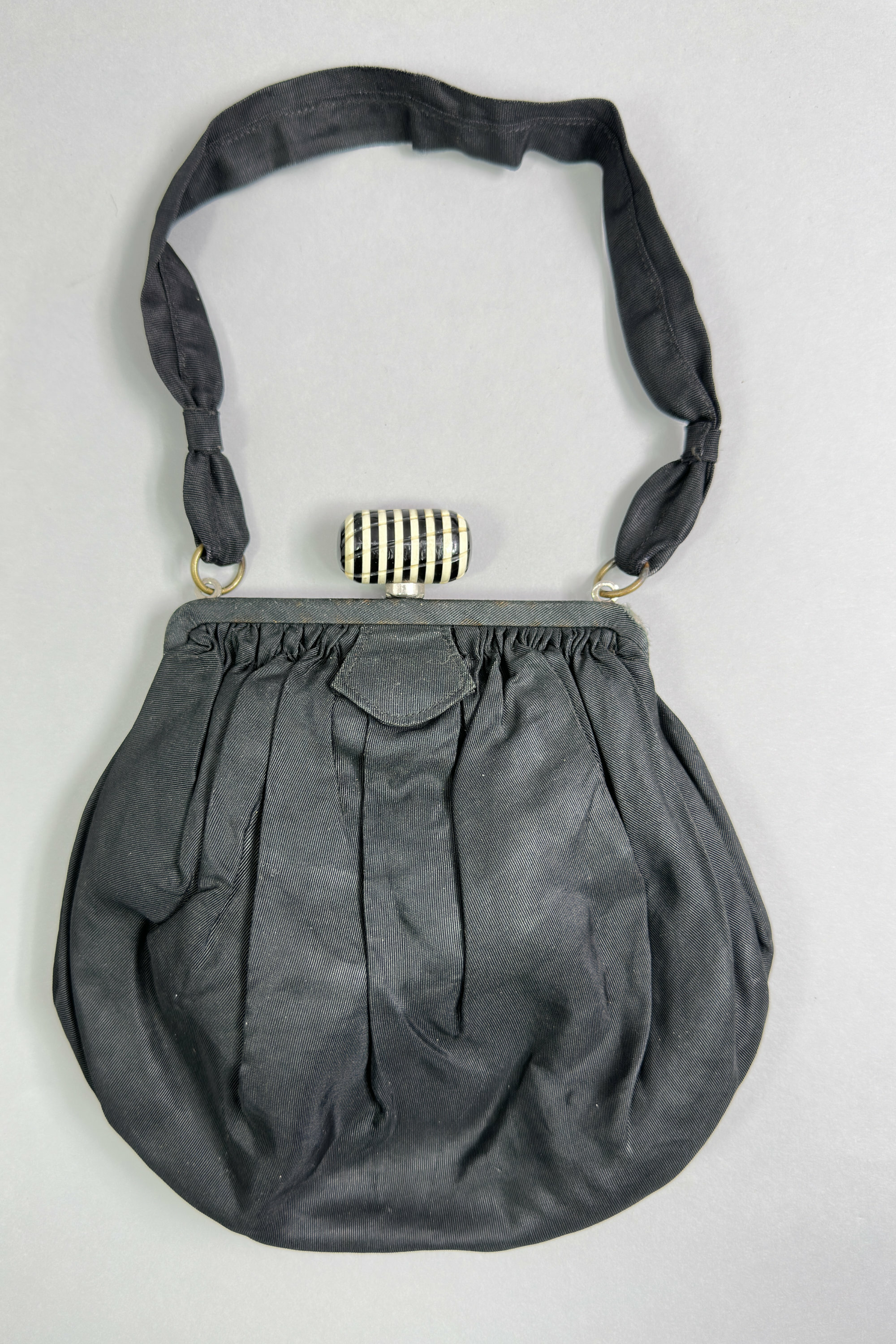
Small Art Deco wrist bag with Bakelite closure, French 1920s
Price: £35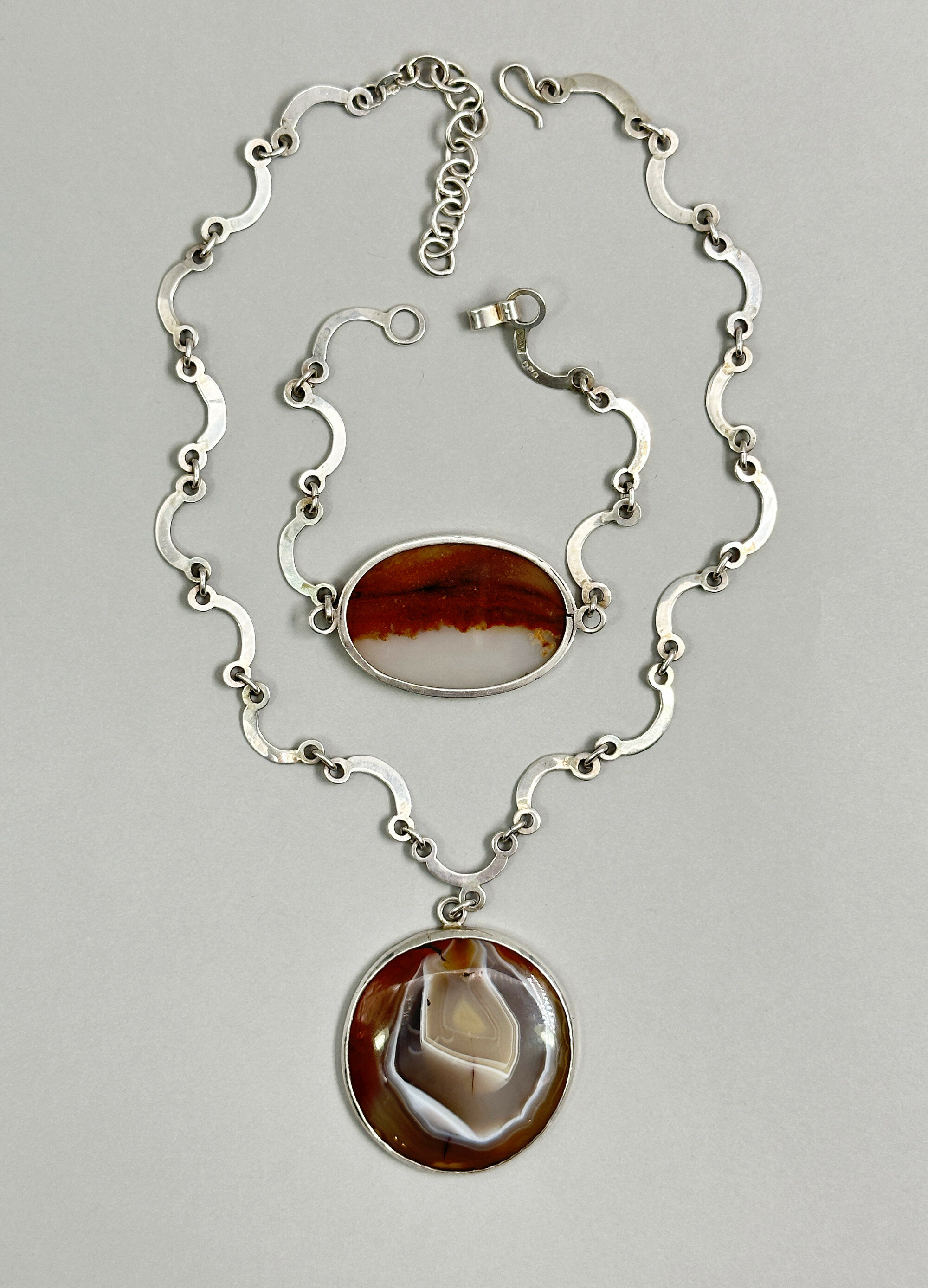
Suite of Scottish agate necklace and bracelet c1970
Price: £50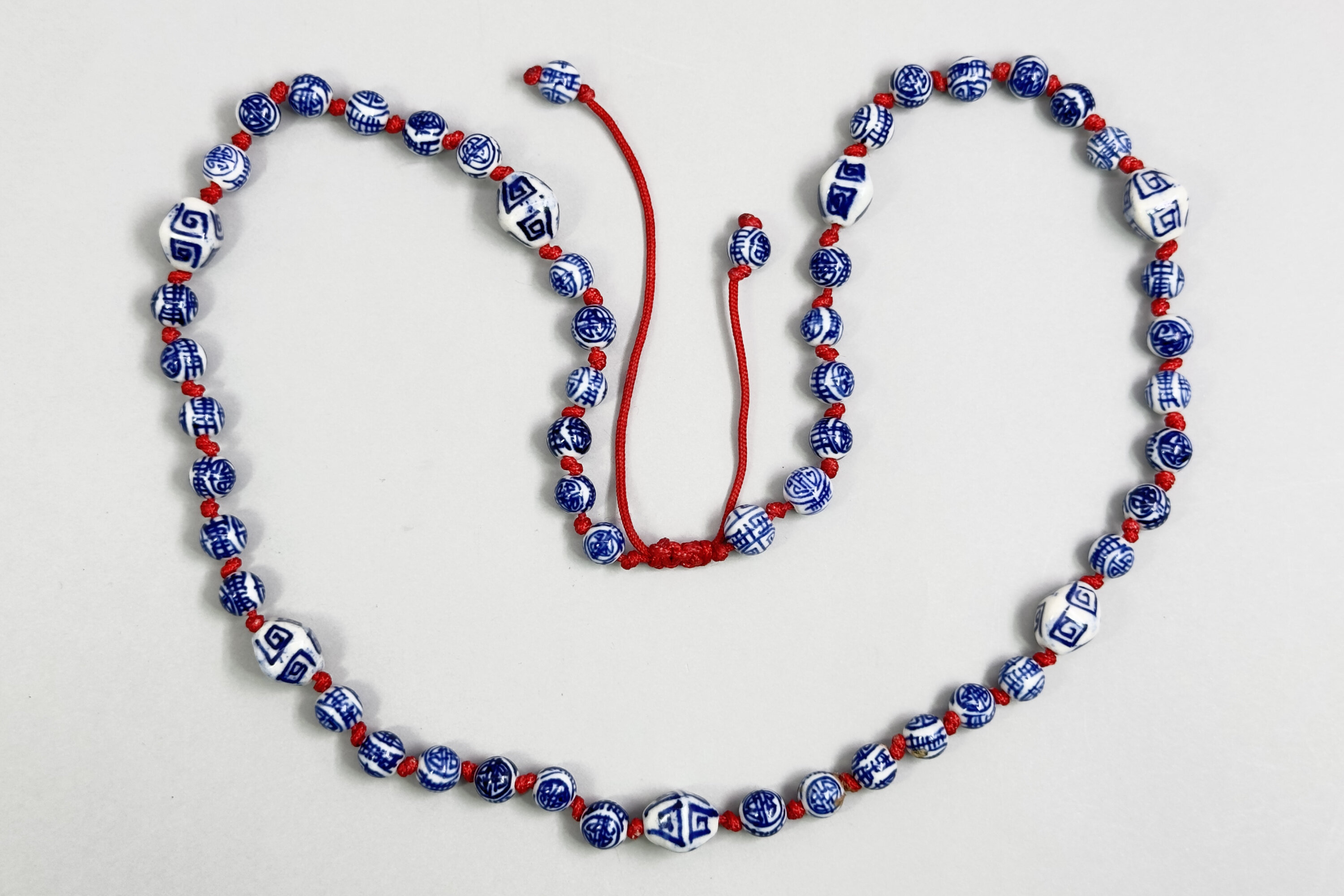
Chinese Blue and white ceramic beads, C20th
Price: £15PLEASE NOTE THAT THERE IS FREE UK SHIPPING ON THIS ITEM. For international buyers the shipping cost will be reduced by the UK shipping cost, so don't worry if you are outside the UK, you still receive this benefit!
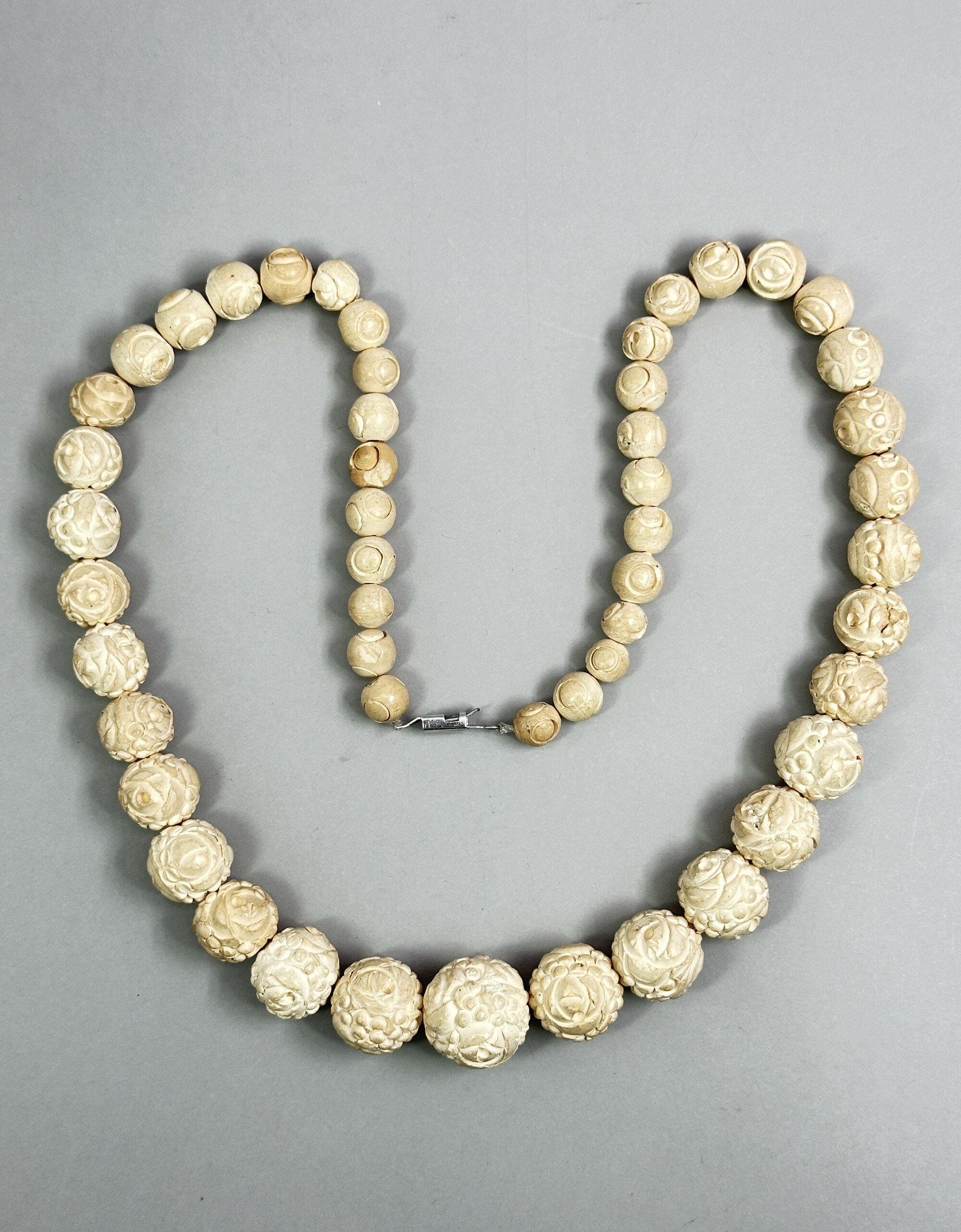
Large graduated necklace of nut carving beads, 1930s
Price: £25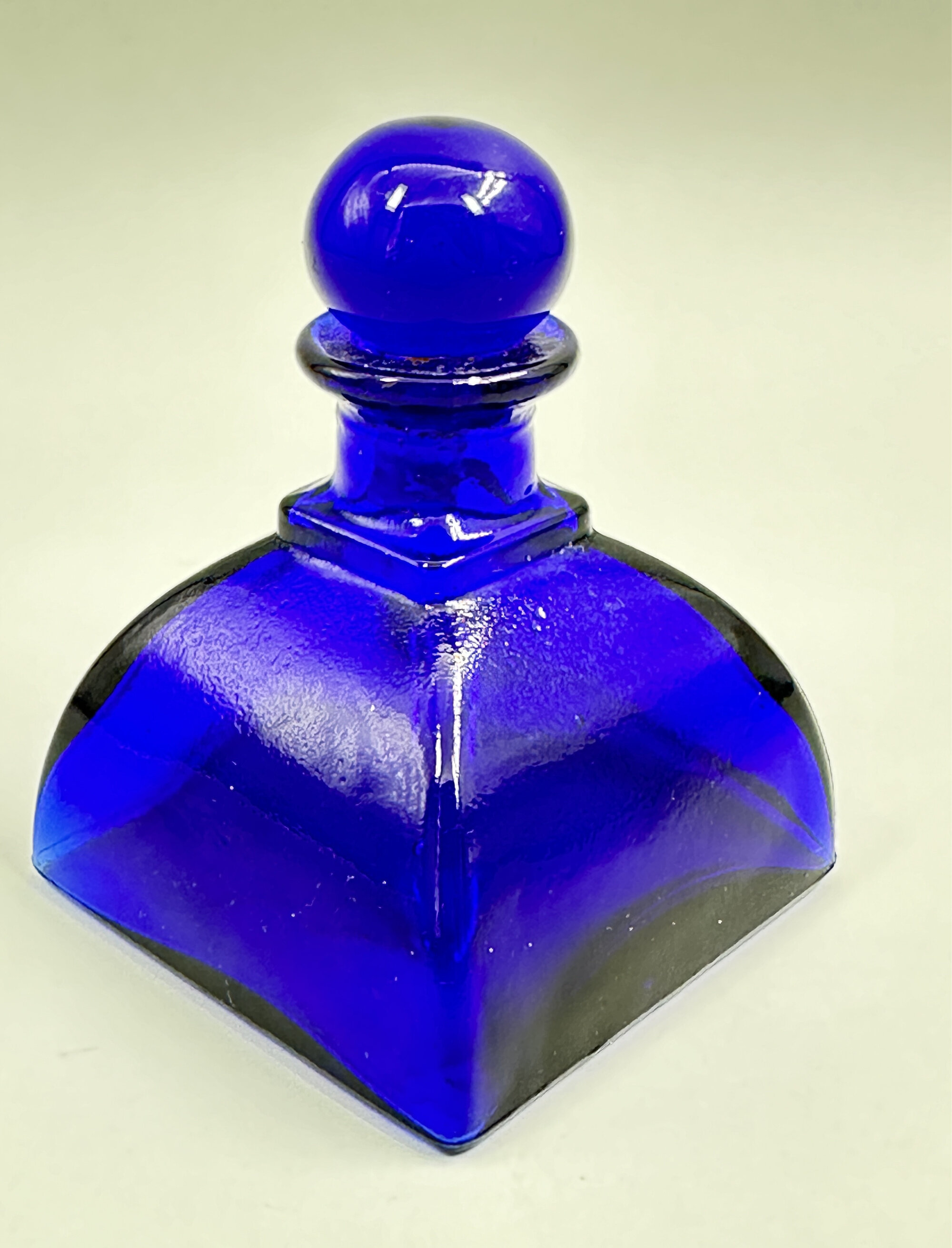
Vintage Cobalt Blue Glass Perfume Bottle and Stopper, 1930s
Price: £25
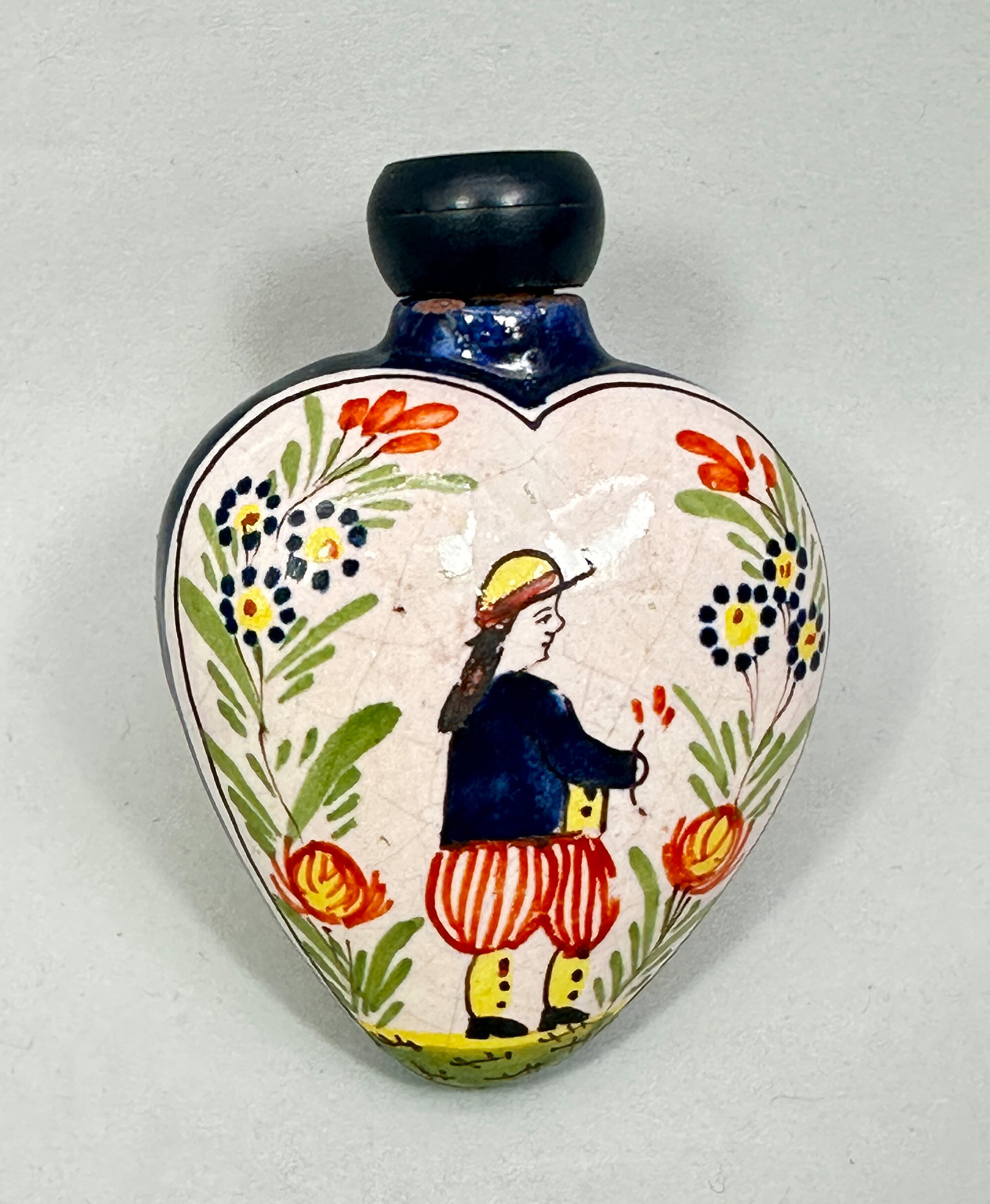
Faience Perfume Bottle and Stopper, Quimper France, C20th
Price: £75This bottle has the Breton gentleman on its front face and a fleur de lis to the reverse. The stylised lily, known as fleur de lis, became a symbol of the French royal family and France in general. It occurs, for example, on the Canadian flag but was also regularly used as a decorative motif by the Quimper potteries. These bottles can date to as early as the beginning of the twentieth century but a later time of production is probably a safer assumption here, perhaps to the 1950s. Few of these bottles survive with their fitted stoppers and the traces of cork to the top interior suggest that this stopper has been in place for some time and probably since the date of manufacture.
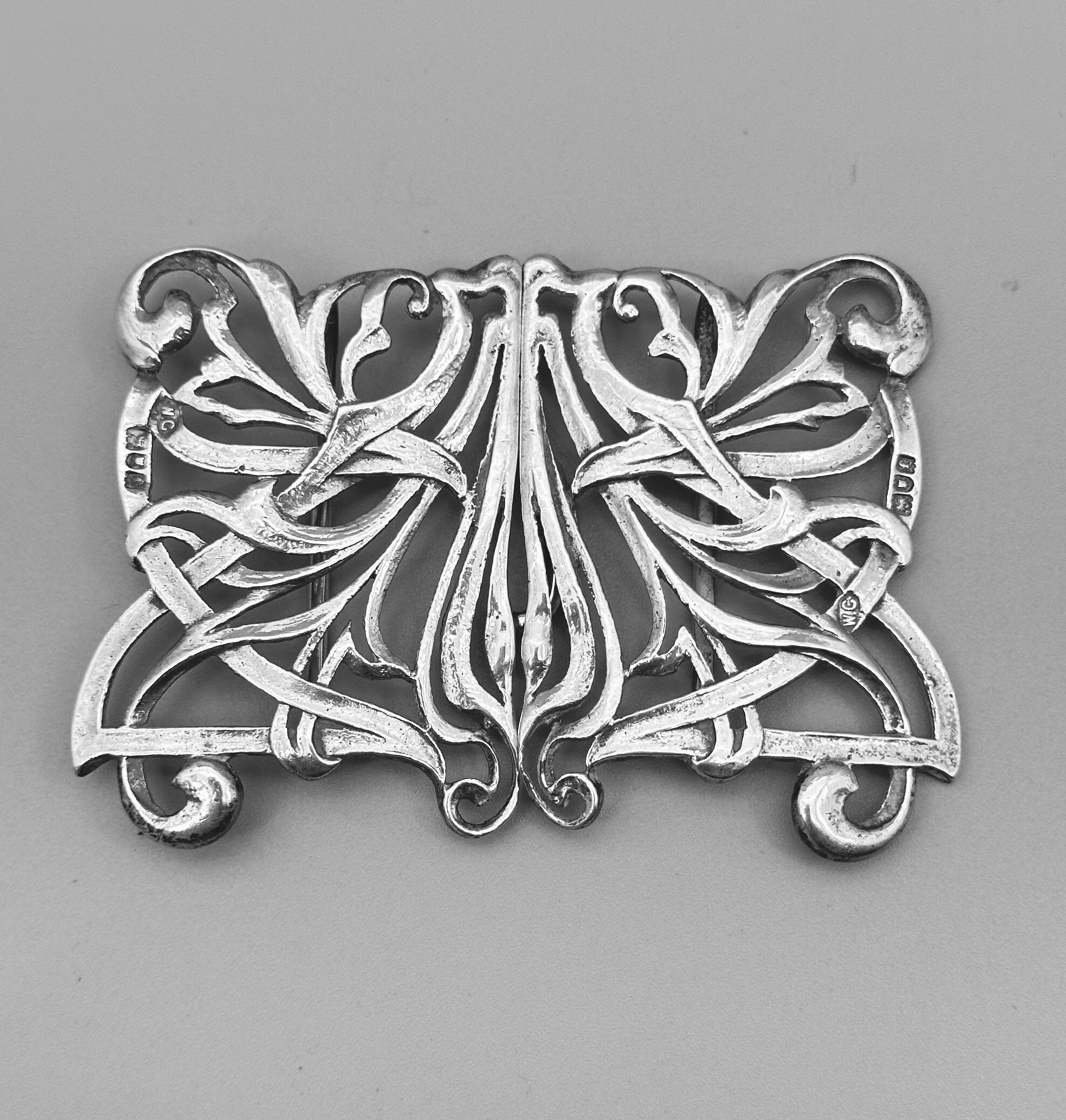
Art Nouveau William Comyns silver buckle, 1901
Price: £250William Comyns founded the company in 1858. He initially operated from the former premises of silversmith Robert Tagg at 2 Carlisle Street, Soho, London, where he registered his first maker’s mark (W.C in a four-tipped oval) in 1859. Comyns’ silverware was retailed by some of the world’s most prestigious firms, including Tiffany & Co., The Goldsmiths & Silversmiths Company, and leading London retailers such as Henry Lewis and Howell & James.

Indian Brass and Copper Inkwell, C20th
Price: £55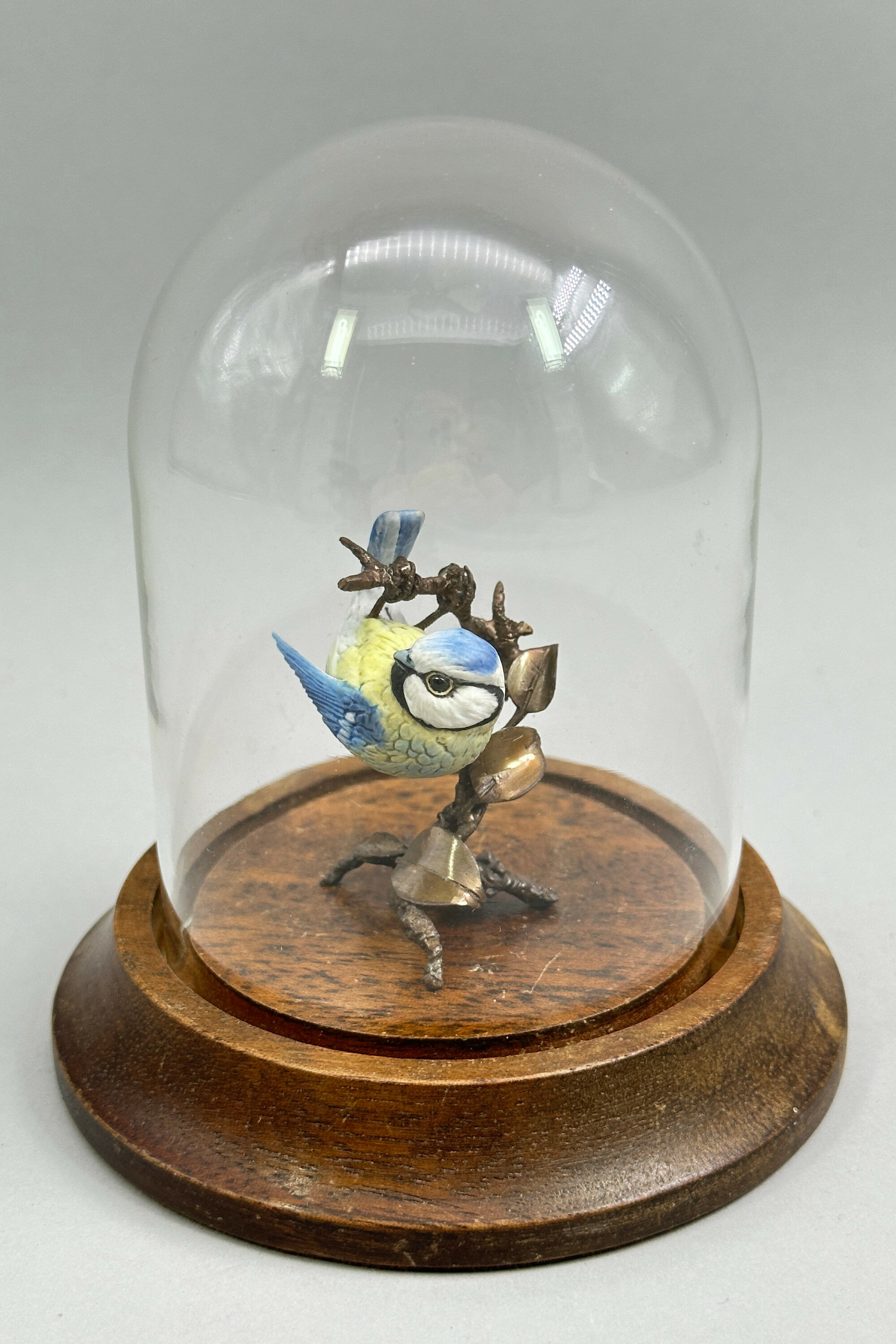
Ceramic and Bronze figure of a Blue Tit, Albany Worcester, late C20th
Price: £35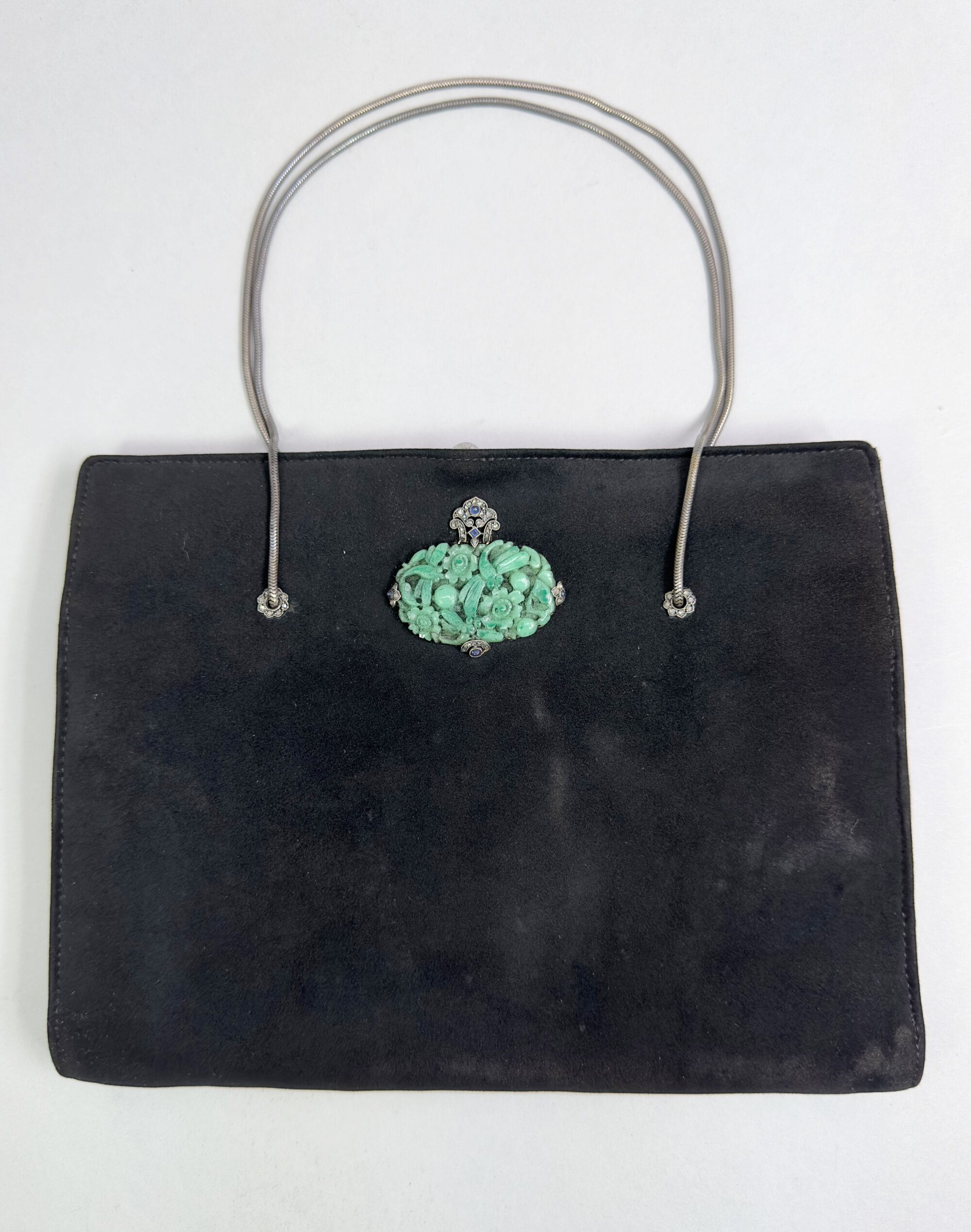
French Art Deco Clutch bag with faux jade insert
Price: £65
Art Deco Python Clutch
Price: £85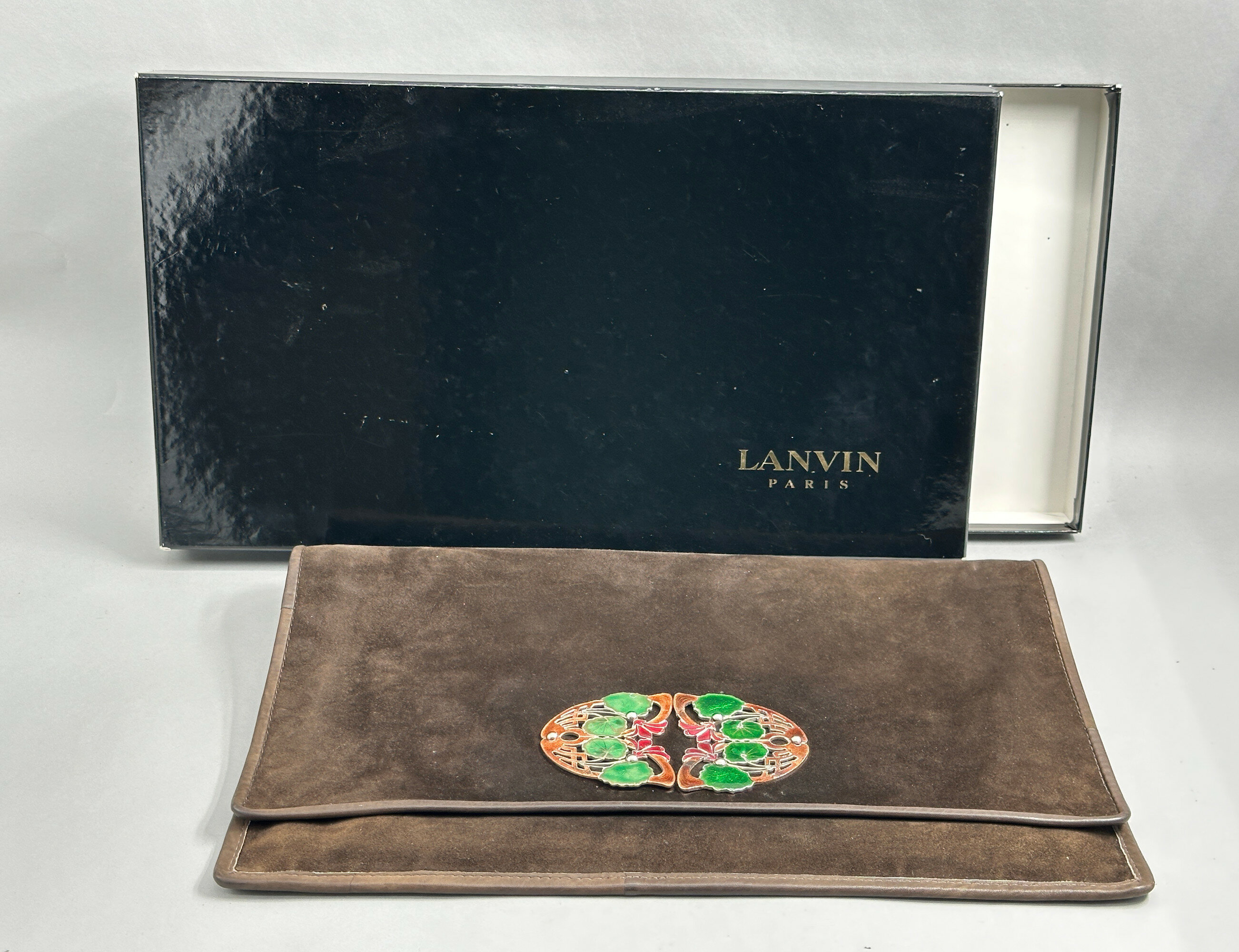
Outstanding Suede Lanvin Clutch in original box 1950s
Price: £250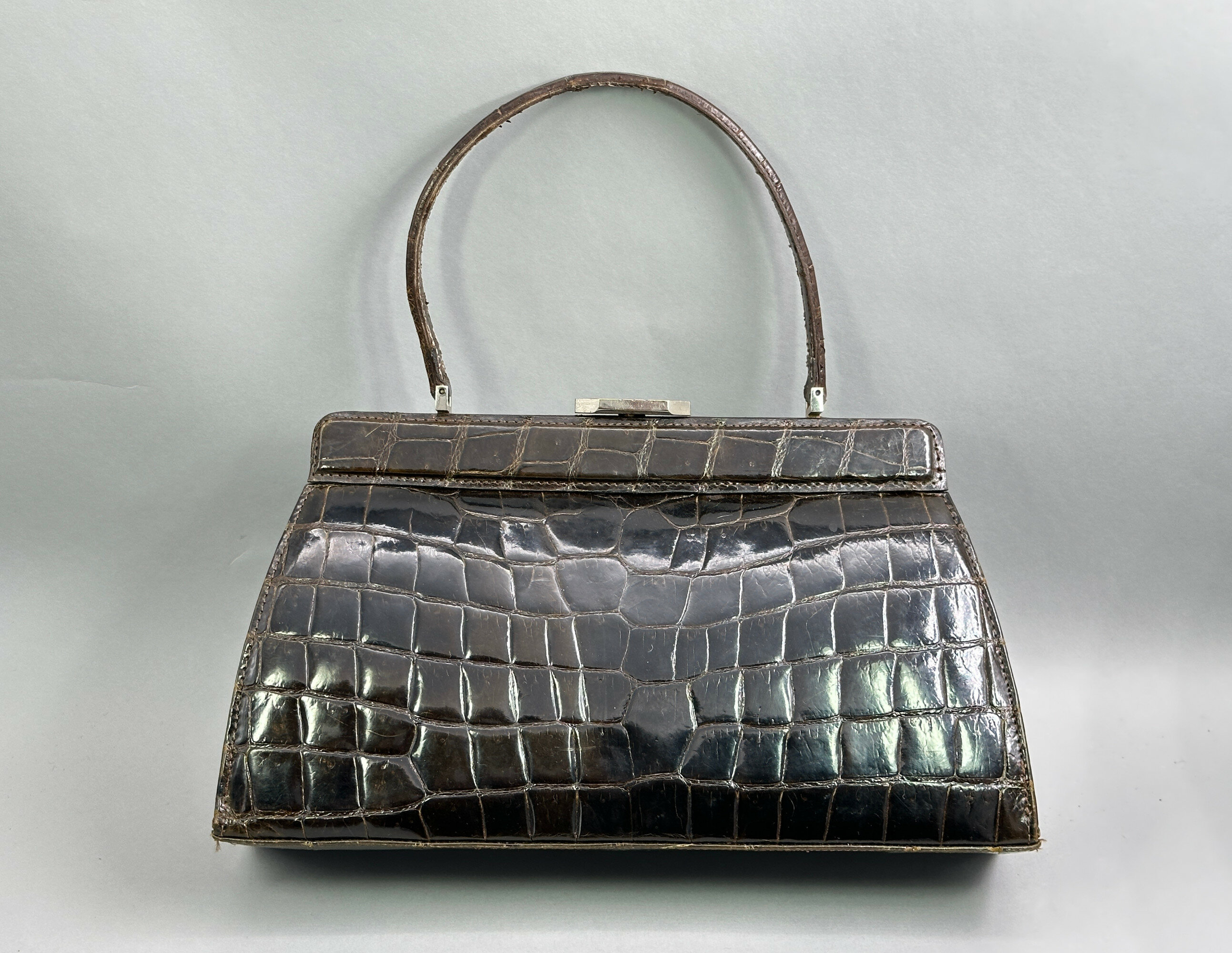
Glossy brown crocodile handbag 1960s
Price: £65
Pair of framed Watercolours, Dartmoor heather fields, signed C.A.James, early C20th
Price: £45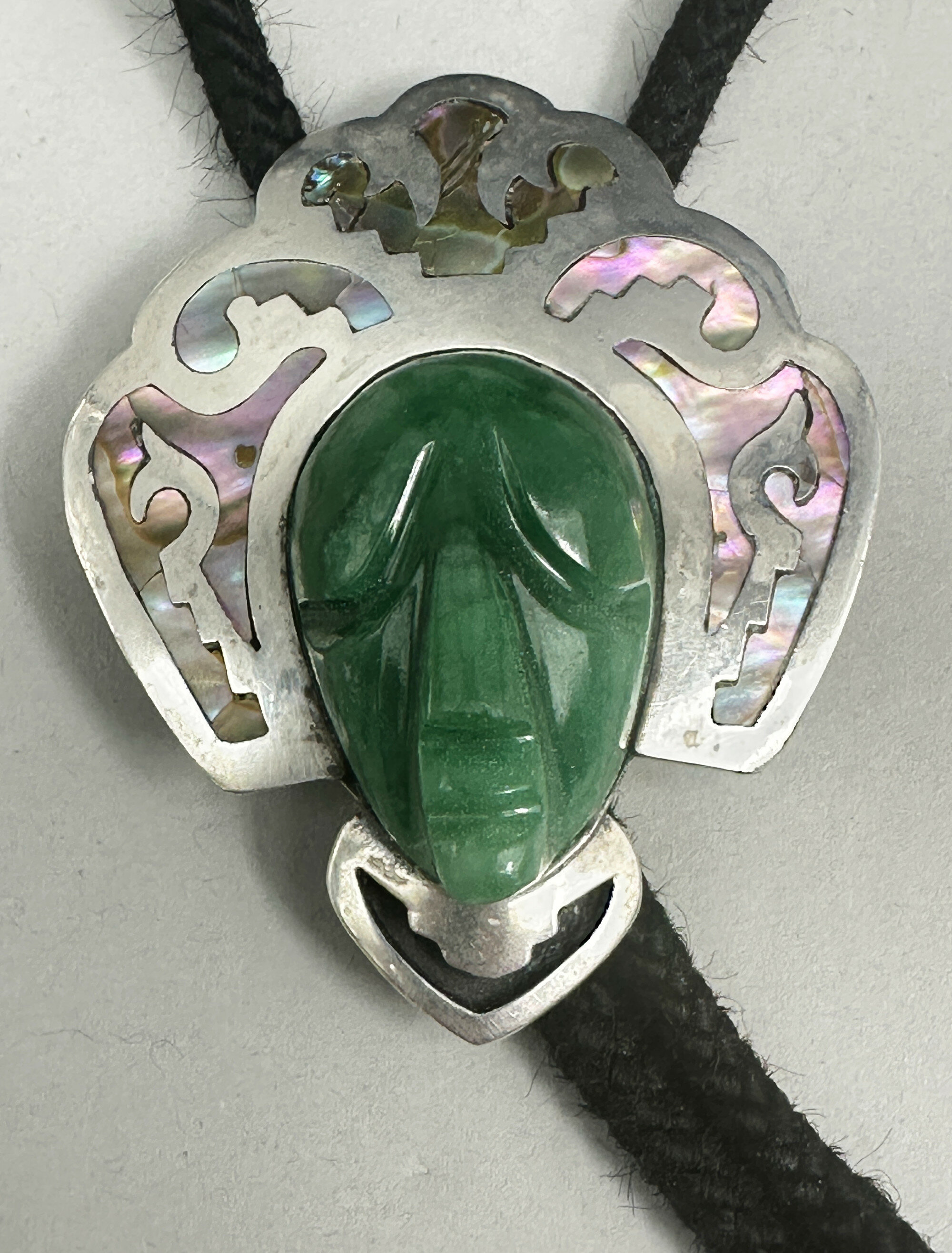
Mexican Silver Bolo Tie with Aztec mask Head, Taxco, c1950
Price: £125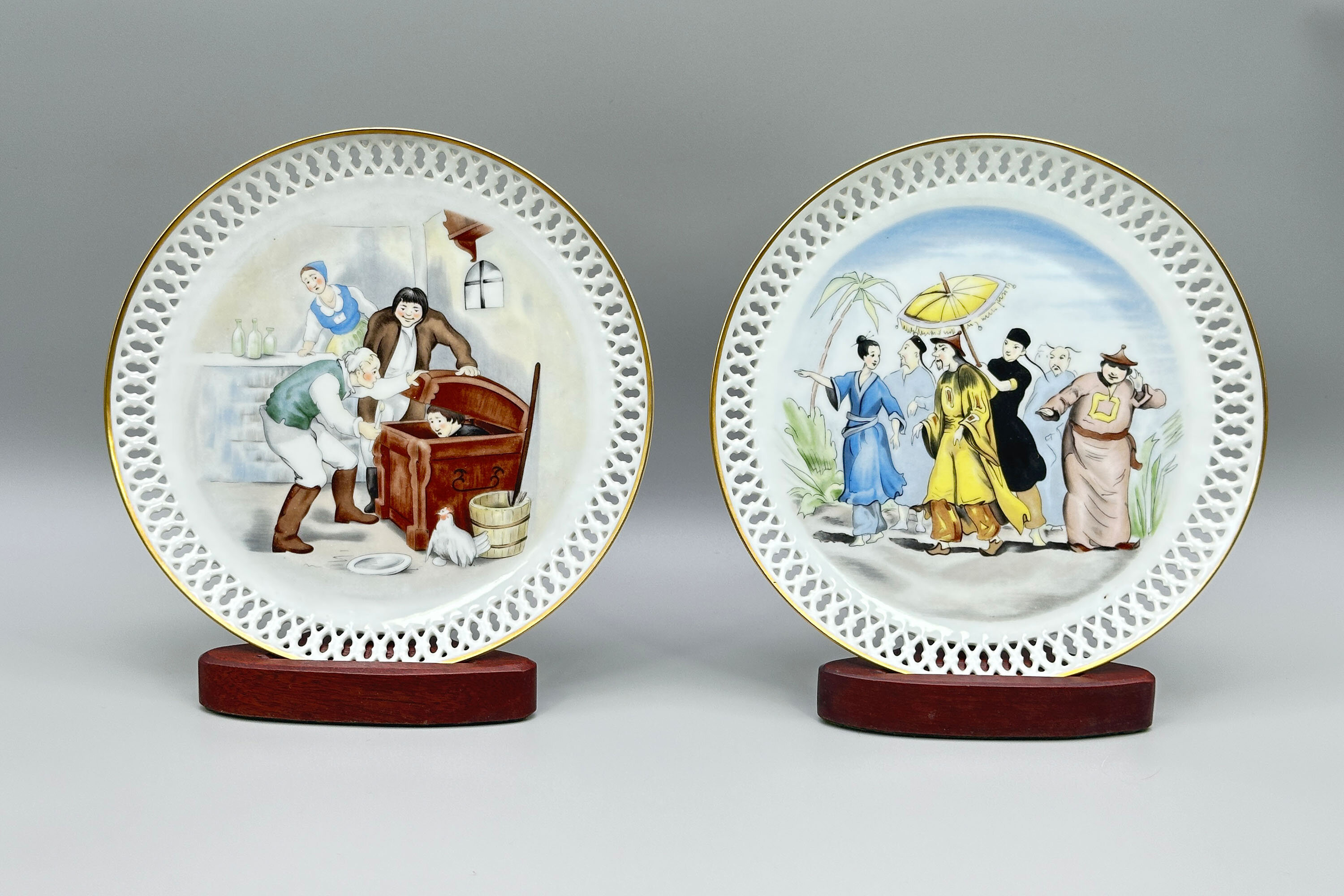
Two Bing & Grøndahl plates, scenes from Hans Christian Andersen, late C20th
Price: £45Bing & Grøndahl was established in 1853 by the sculptor Frederik Vilhelm Grøndahl and the merchant brothers Meyer Hermann Bing and Jacob Herman Bing. Their trademark, which can be seen on these two plates, was that of three towers, which was derived from the Coat of Arms of Copenhagen. Their designs proved popular and it is said that their dinnerware service in the ‘Seagull’ pattern could be found in one in ten Danish households in the 1950s. Eventually, in 1987 the company merged with its competitor, the Royal Porcelain Factory, under the name Royal Copenhagen, but some of the pieces produced thereafter still display the initials ‘B&G’ and the three tower symbol, as here. Originally sold with fitted boxes (not included here), these plates were probably produced in the early years after the merger and are sought after as collectors’ items today.
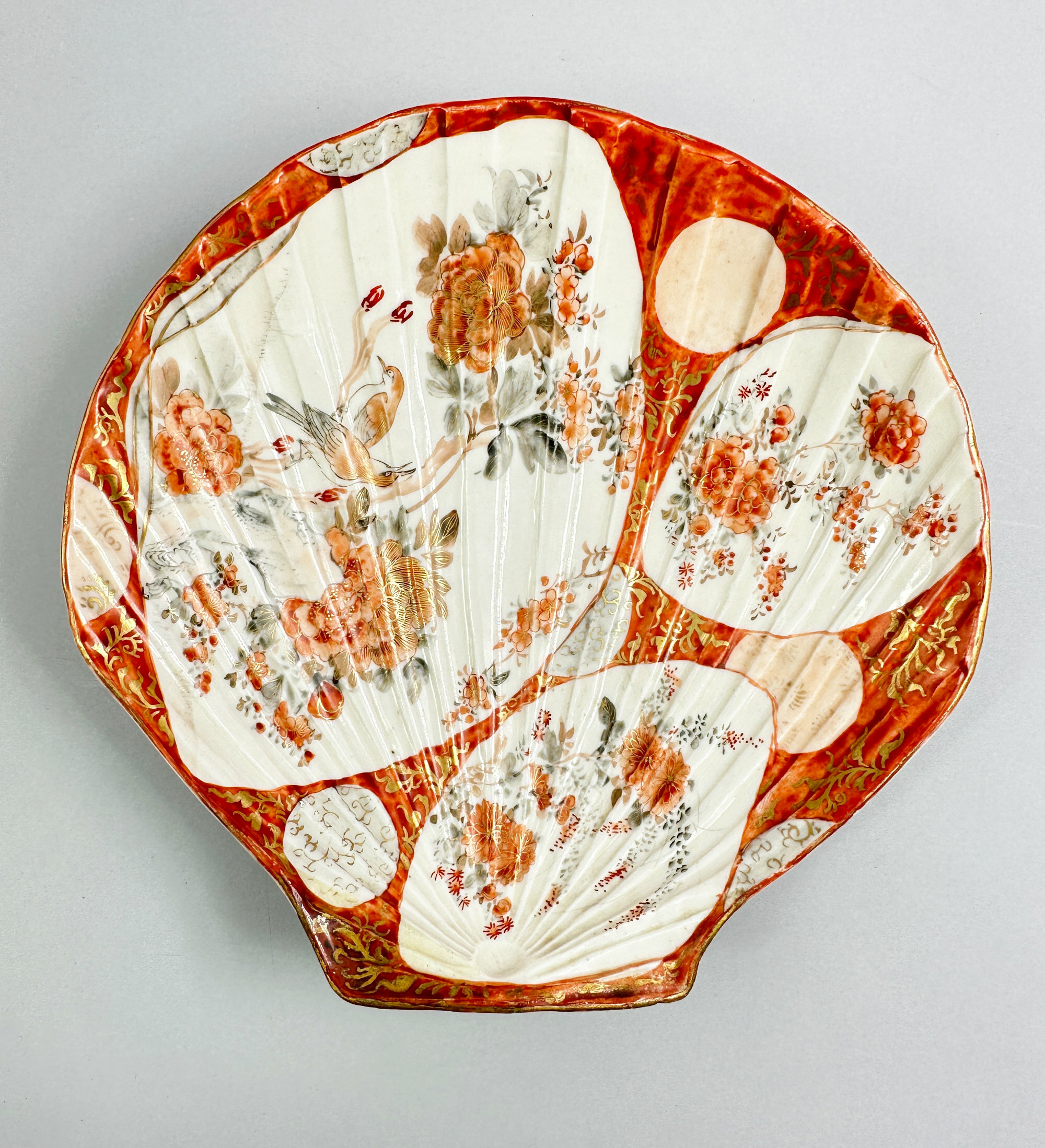
Japanese Kutani Shell Shape Dish, circa 1880
Price: £55Kutani (the word means 'nine valleys') porcelain was made at various factories in the former Kaga province of Japan. The earliest pieces were in a completely different style employing a palette of colours emphasising green, the so called 'Ko Kutani'. Production of this ceased around 1730, and manufacturing was not revived until the early nineteenth century when the more familiar colourings of iron red and gold were introduced. Many pieces were exported to the West in a variety of forms including vases and wall plates. This shell dish is more unusual; the shape is more normally found in Chinese ceramics. Perhaps one of an original pair, this dish, like its Chinese counterparts, was probably intended as a serving dish and could even be used as such today although it can well stand as a decorative item.
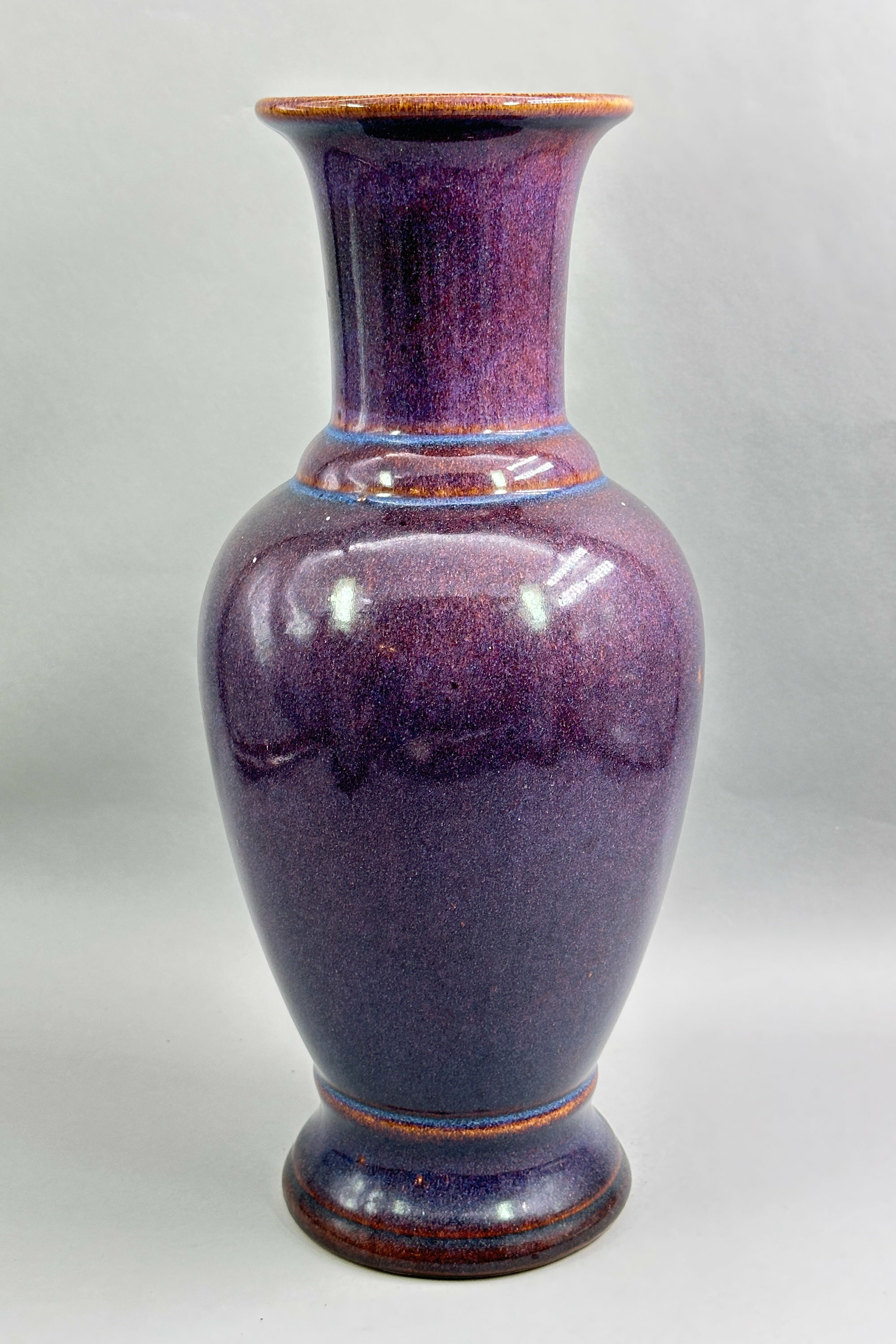
Oriental Style Vase, West German Pottery, possibly Scheurich, late C20th
Price: £45
West German Bay Keramik Pitcher with stylised floral designs, late C20th
Price: £55Founded by Eduard Bay in the 1930s and based in Ransbach Baumbach in the heart of the main West German pottery producing region, Bay Keramik grew to be one of the most prolific producers of ceramics in the ‘West German’ style and continued production into the 1990s. This piece retains its original paper label and the format of this allows dating to the 1970s/1980s. The jug has almost a slightly rustic feel and recalls much earlier German ceramic items. The numbers on the base indicate the form number but it has not been possible to identify this.
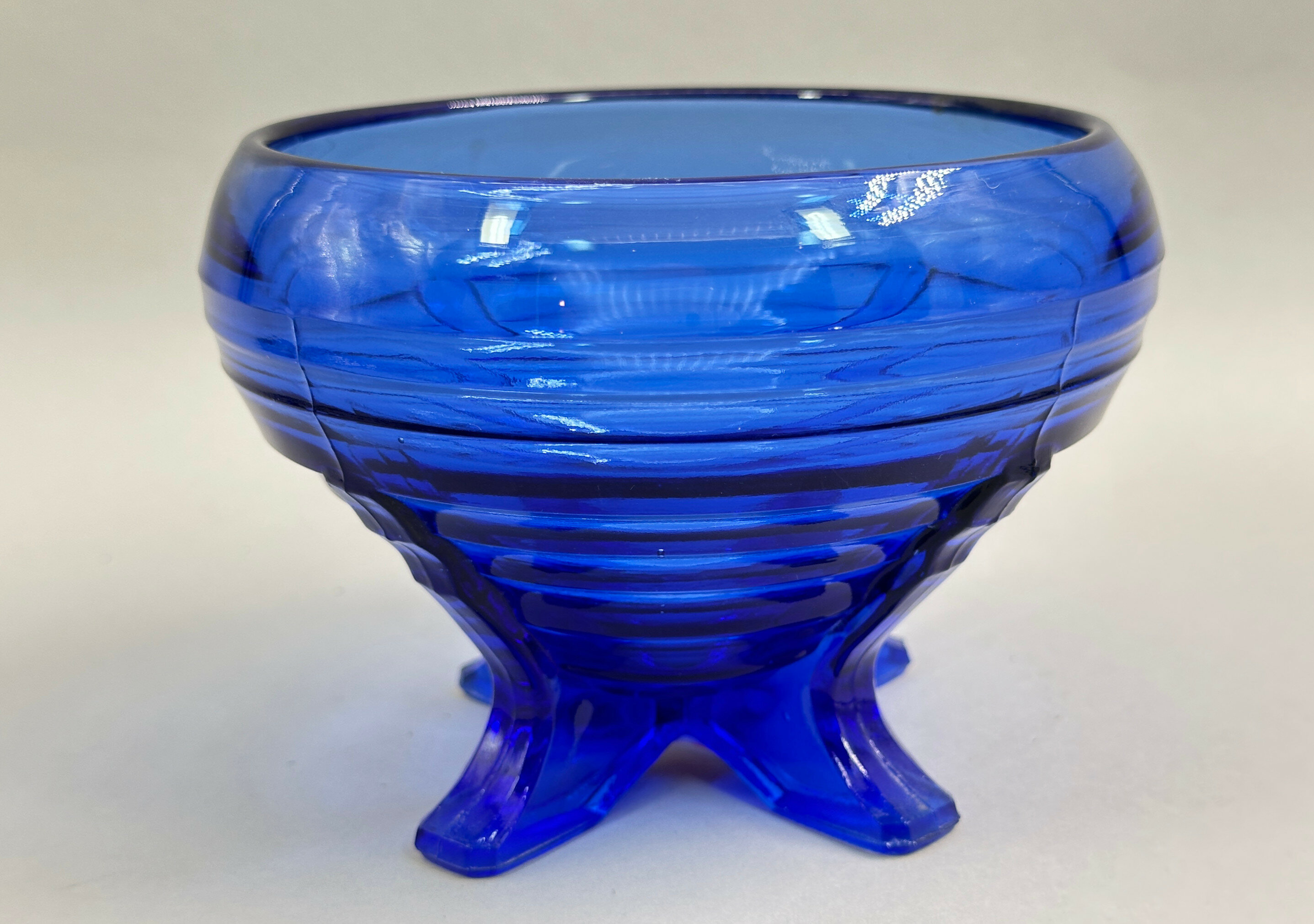
Sowerby Blue Glass Footed Bowl, 1930s/1940s
Price: £25The Sowerby family came from the North West of England near Carlisle and settled in Gateshead in the late eighteenth century. The firm Sowerby Glassworks is known from 1807 onwards and continued production until 1972, concentrating on pressed glass. Catalogues of their wares still exist and they produced pieces in a wide variety of styles and shapes which retain their popularity today.
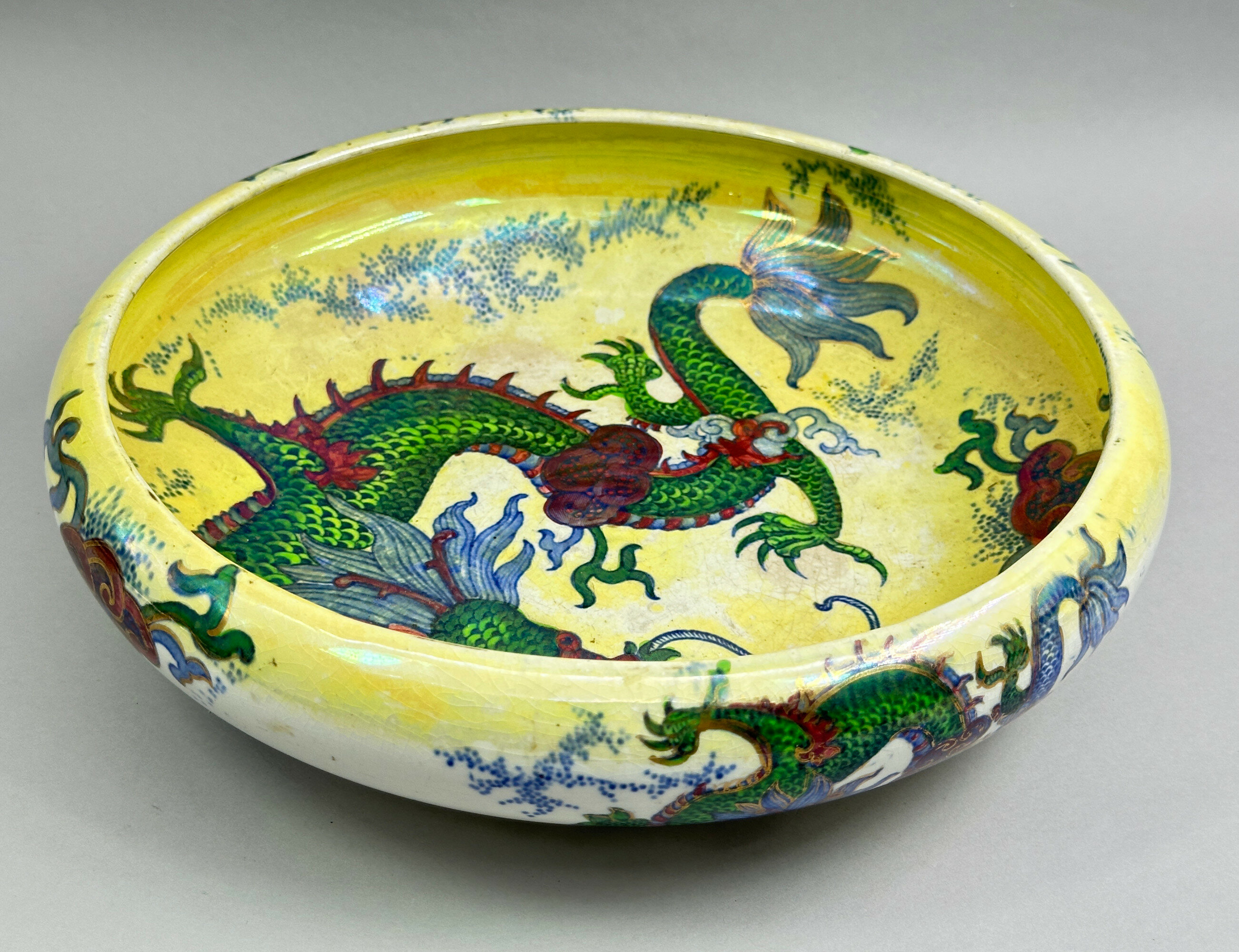
Yellow ground Bursley Ware Dragon Bowl by Frederick Rhead, circa 1920
Price: £55
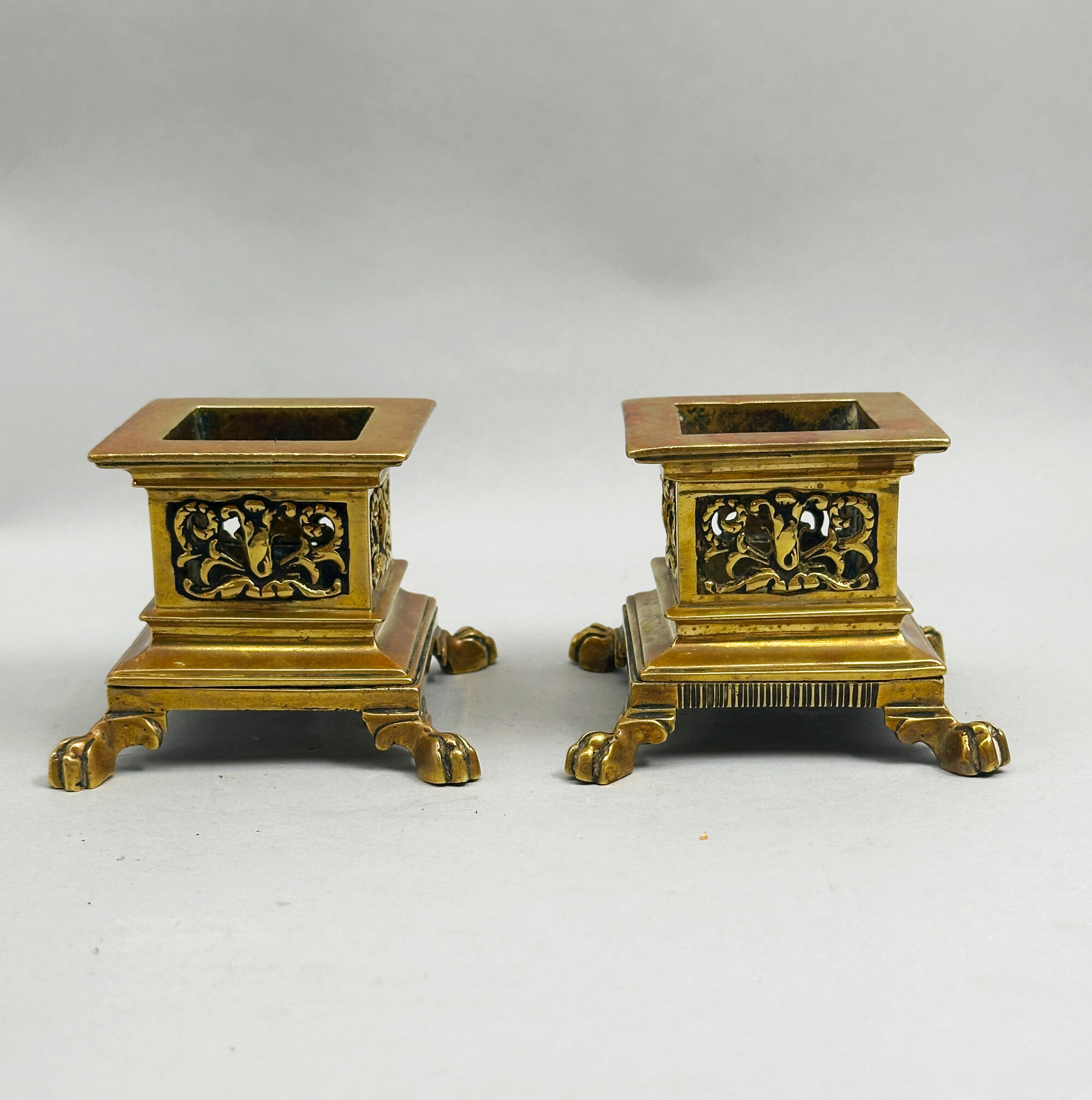
Pair of Georgian Style Square Gilt Bronze Table Salts, English C19th
Price: £45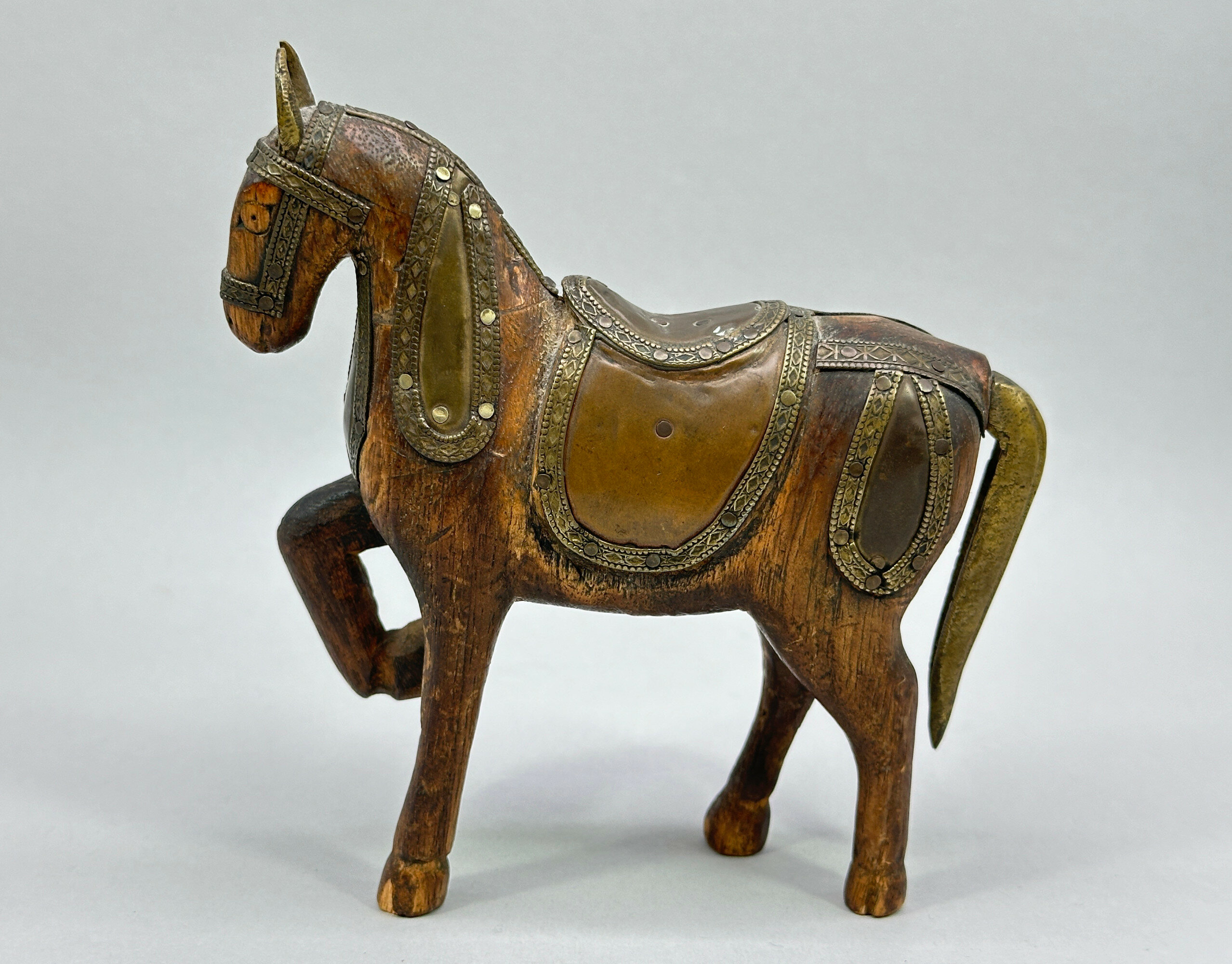
Indian wooden toy model of a Horse with metal fitments, early C20th
Price: £25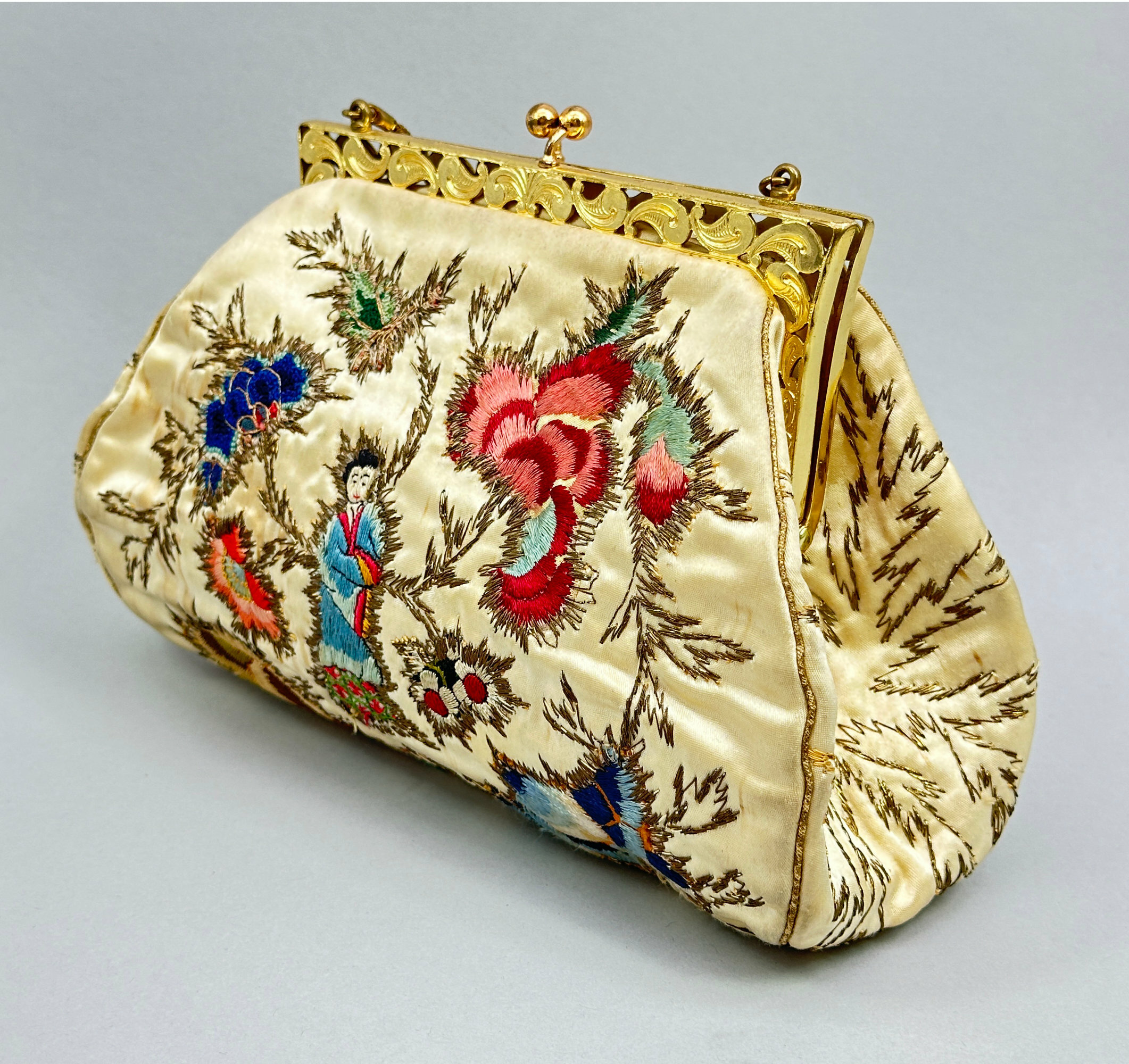
English silk handbag with embroidered Chinoiserie design c1950
Price: £95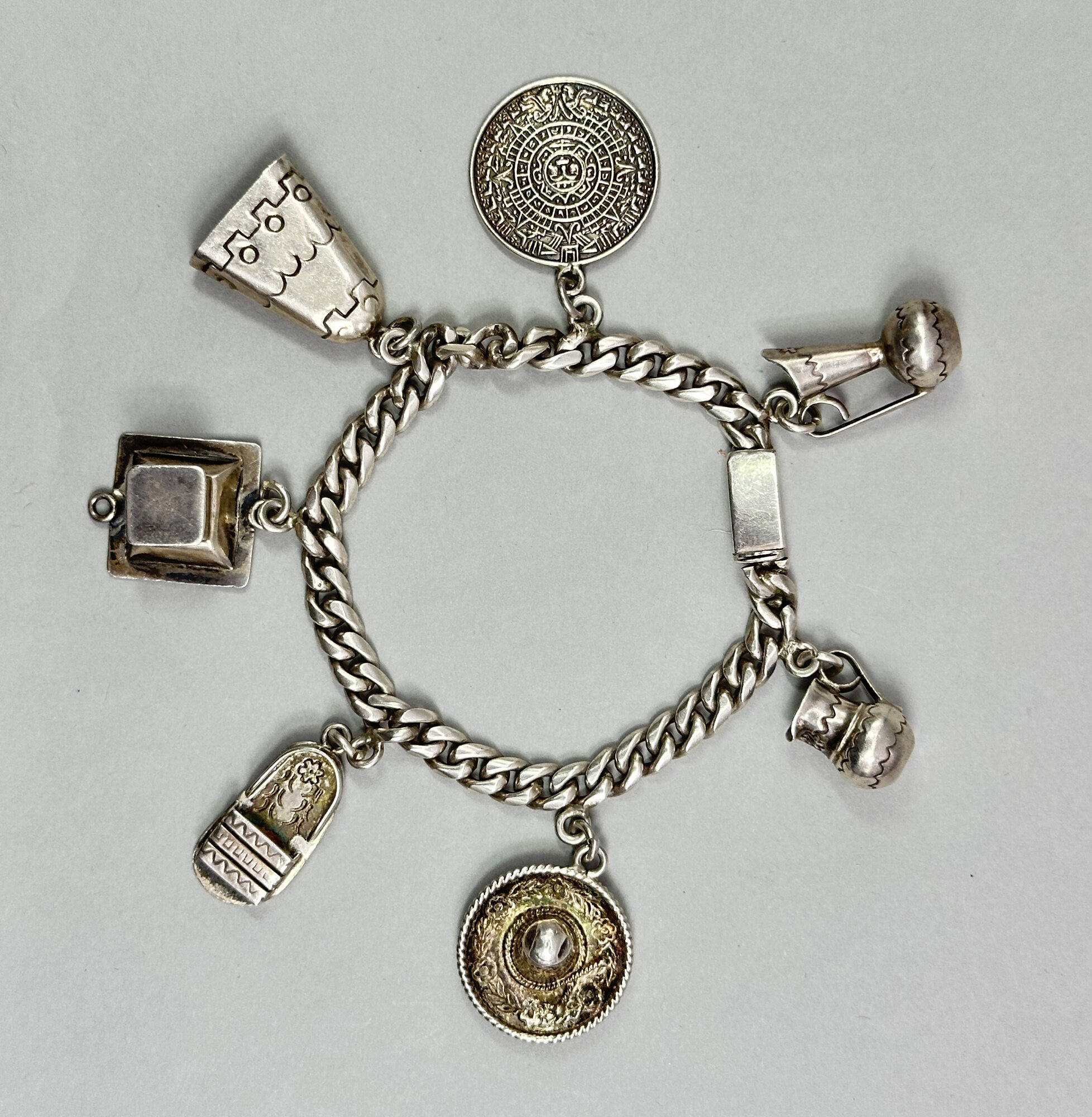
Taxco charm bracelet, makers mark Castelan, 1950s
Price: £85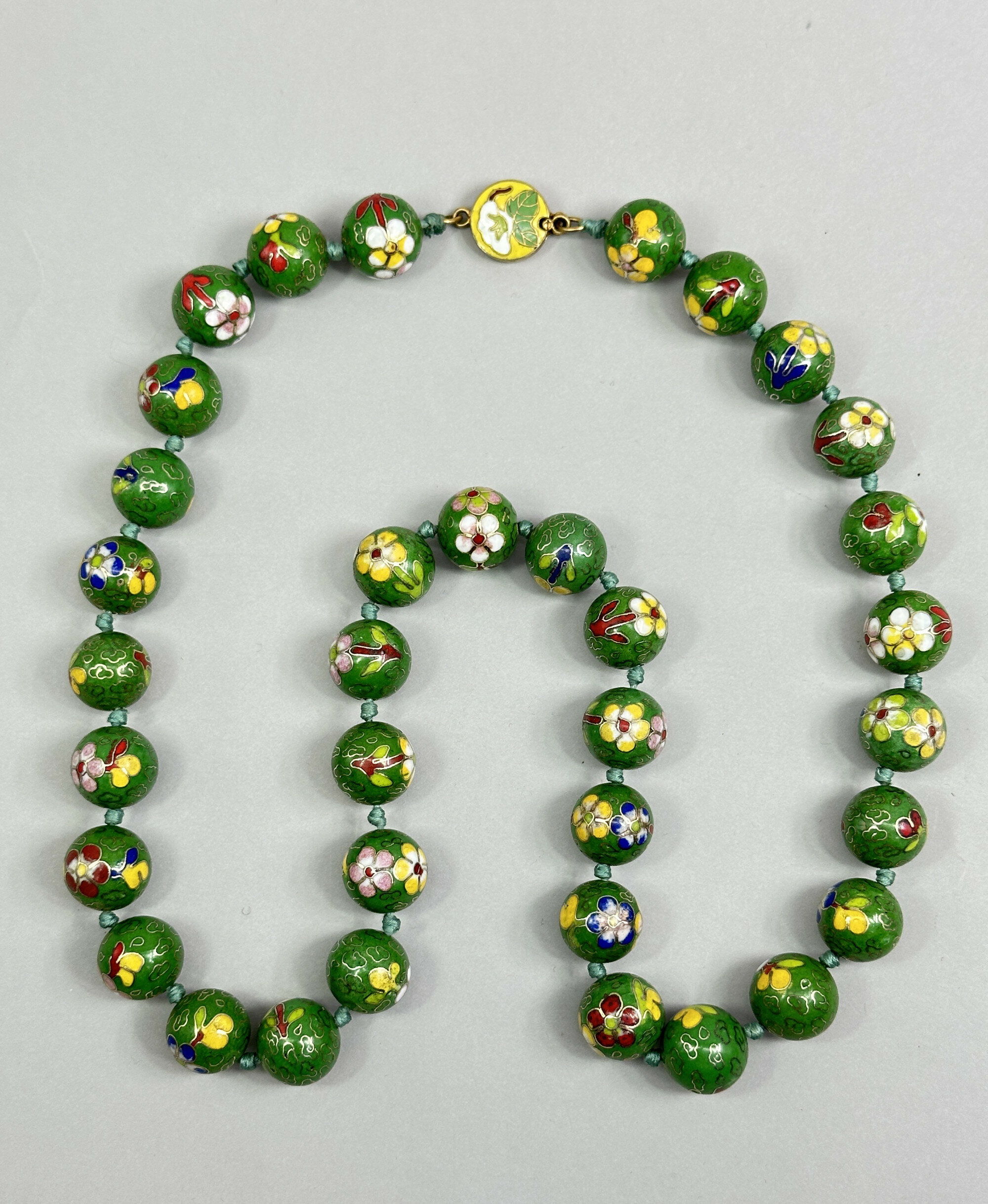
Long strand of Chinese cloisonne beads c1950
Price: £45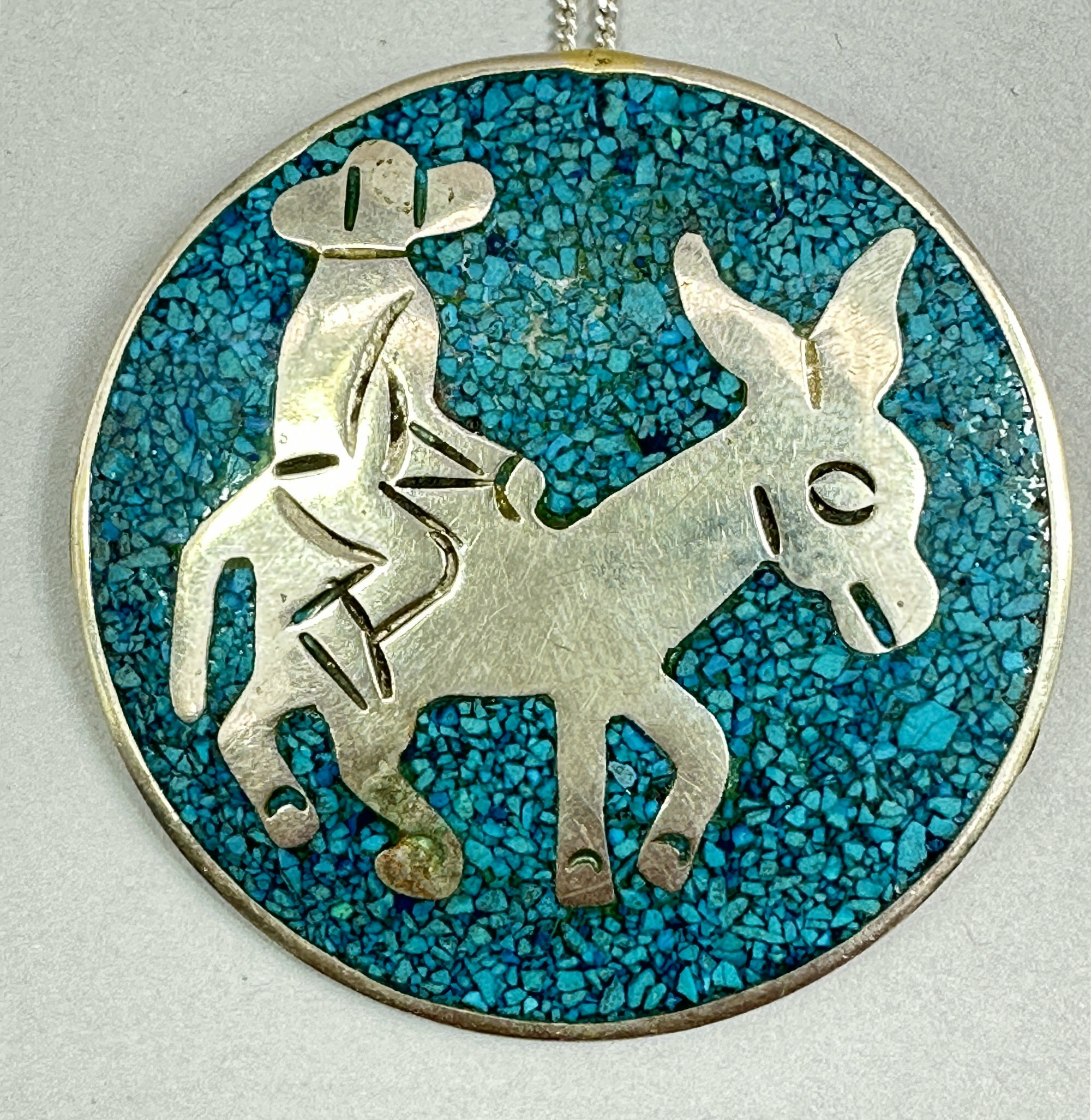
Round pendant set with turquoise, Mexico, c1970, the chain later.
Price: £65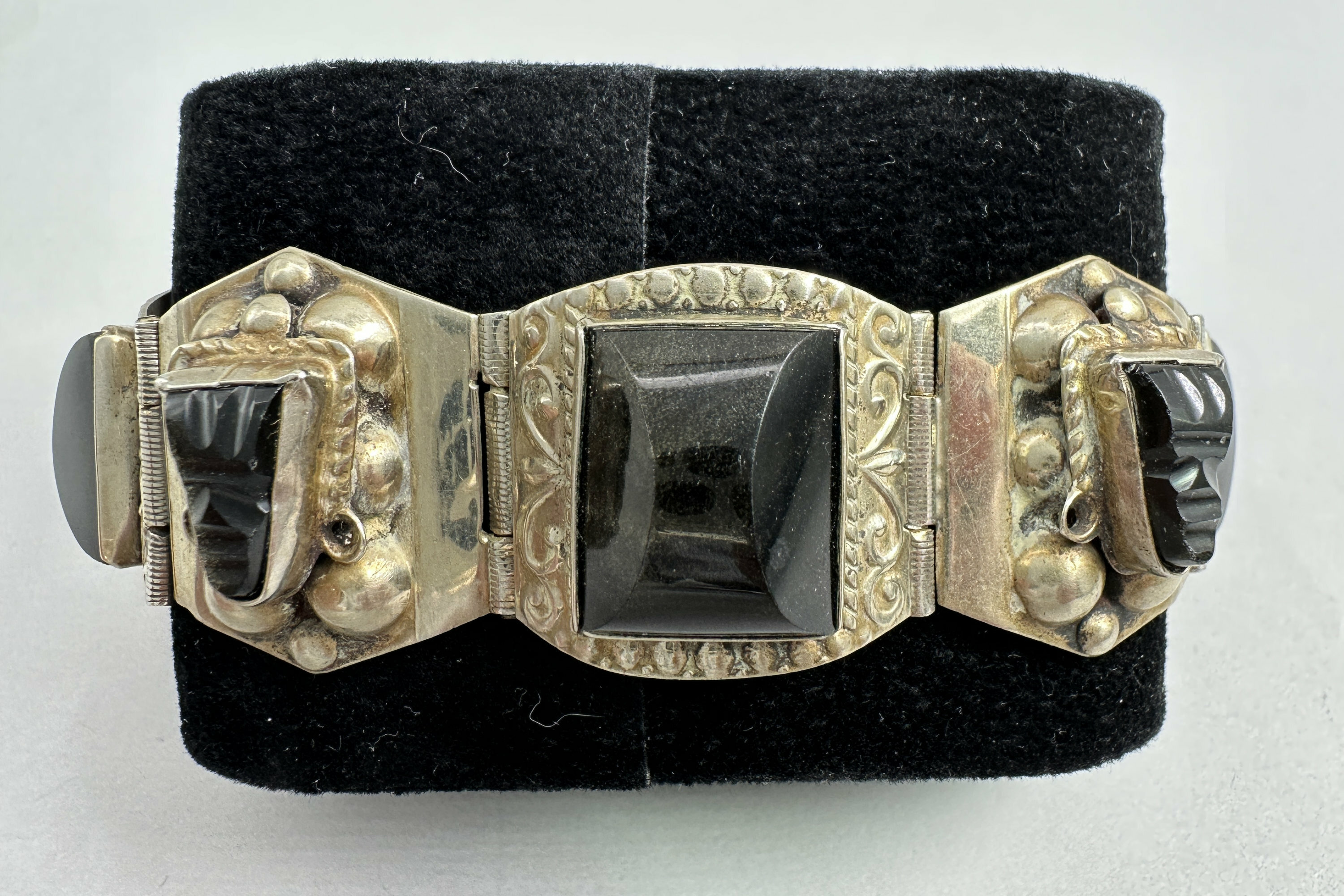
Taxco bracelet set with carved obsidian stones c1950
Price: £55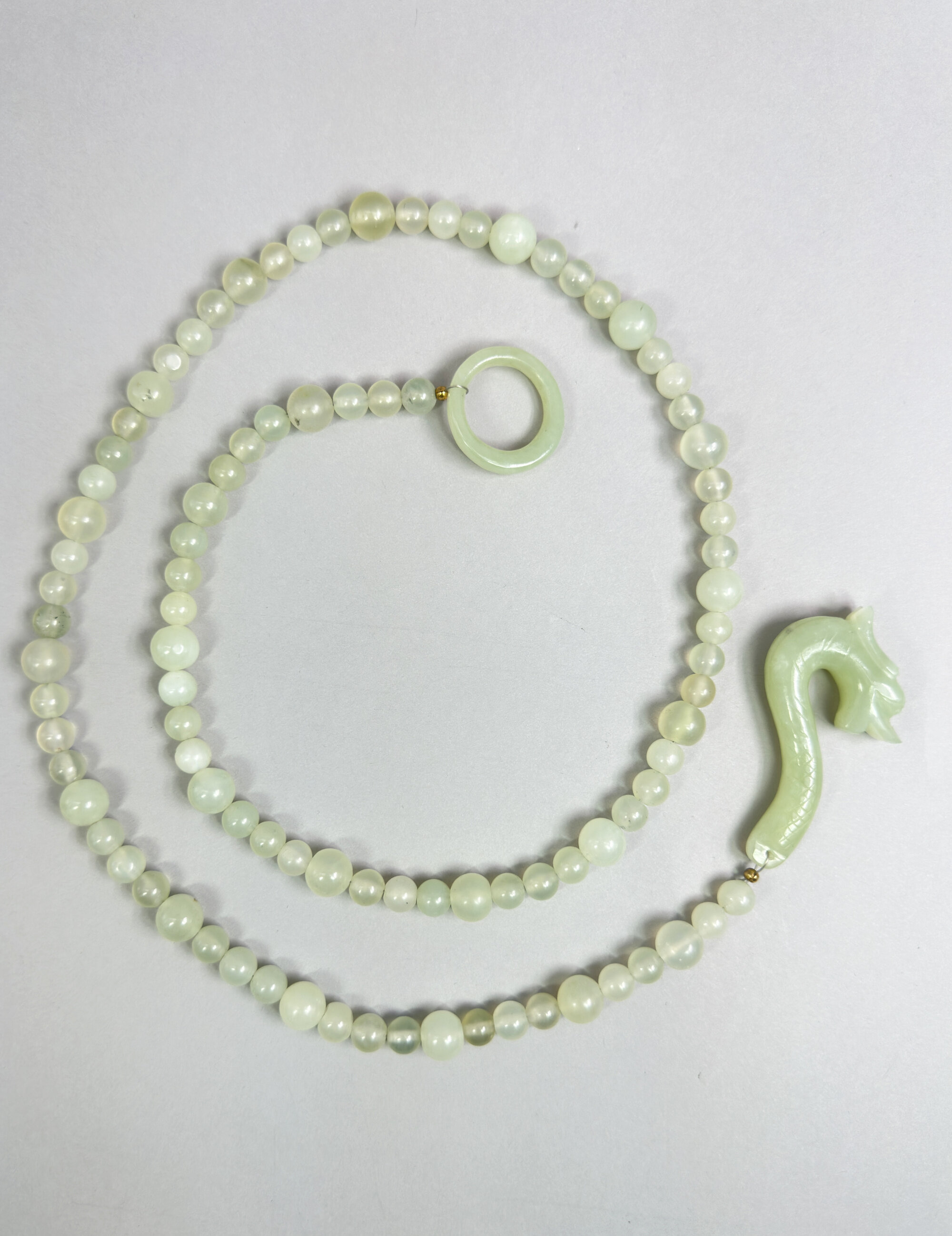
Fun vintage jade necklace with hook and ring closure c1980
Price: £25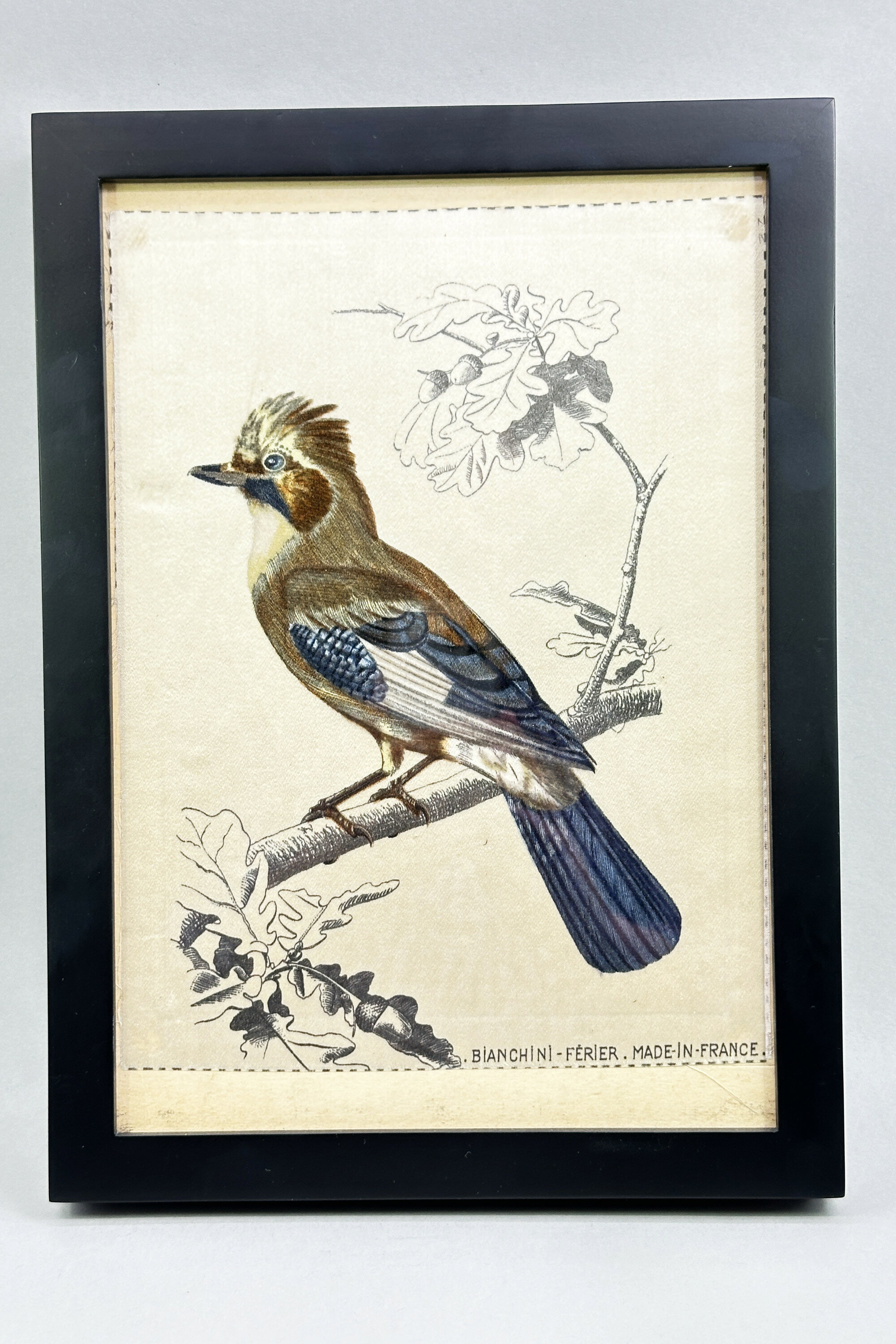
Silk Print of a Bird, Bianchini-Ferier, France, early C20th
Price: £25Bianchini Ferier was a silk weaving manufacturer based in Lyons. Founded in 1888 by Francois Atuyer, Charles Bianchini and Francois Ferier, it first produced fine silk damasks mainly for the clothing industry. After gaining a silver medal at the Paris Exposition Universelle of 1889 it went on to enjoy great success and many well known artists created designs for it in the early C20th, most notably Raoul Dufy. Production continued until the early 1990s when the firm was acquired by Tissages Bauman.
This print resembles designs in the firm’s archives from the late C19th and was probably created in the early C20th. It was designed for framing and the dotted line definition of the composition can be seen at the edges. Presented now in a modern surround it provides an excellent example of the firm’s work and a reflection of the Art Nouveau style so popular when it was produced.
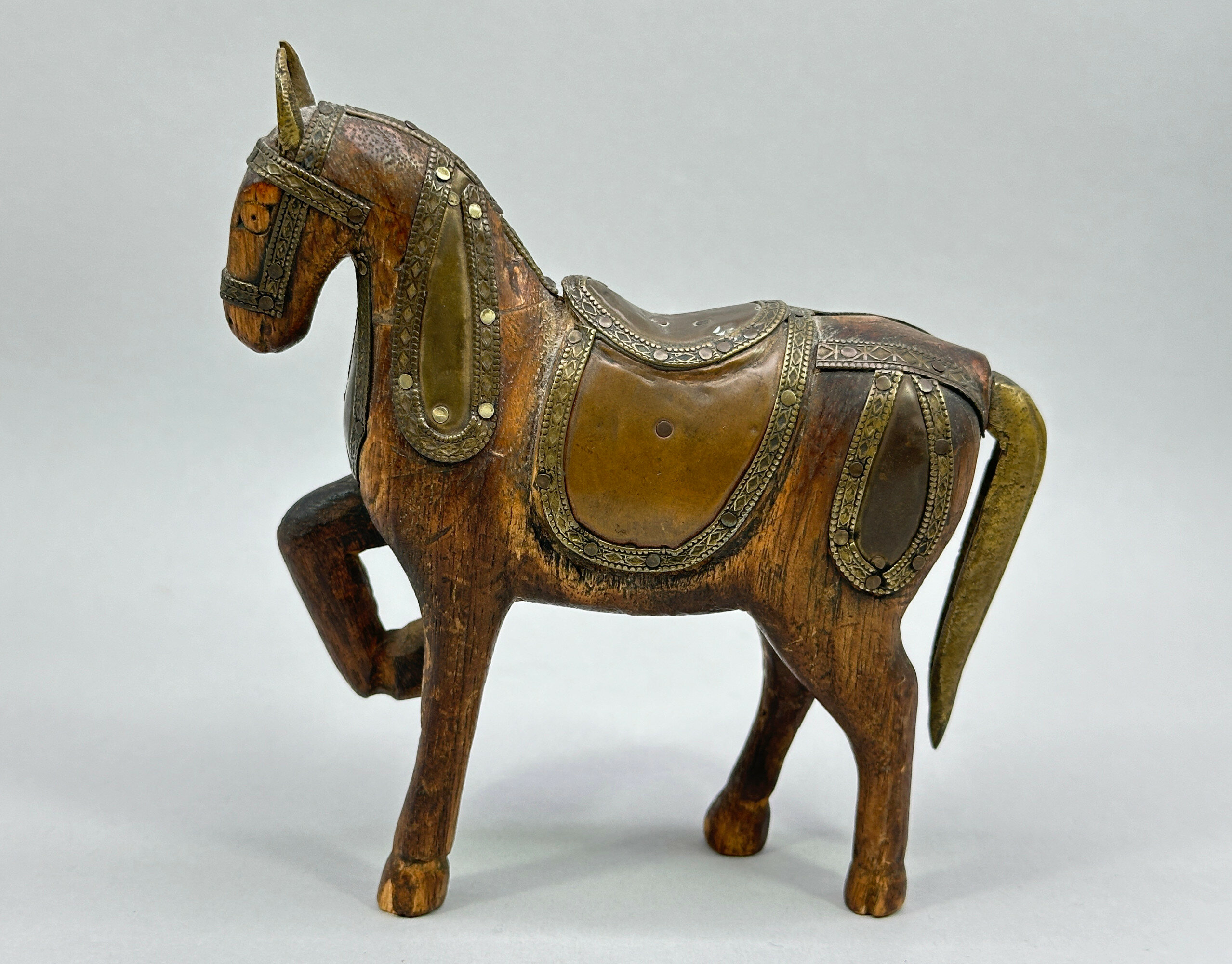
Indian wooden toy model of a Horse with metal fitments, early C20th
Price: £25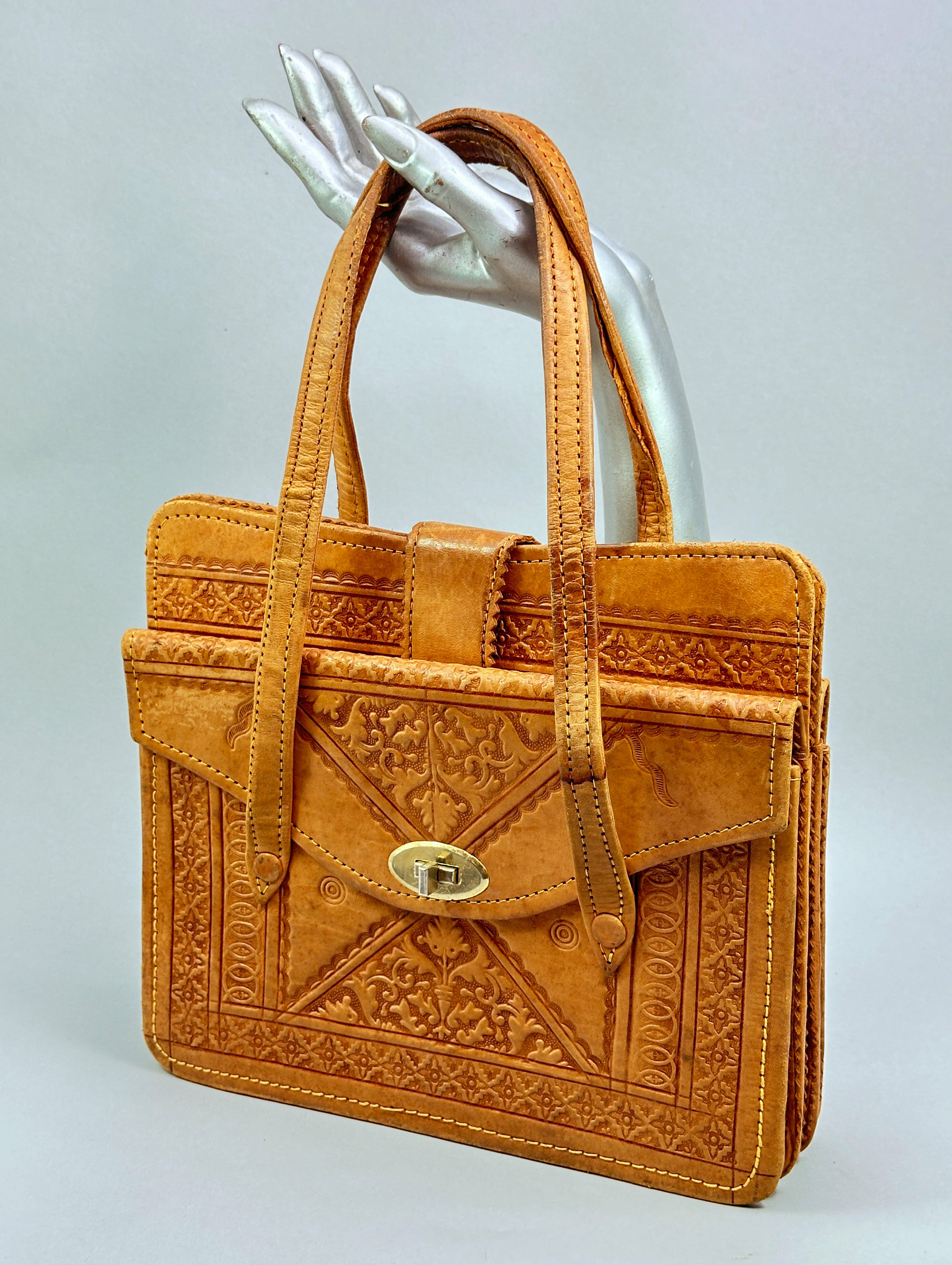
Moroccan tooled leather bag c1960
Price: £65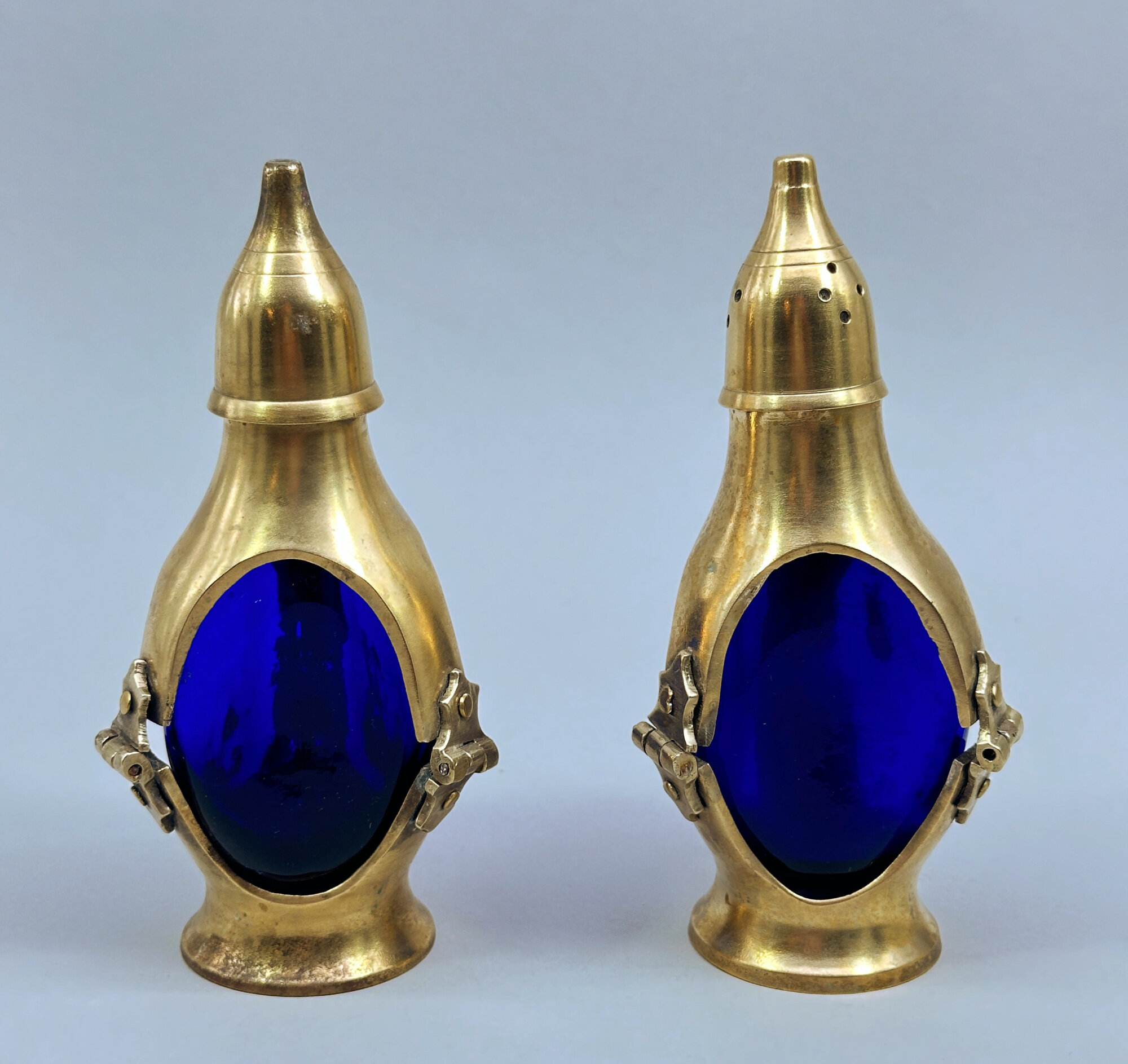
Arts and Crafts Brass and Cobalt Glass Salt and Pepper, early C20th
Price: £55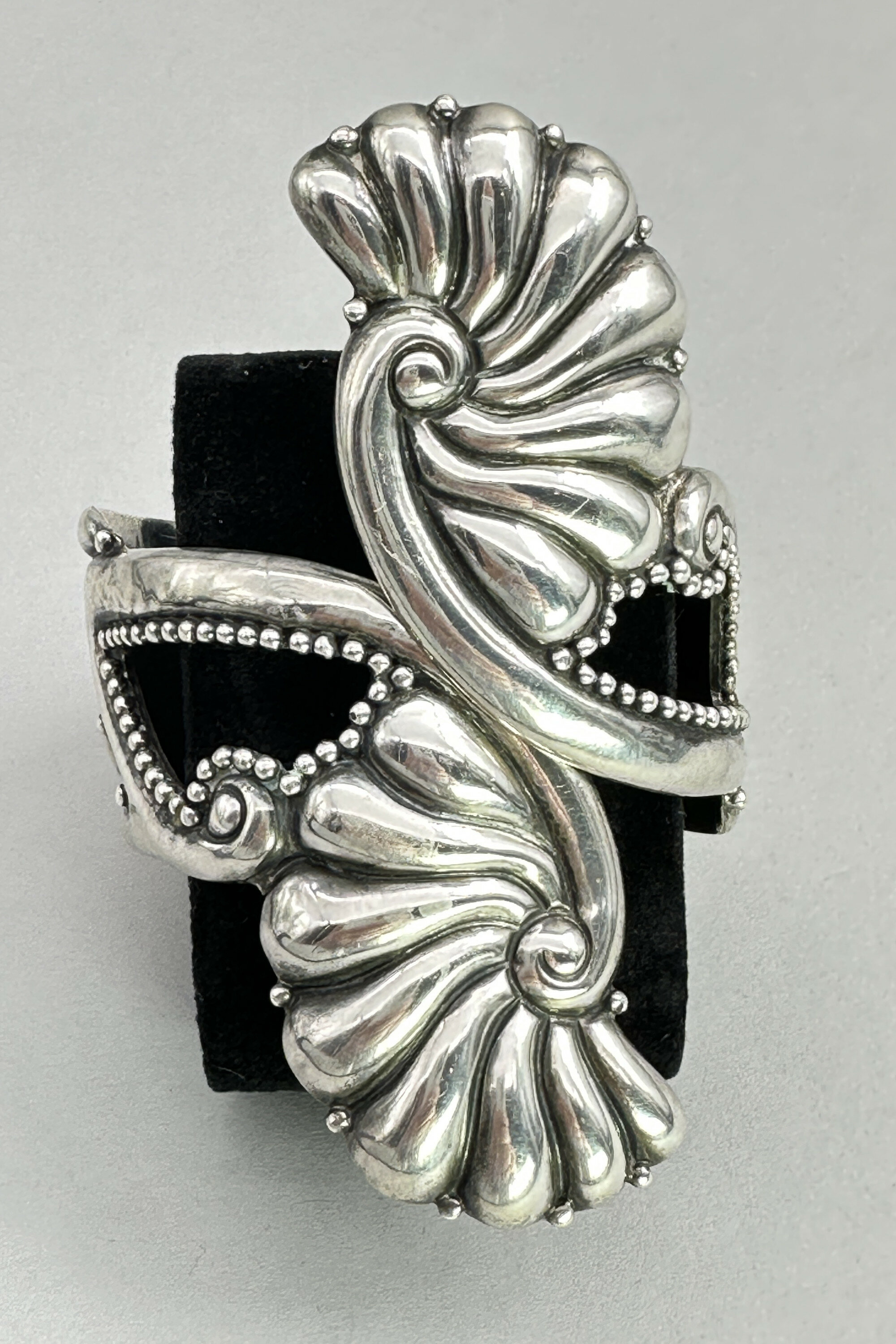
Taxco clamper bracelet, attr. to Justo or Jorge Castillo, 1940s
Price: £450Justo and Jorge Castillo come from the Los Castillo workshop. Los Castillo was an influential and ongoing design and manufacturing enterprise established in 1939 by Antonio Castillo and his brothers Justo and Jorge and their cousin Salvador Teran. Los Castillo is known for sterling jewellery and fine pieces in "married metals" combining various metals such as silver, copper and brass. Castillo who arrived in Taxco in 1923, began his long career working for William Spratling at Taller de las Delicias. He married Margot van Voorhies prior to opening Taller Los Castillo bu they were later divorced in 1946. (see The Little Book of Mexican Silver Trade and Hallmarks, 2013)
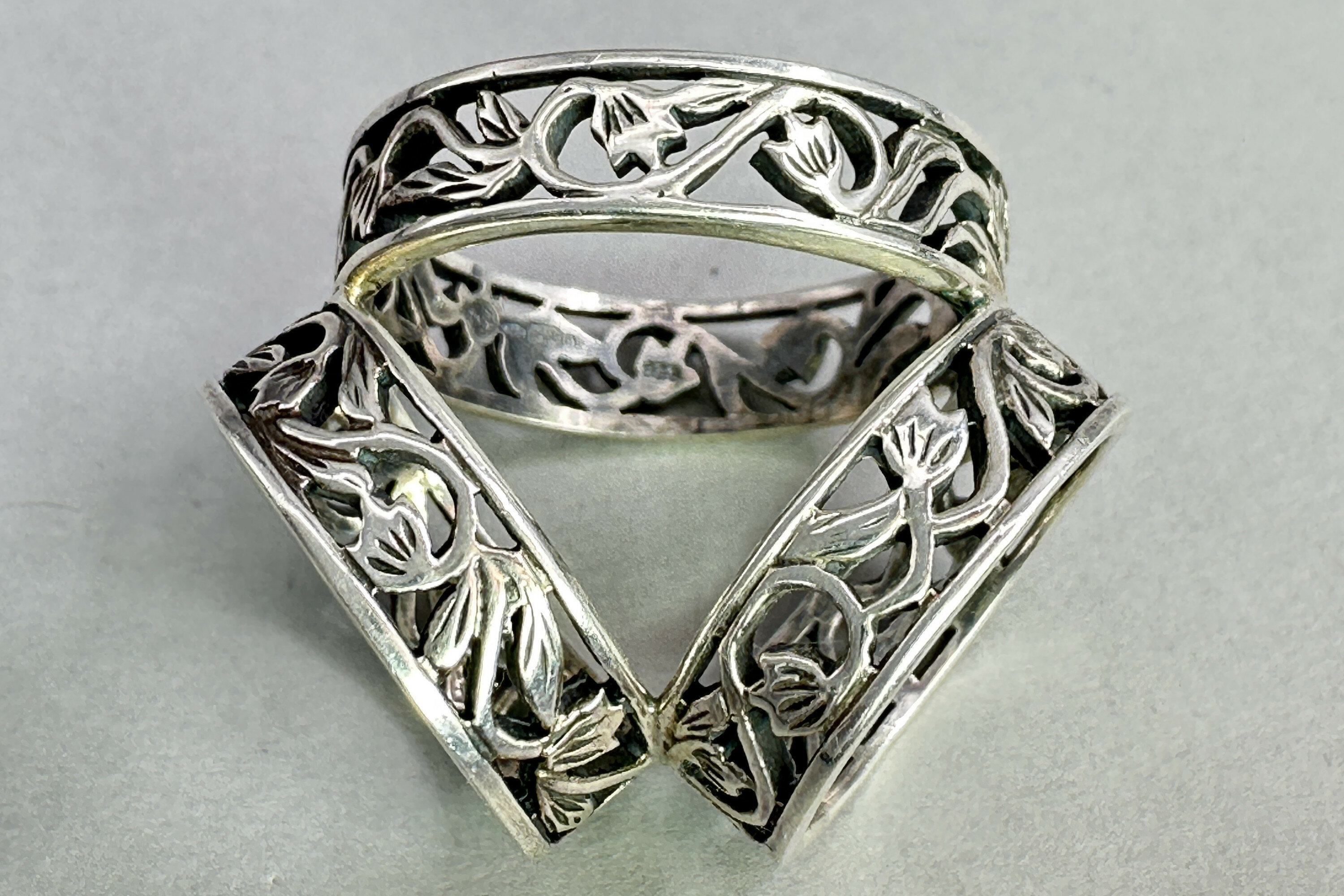
Rennie Mackintosh silver scarf ring with scarf included, c1990
Price: £45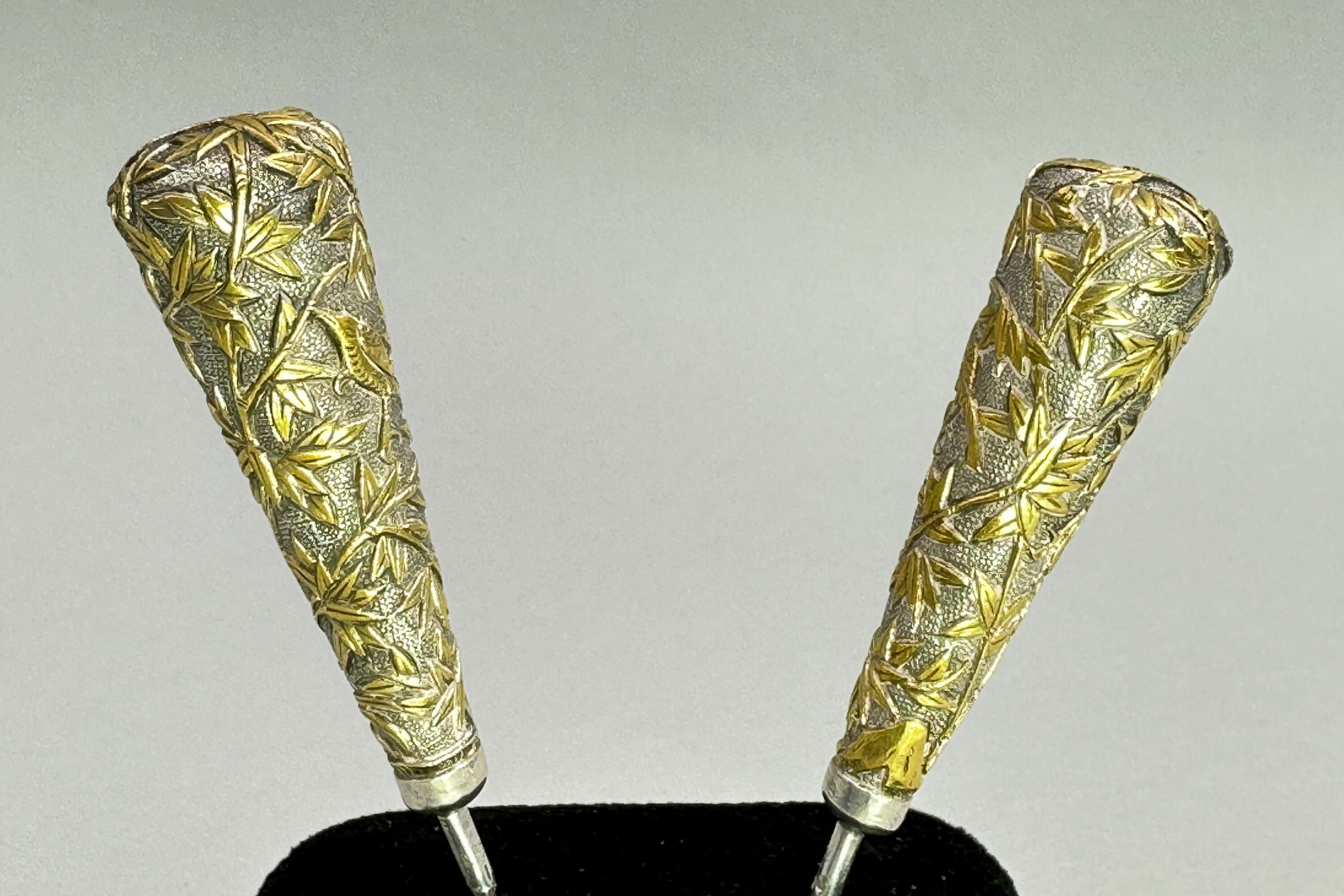
An Unusual Pair of Bradawl Form Sewing Tools, probably Persian C20th
Price: £45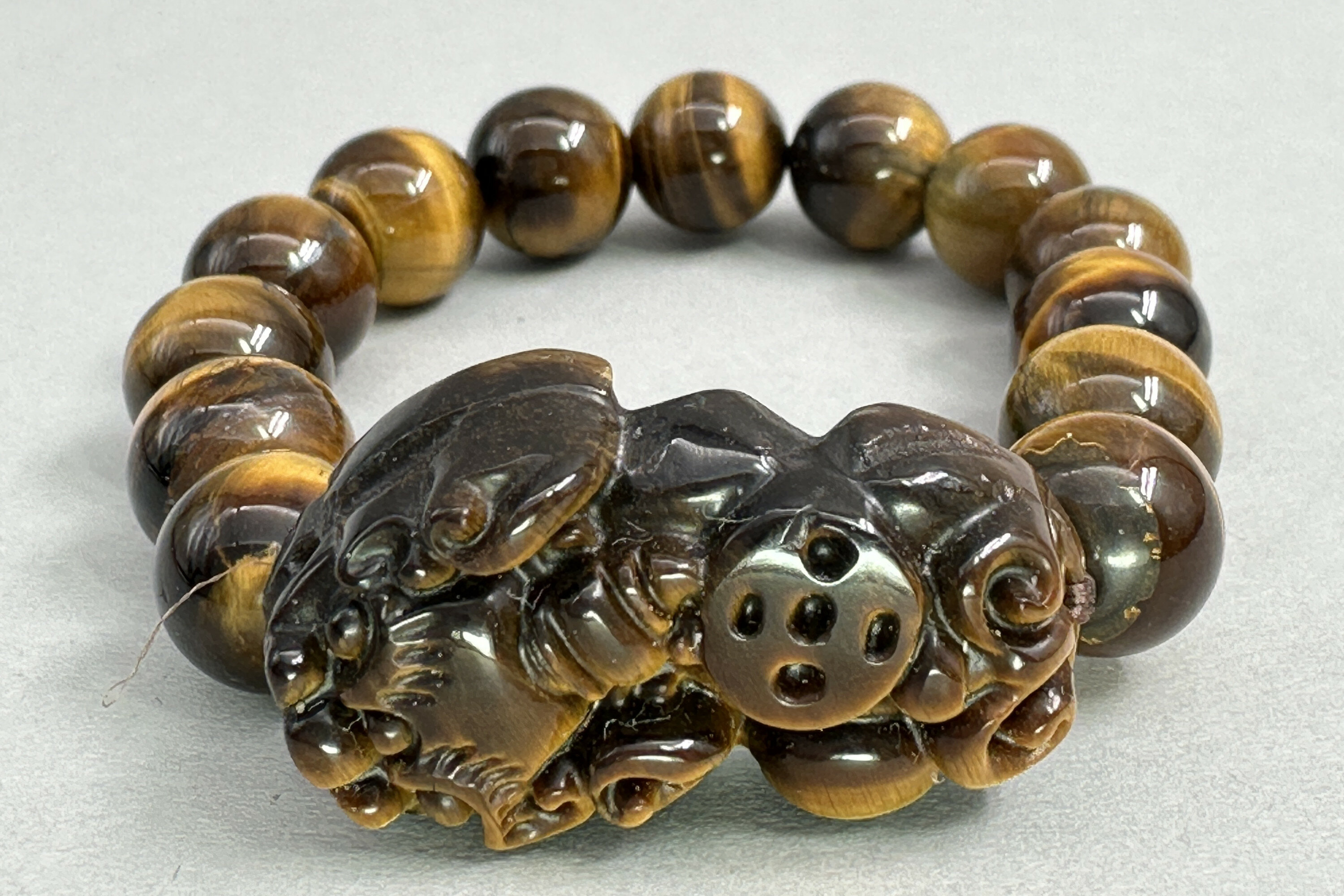
Tigers Eye bracelet with a large central carved dragon bead, certificate for 2012
Price: £15PLEASE NOTE THAT THERE IS FREE UK SHIPPING ON THIS ITEM. For international buyers the shipping cost will be reduced by the UK shipping cost, so don't worry if you are outside the UK, you still receive this benefit!
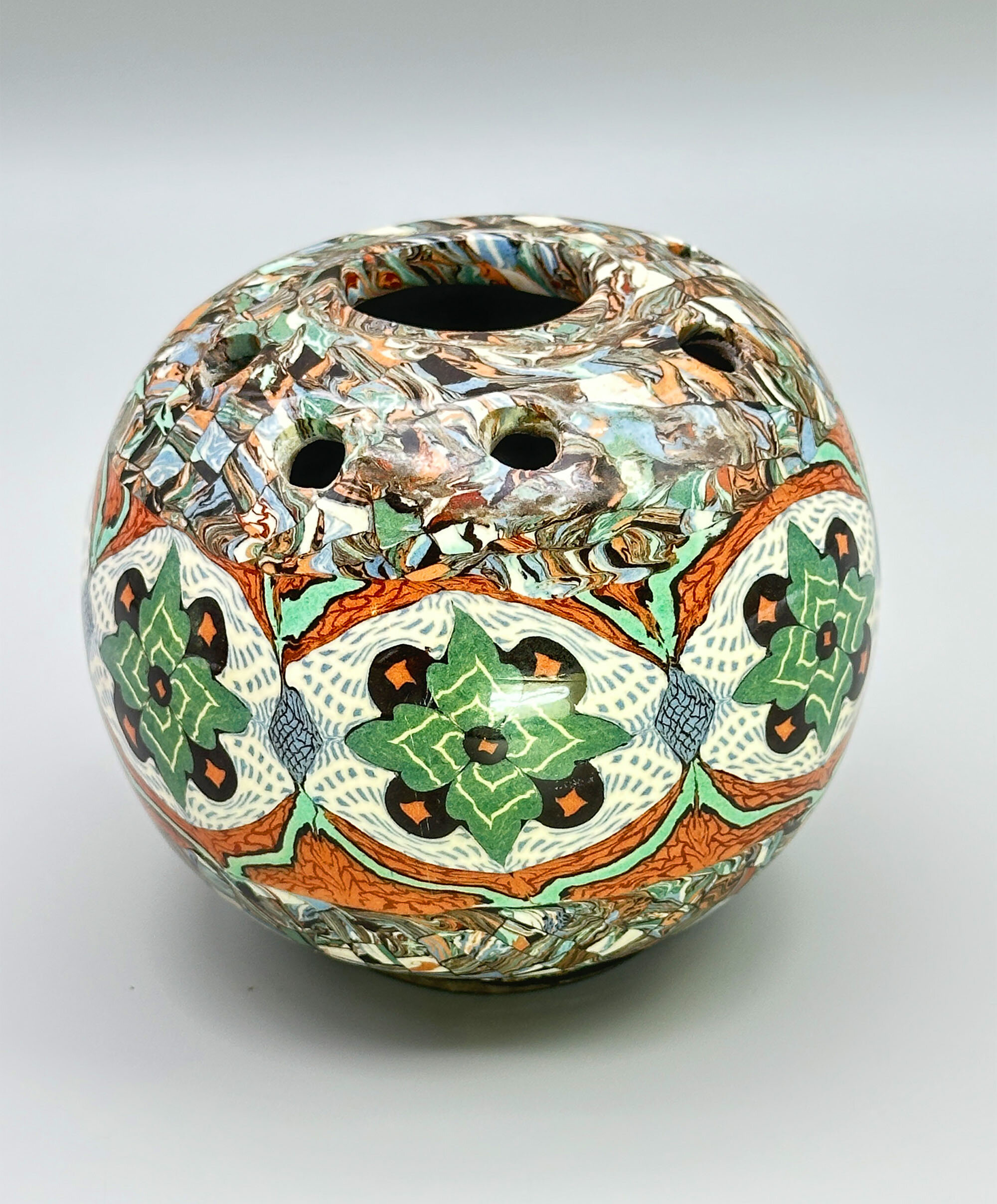
Vallauris Mosaic Pattern Vase, Jean Gerbino, signed, mid C20th
Price: £65Known for its ceramics since Roman times, when the deposits of clay found locally acted as stimulus for the production of pottery, the French Riviera town of Vallauris has been called the ‘city of 100 potters’. Pottery has been made there continuously since the classical period with a growth in production in the late nineteenth century followed by the establishment of various well known ateliers in the twentieth and the residence of Picasso himself who is said to have produced over 3500 pieces there.
Jean Gerbino Jean Gerbino (1876-1966) was a Sicilian ceramicist, who took French citizenship in 1928. He settled eventually in Vallauris and developed a unique technique combining mosaic and nériage (a mixture of coloured clays). The clays are coloured with oxides, hardened, and then assembled into plates to create colourful and distinctive mosaic patterns. These plates are then moulded, dried, and fired. The resulting forms are both distinctive and highly decorative, modern with a hint of the Art Deco era.

Art Deco Flower Vase, Frog and Stand, Bagley Glass, Spinette Range, 1930s
Price: £45Bagley Glass was established in Knottingly, England (south east of Leeds) in 1871. Bottle makers at first they branched out in 1912 and opened a department 'The Crystal Glass company' which made crystal and pressed glass. But it was for the latter that Bagley were to become famous and they became the biggest manufacturer of pressed glass in England in the years before and after the war. Many of their designs were influenced by the Art Nouveau styles and this flower vase, unusually presented complete with its frog and stand, is a classic example of their range.
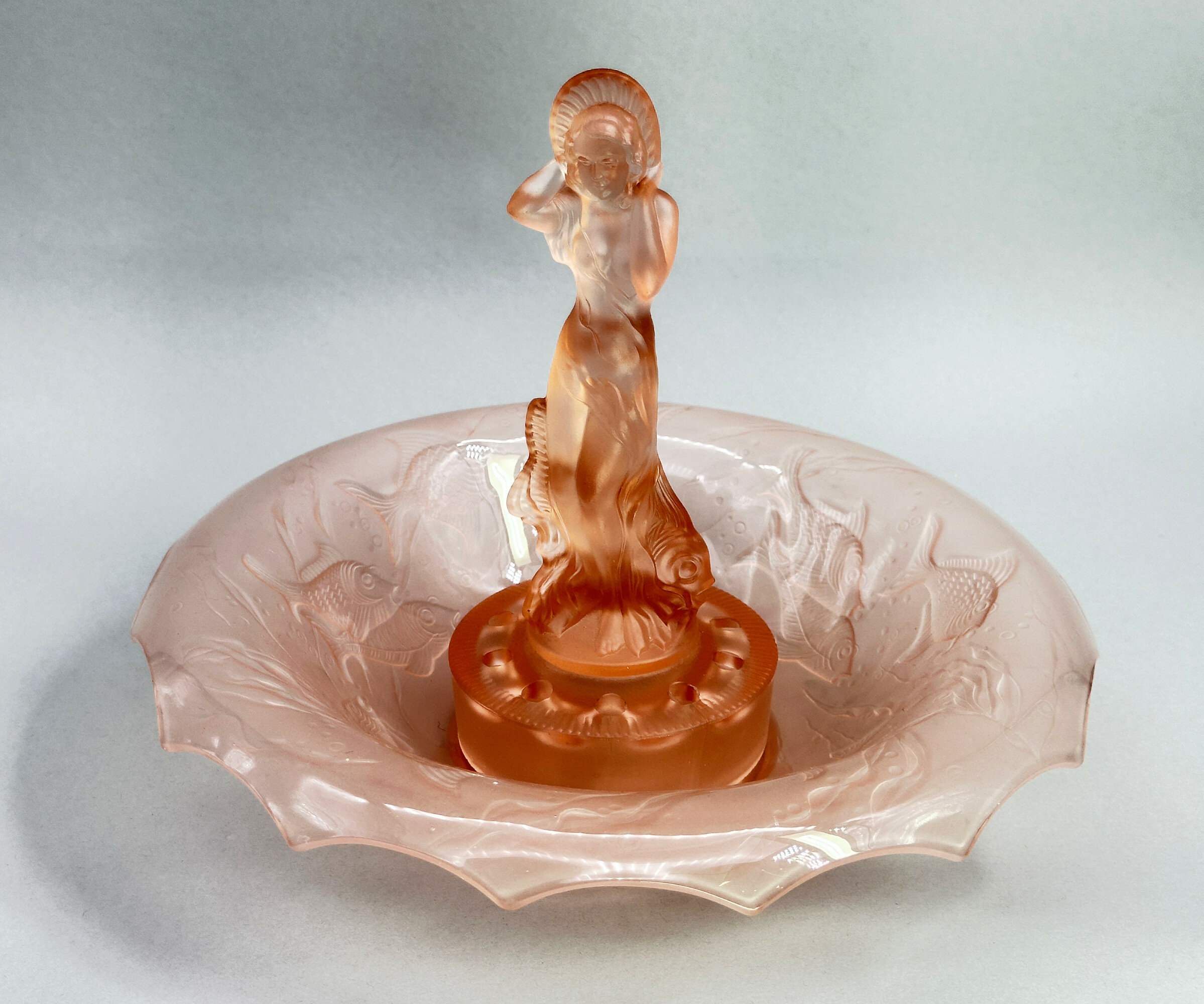
Pink Glass Centrepiece Set, Arabella, Walter and Sohne, 1930s
Price: £55The influence of Art Deco style of this piece is clear and it does indeed date to the 1930s. The model, termed ‘Arabella’ can apparently be seen in the 1934 catalogue of the German glass manufacturers Walther and Sohne, founded by August Walther in 1888 at Ottendorf-Akrilla near Dresden. In the 1930s the firm was famous for its Art Deco designs and also produced a version of ‘cloud glass’ which at one time was held to be exclusive to the English manufacturer Davidson. But some of the English glass makers also drew on their German rival’s work such that Walther and Sohne patented some of their designs in the UK in 1937, presumably to protect their work. This centrepiece set is a classic example of Walther and Sohne’s pre war productions and a distinctive example of Art Deco glassware.
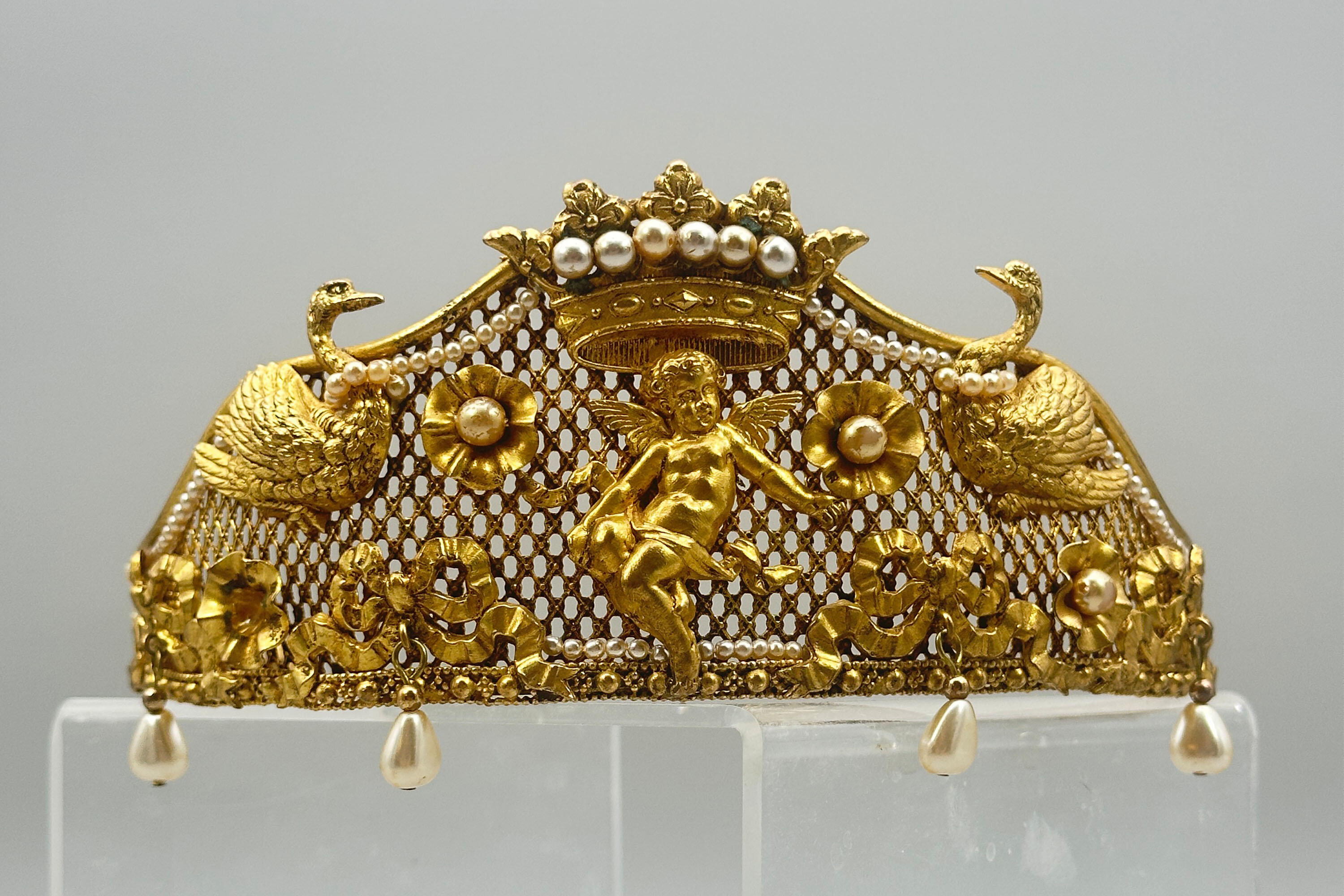
Unique Butler & Wilson Neoclassical Tiara 1980s
Price: £195As most people who love costume jewellery know, Butler & Wilson have been and are a powerhouse British brand that have been designing costume jewellery since the 1970s. Pieces like this one are quite collectable due to their age and design. There are many collectors around the world that collect both vintage and new pieces. This one is for you!
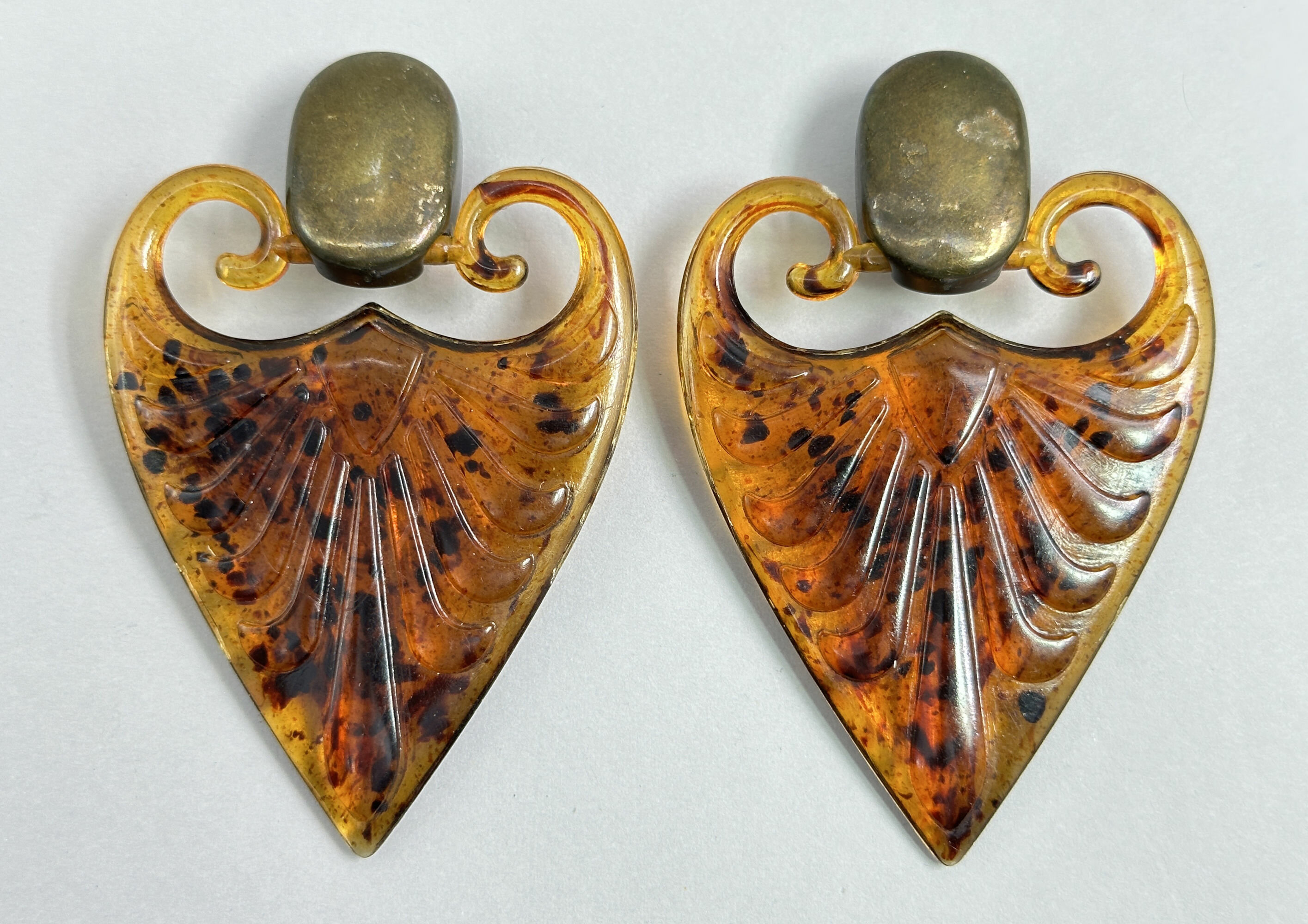
Pair of Italian faux tortoiseshell earrings, 1980s
Price: £20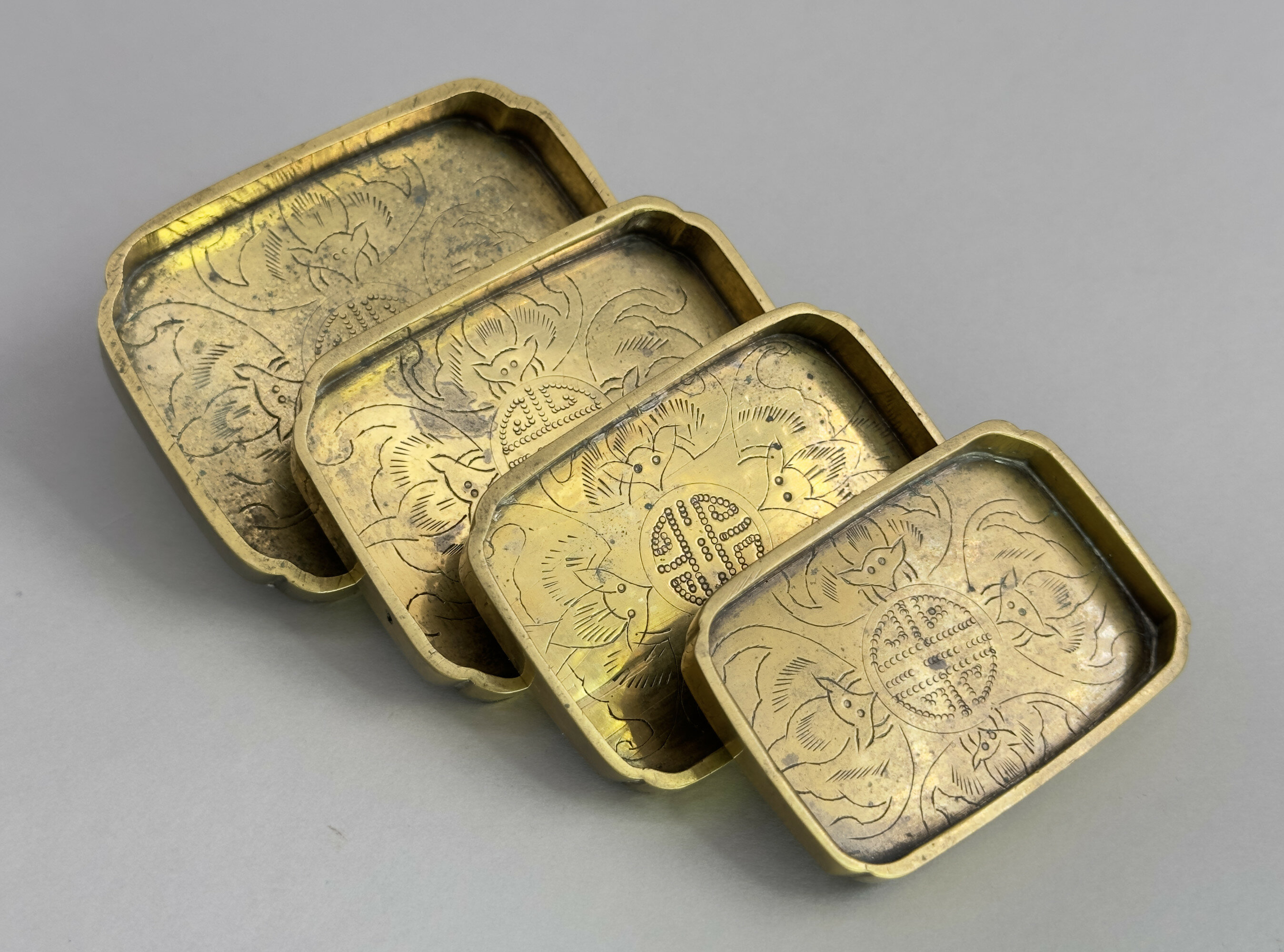
Nesting Set of Four Small Brass Trays with an engraved designs of Bats, Chinese C20th
Price: £30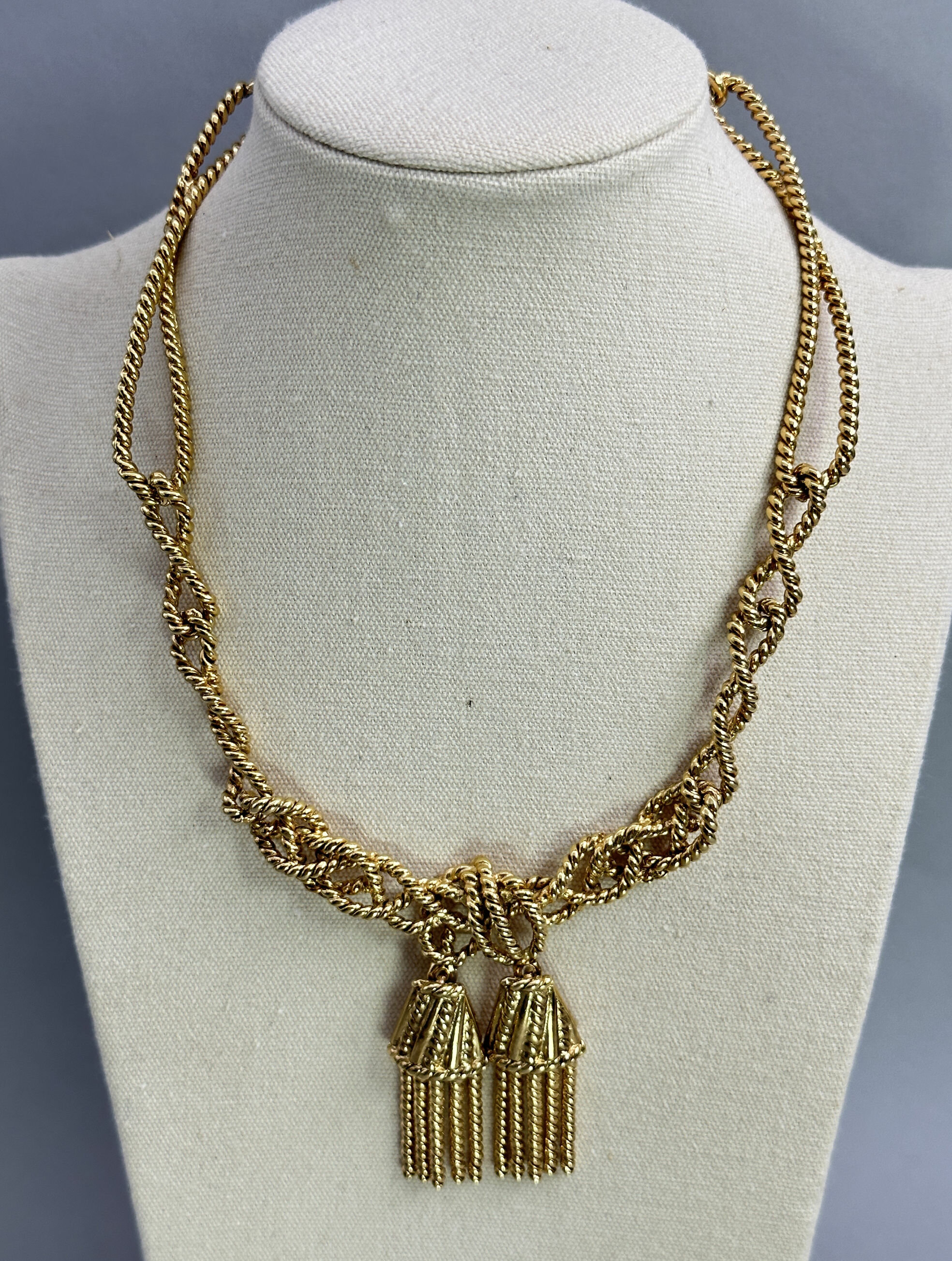
Stunning rope and tassel necklace, signed, c1990
Price: £45